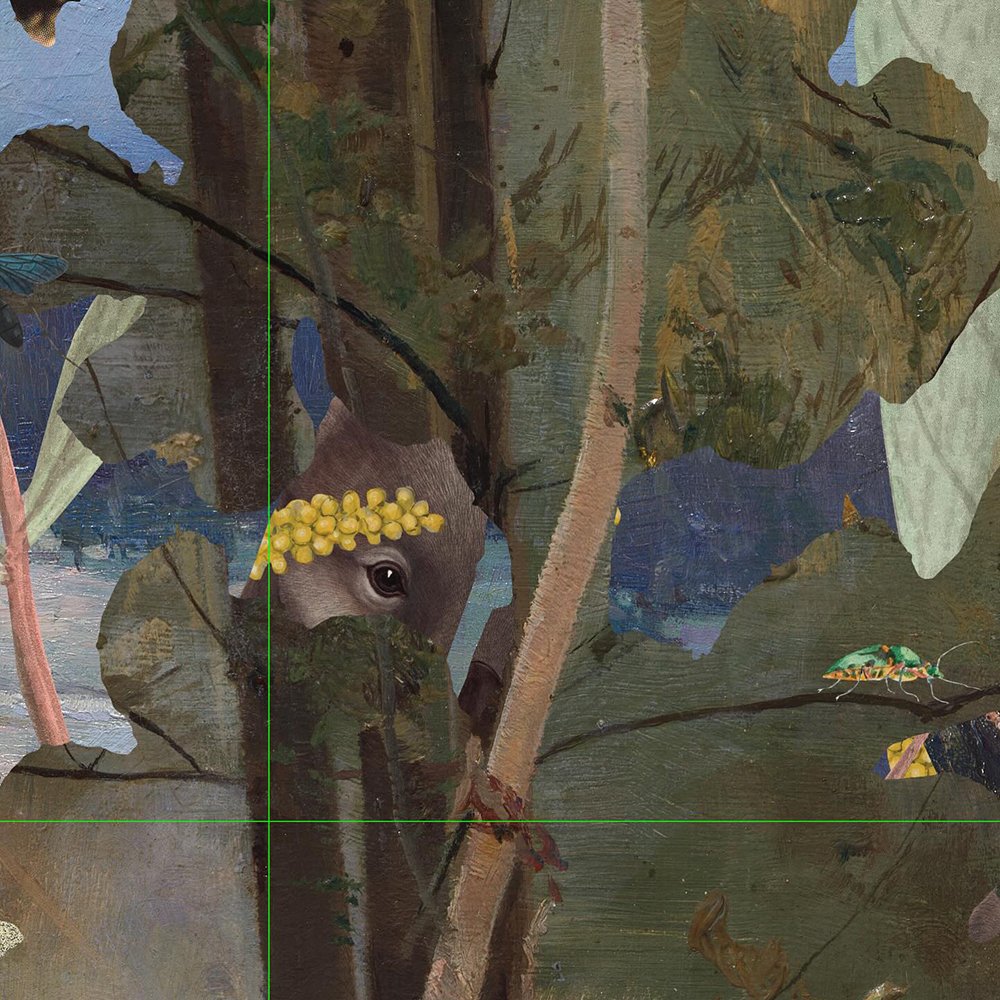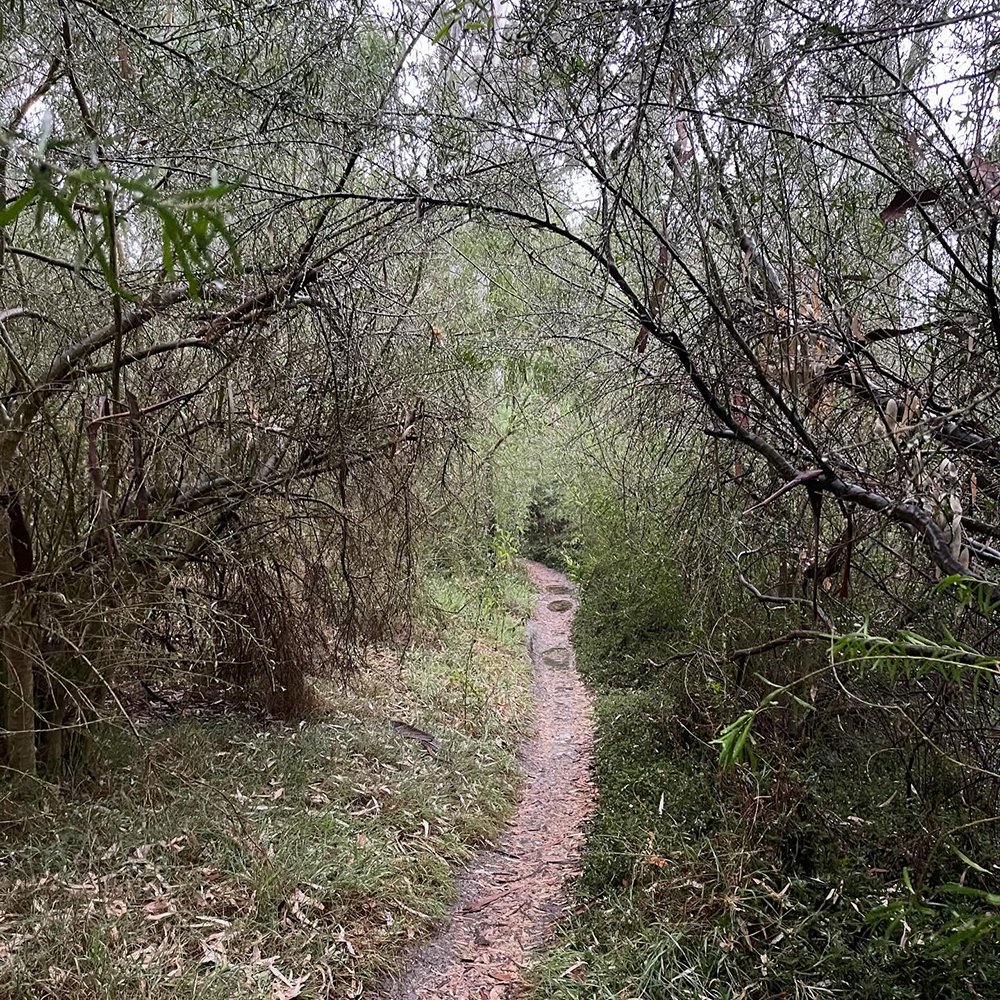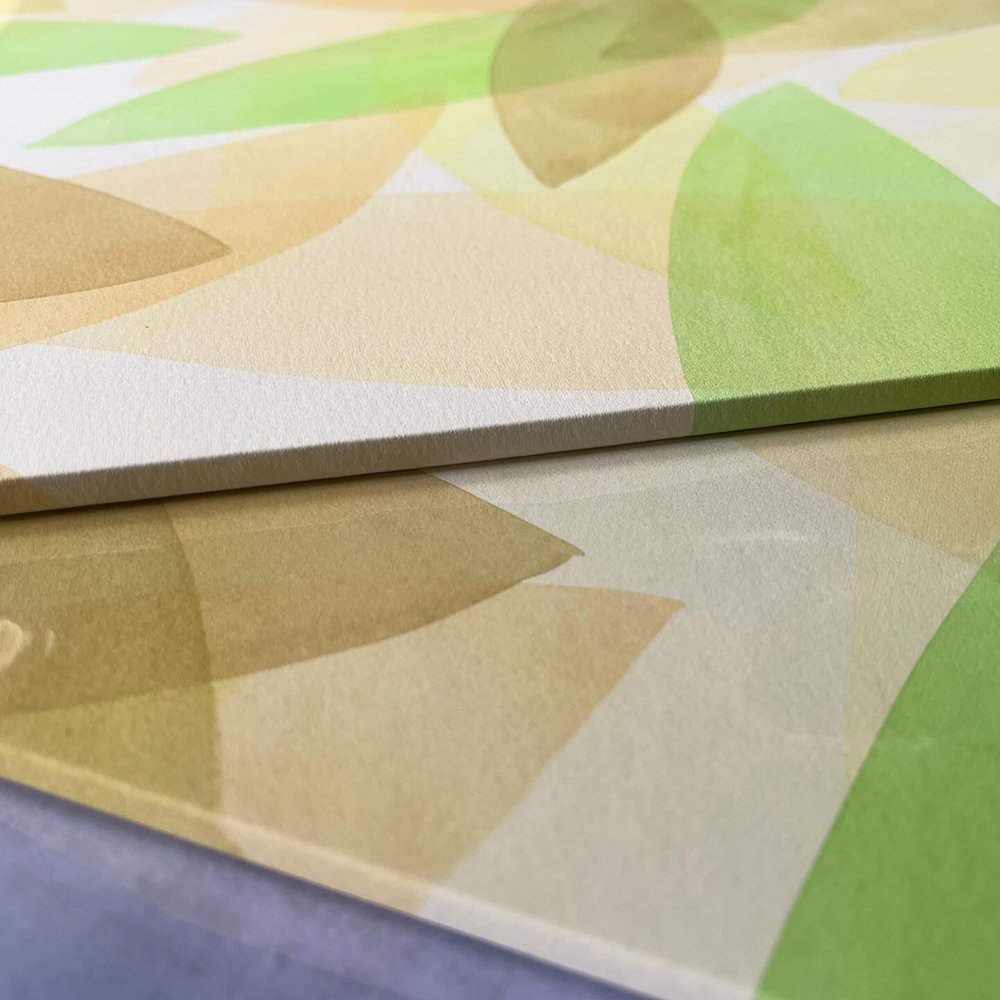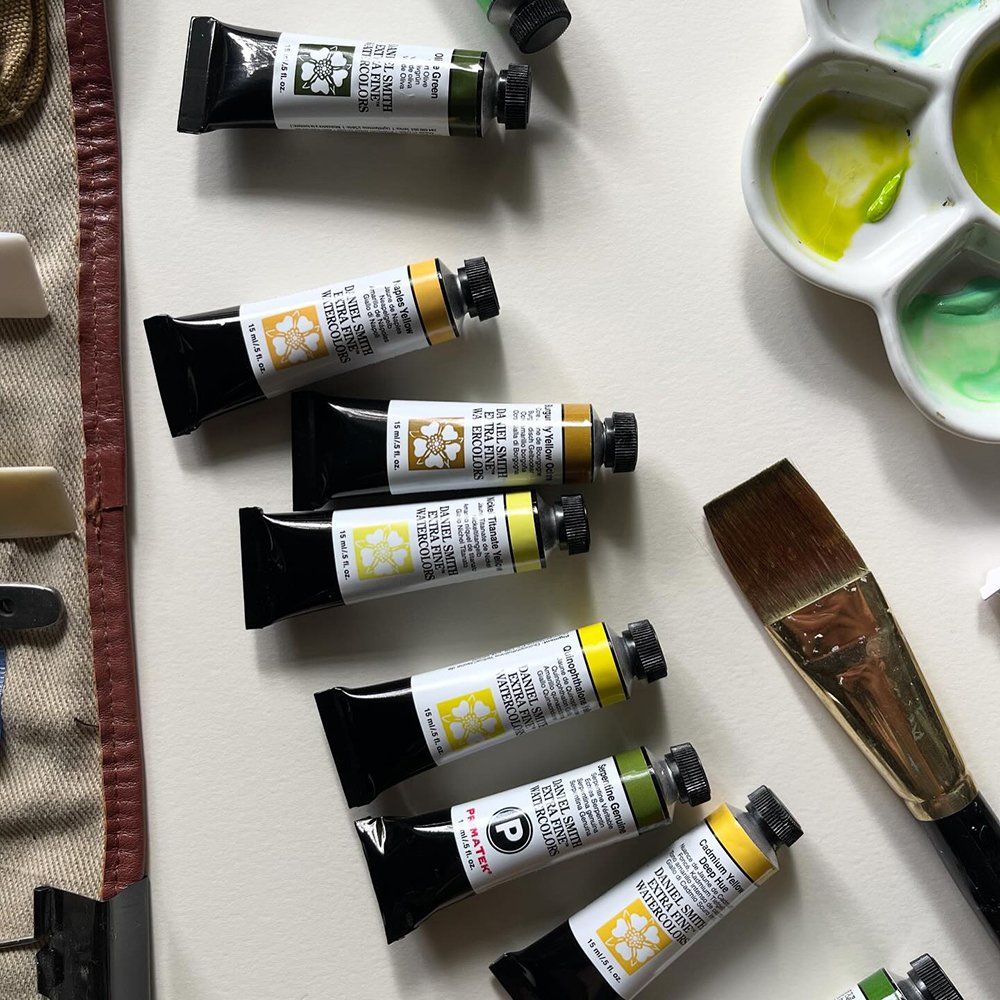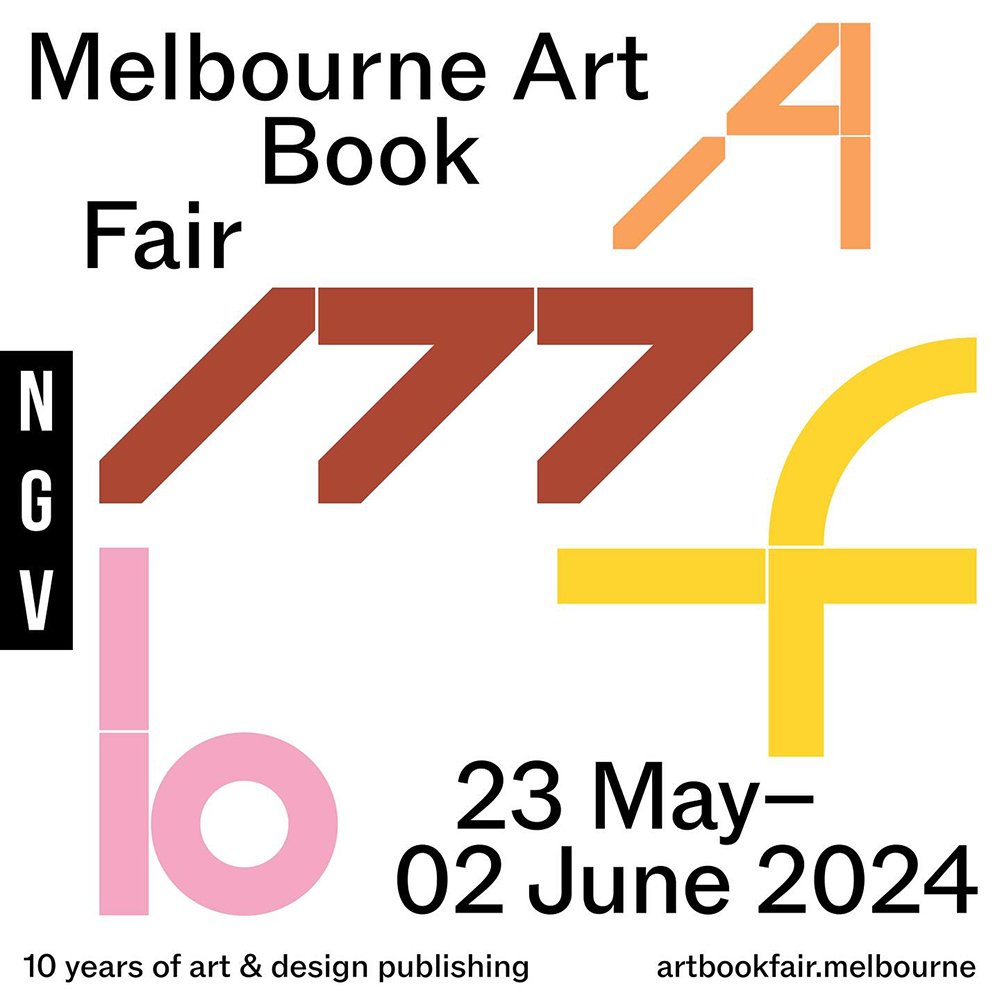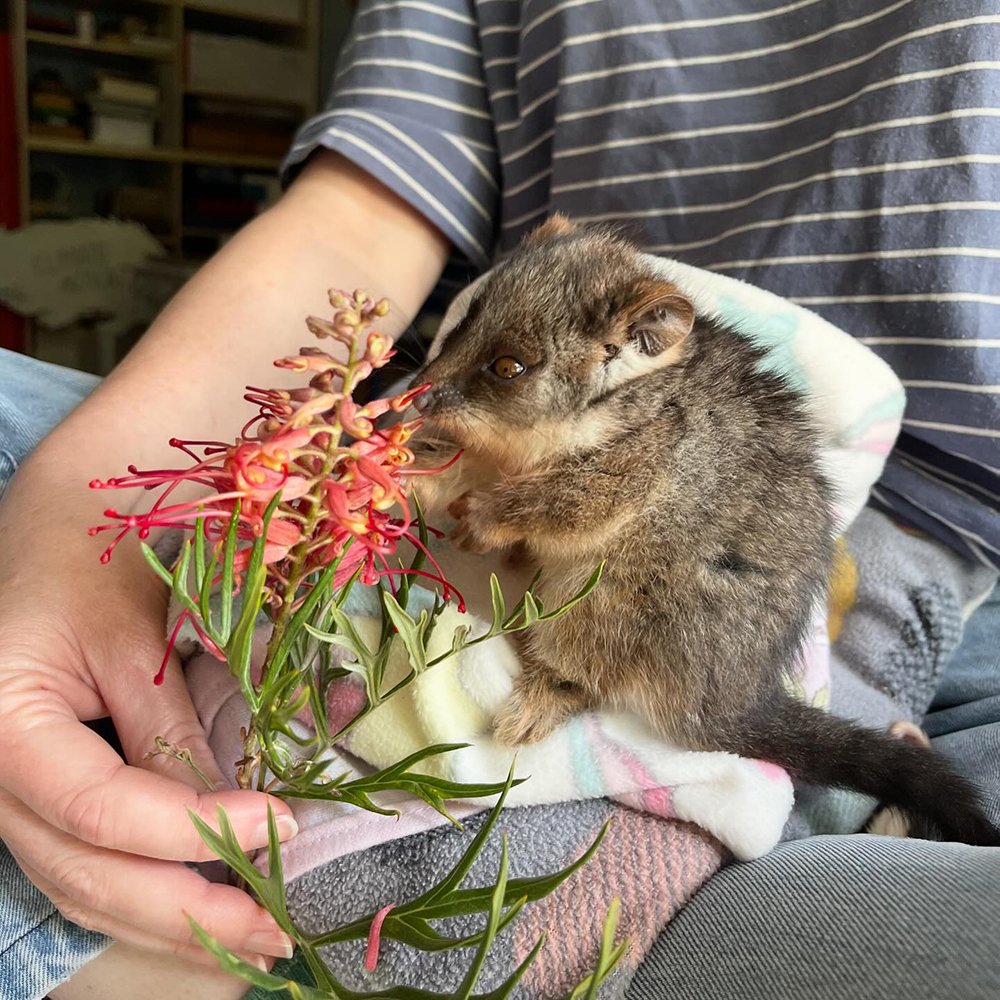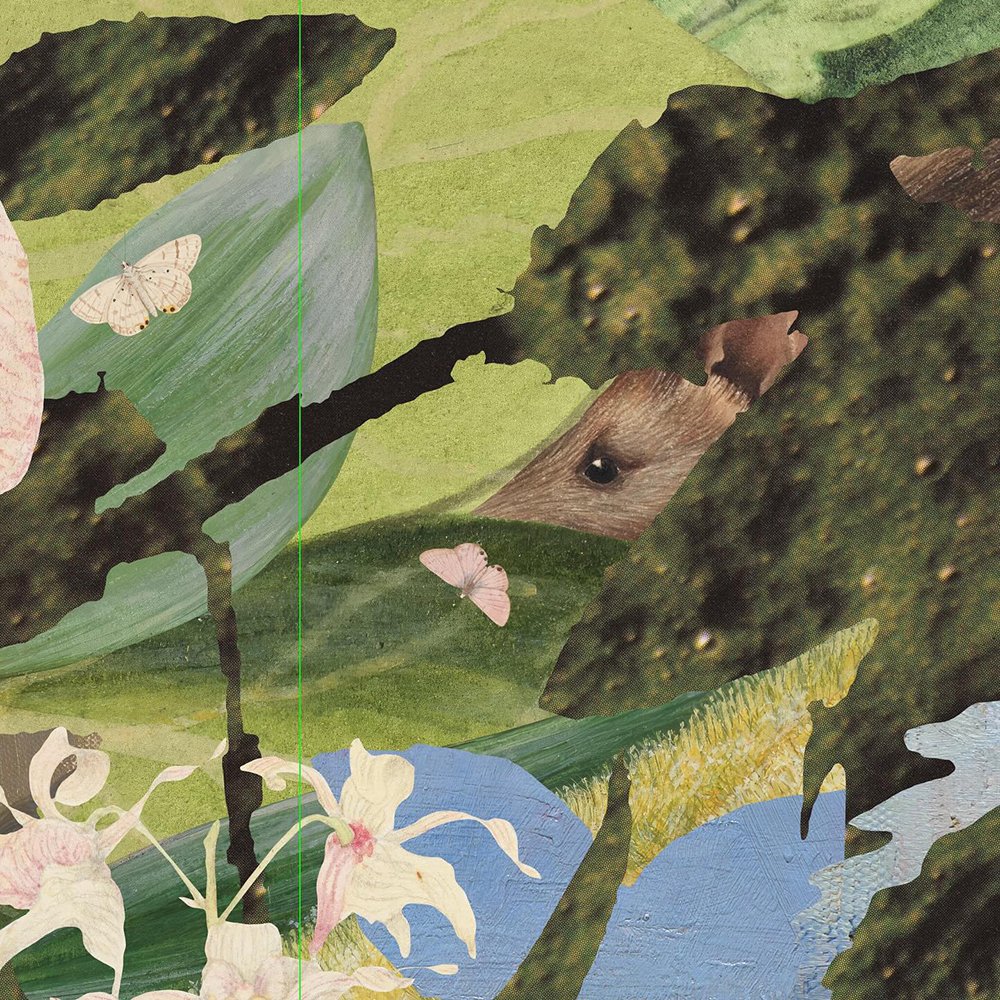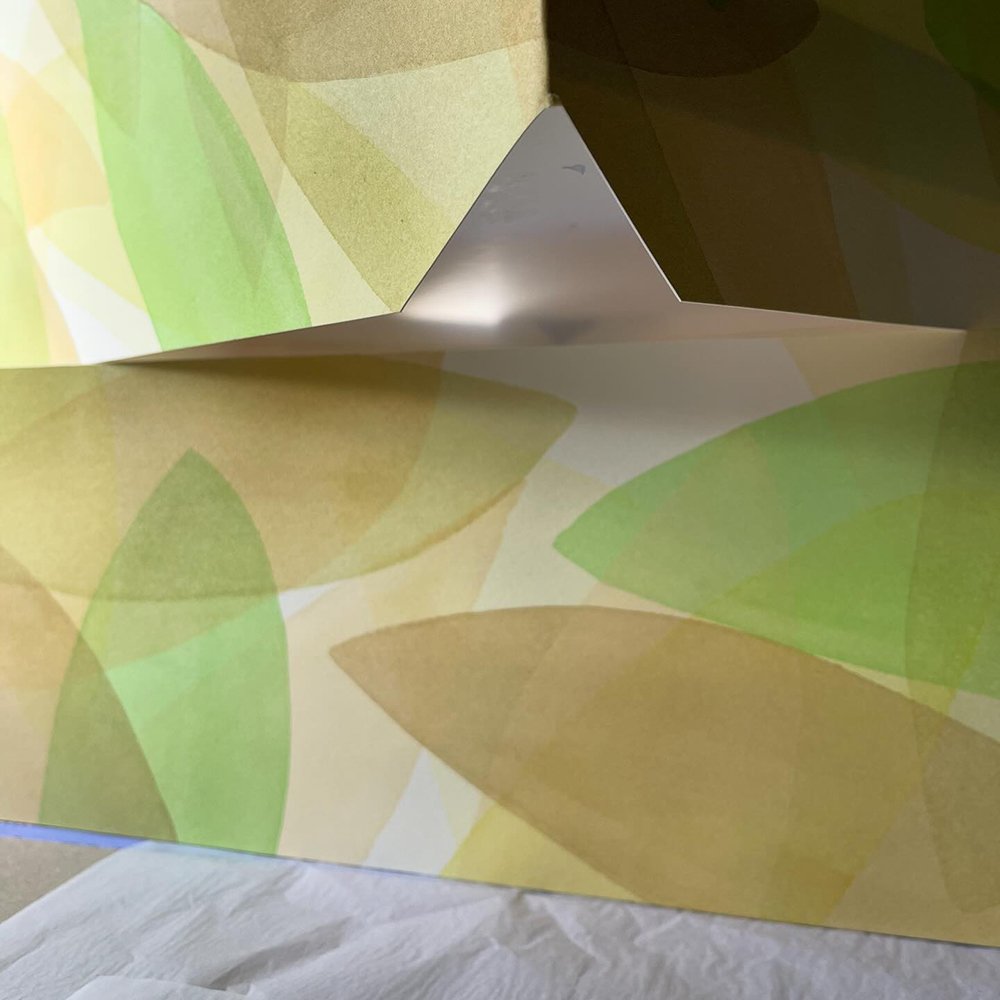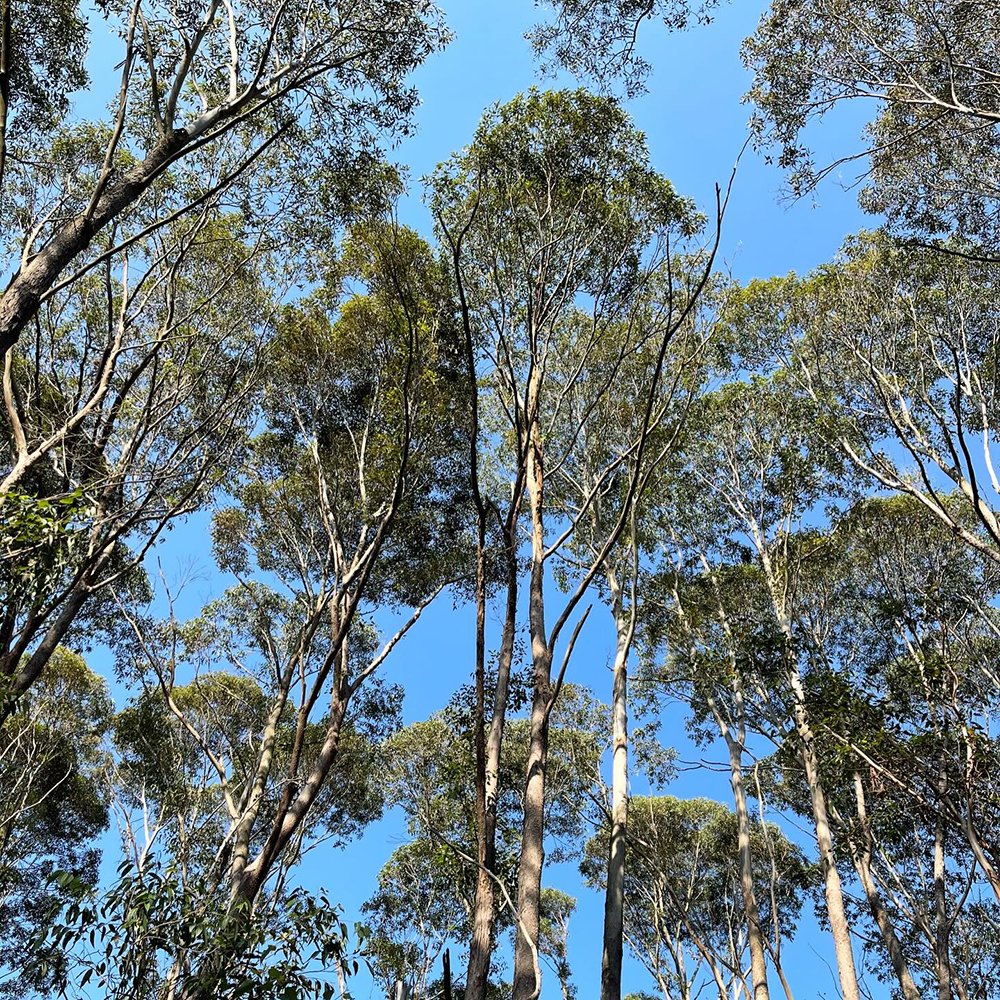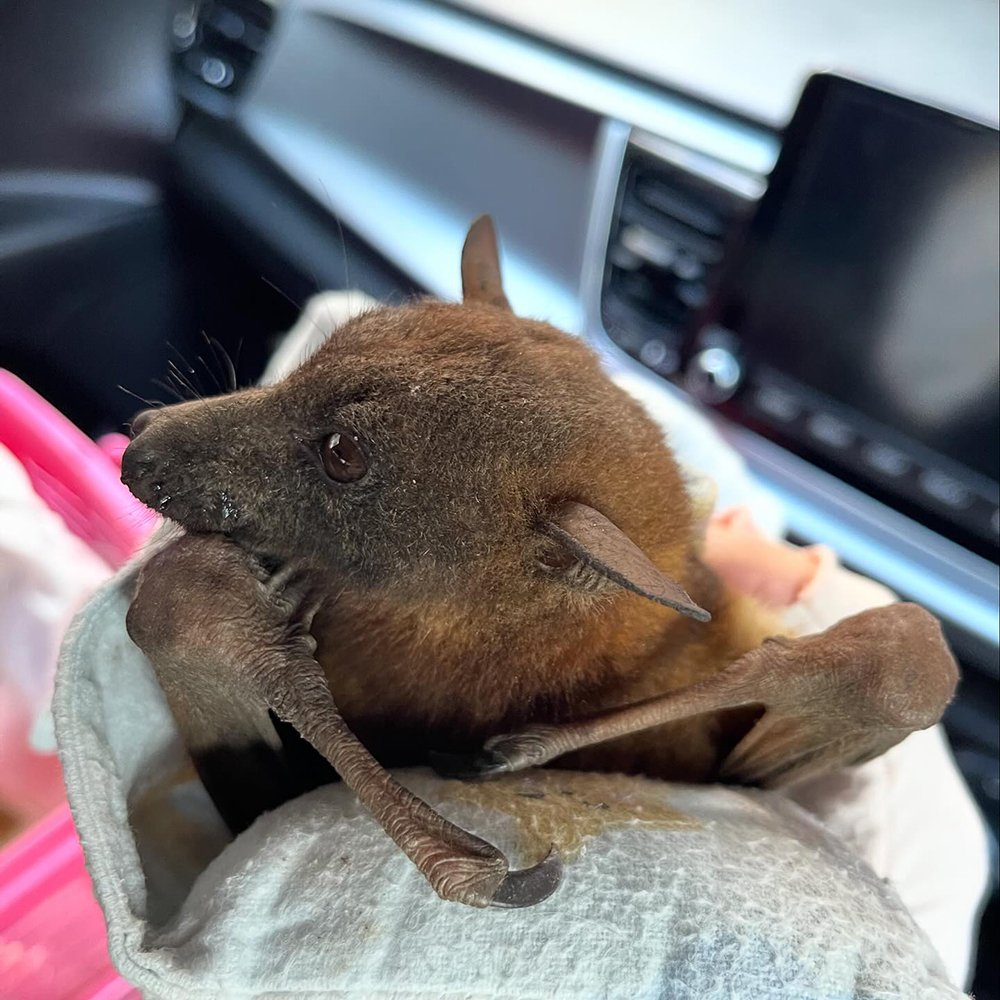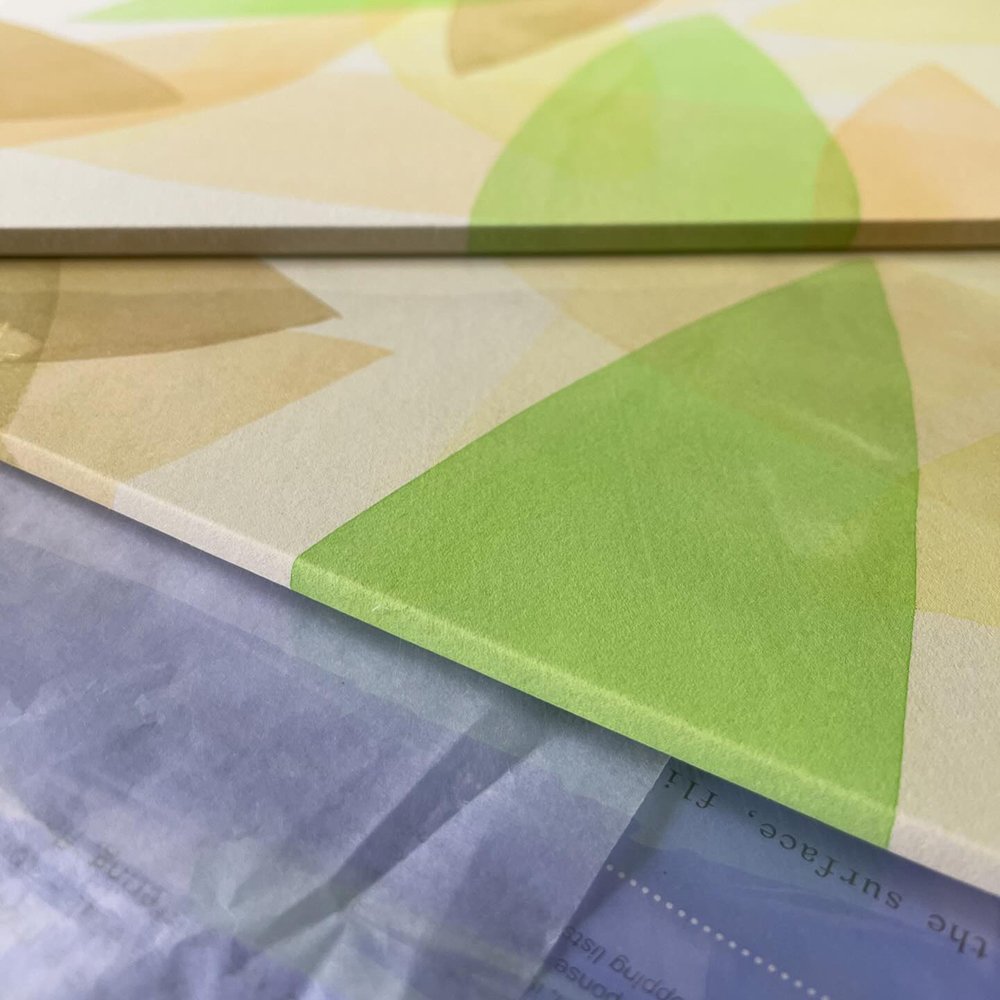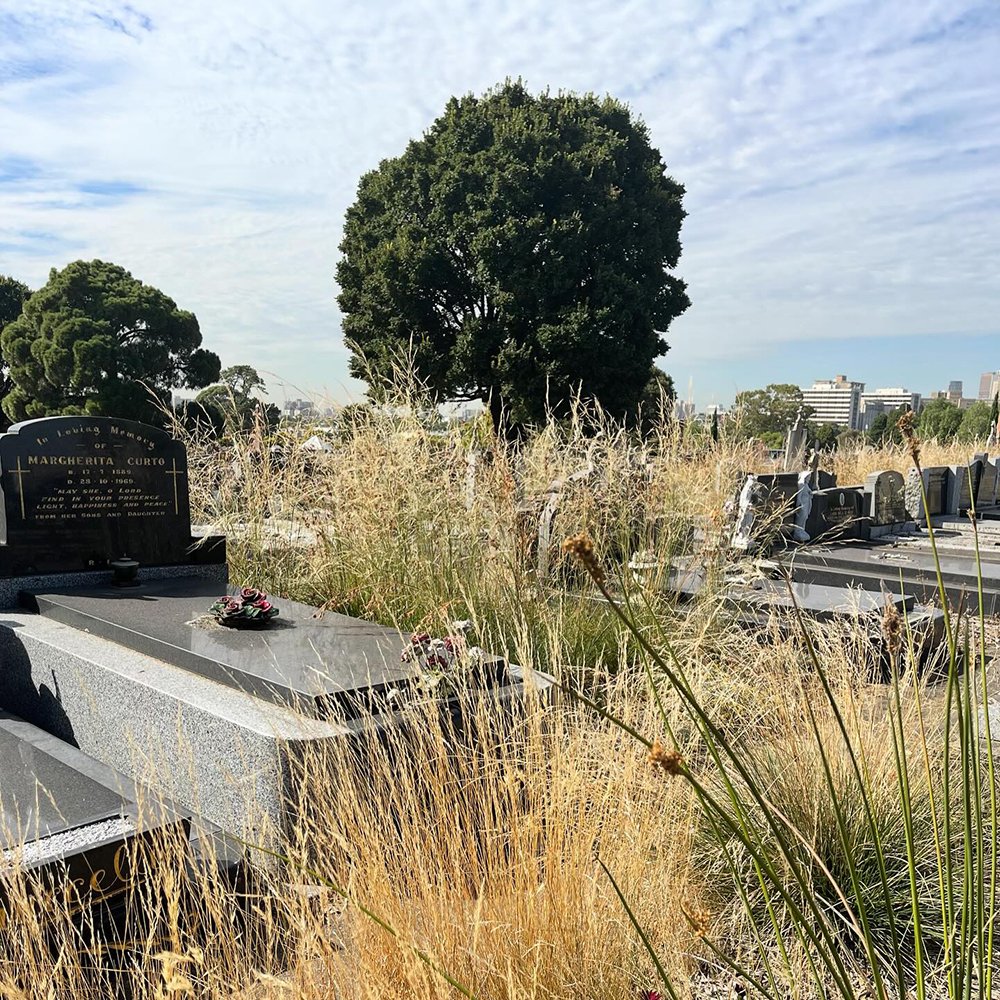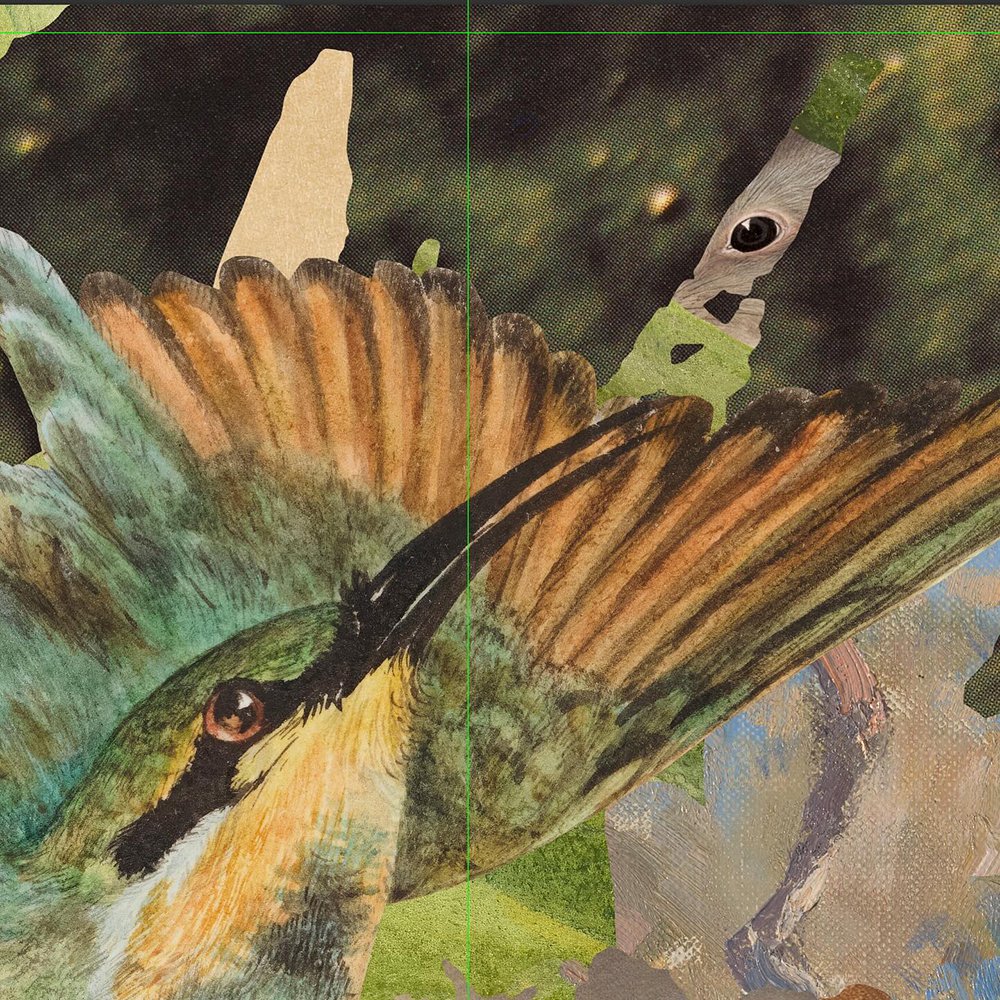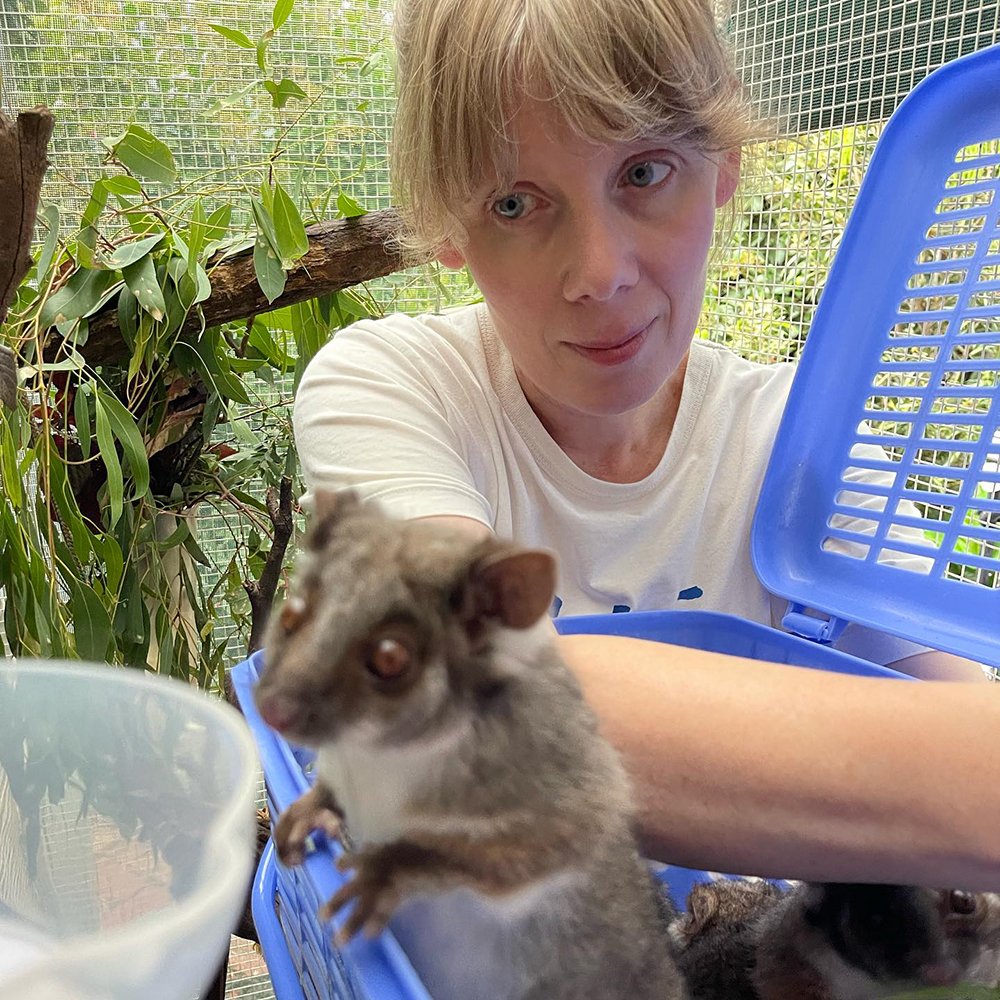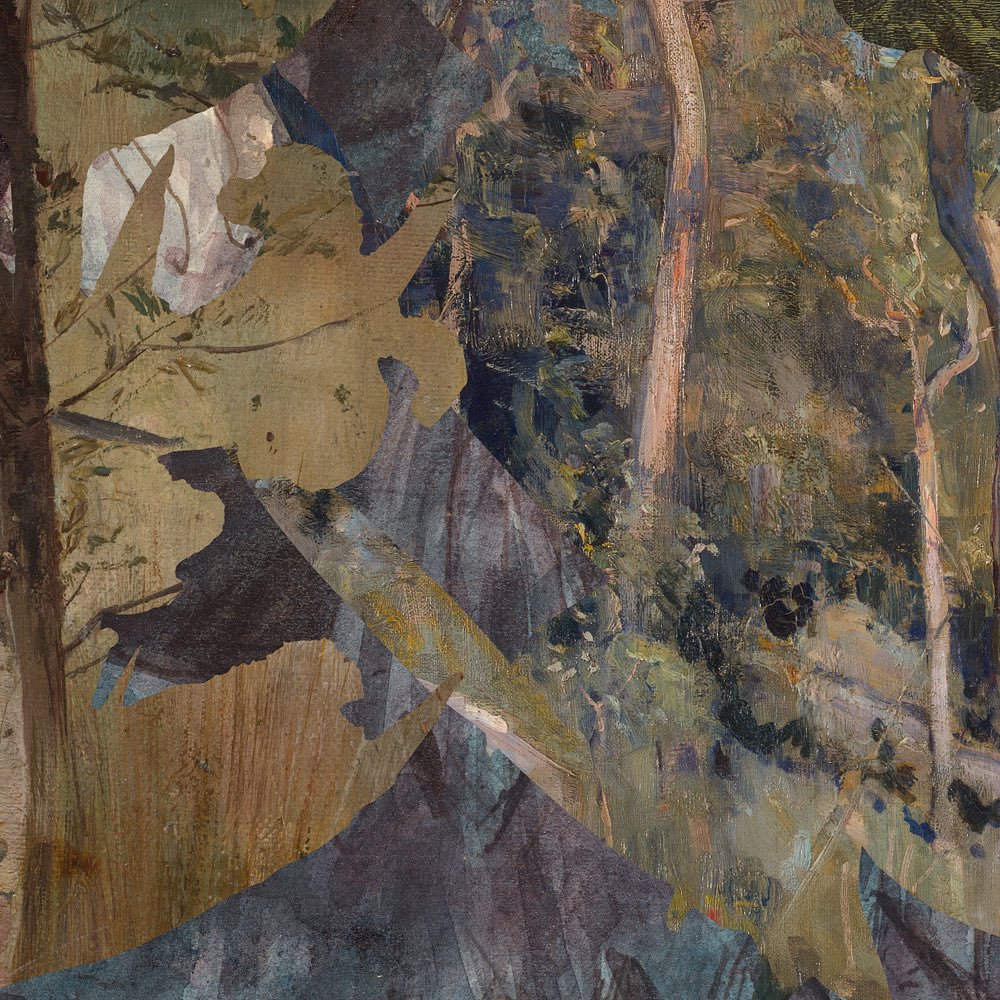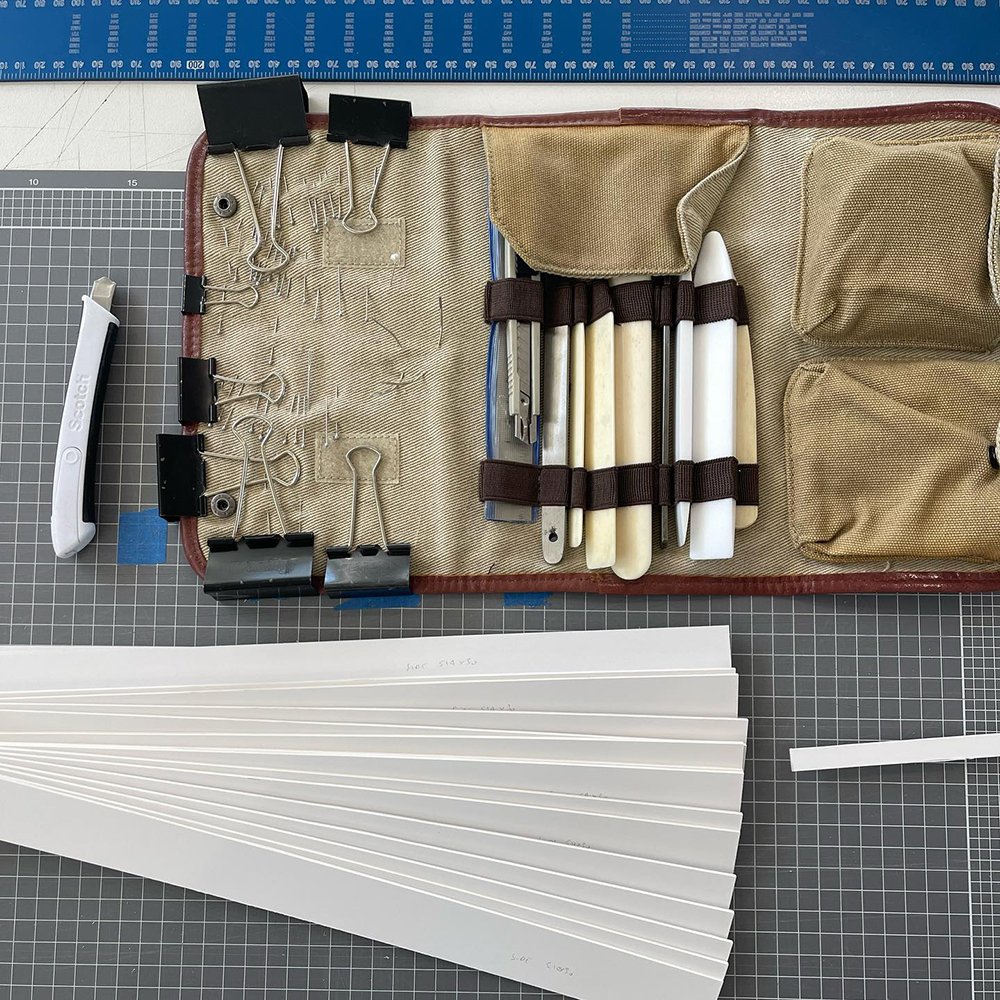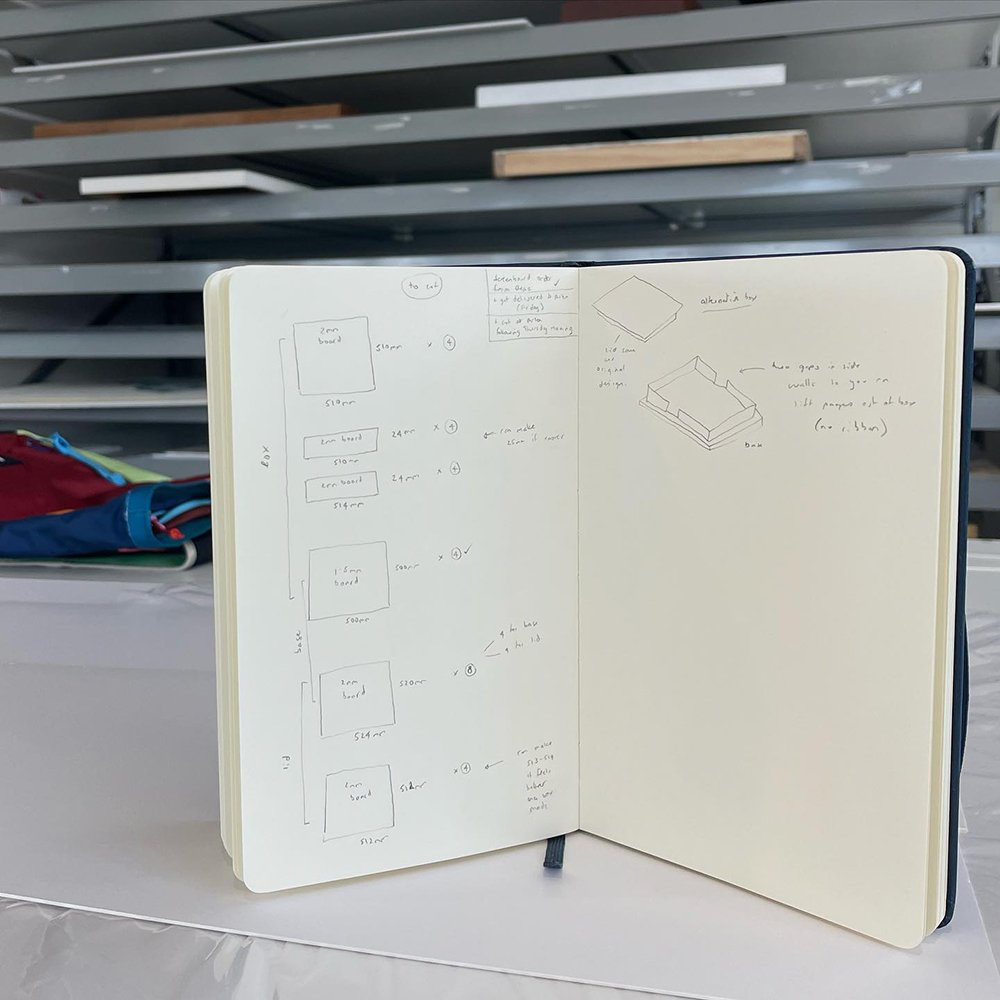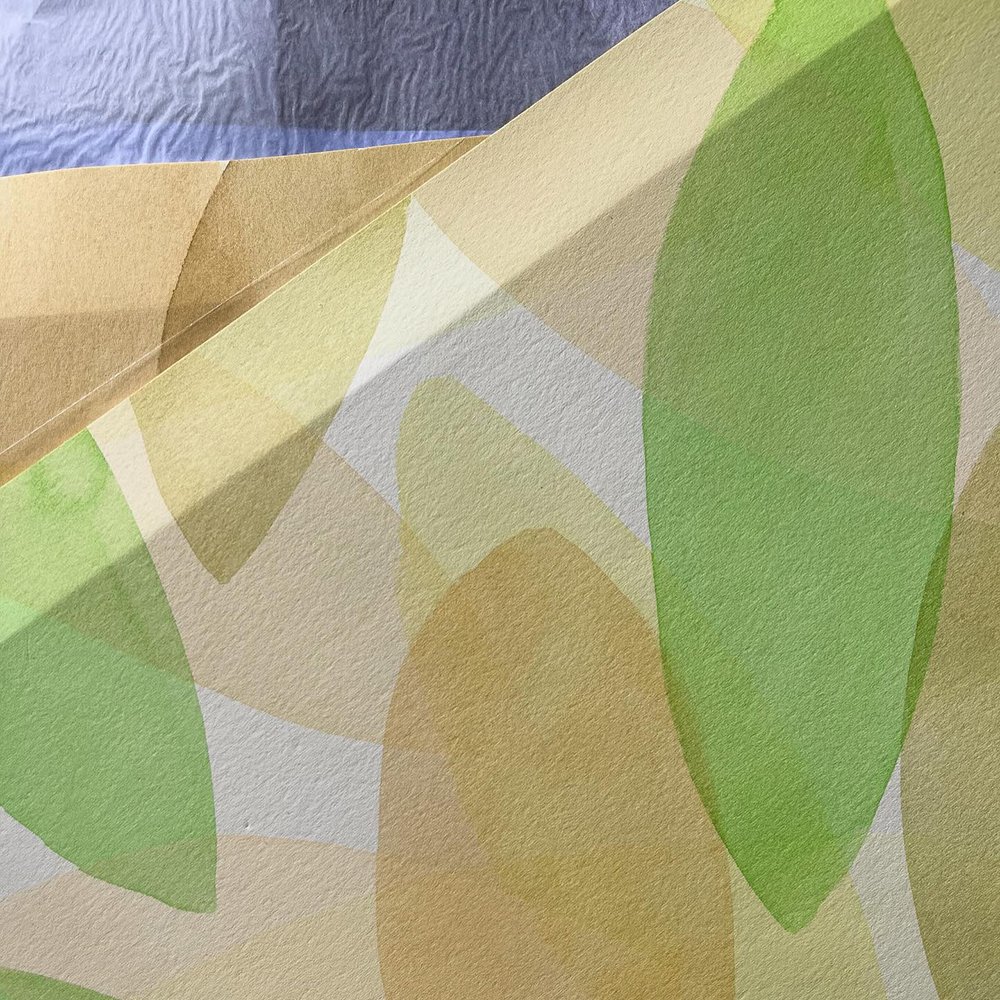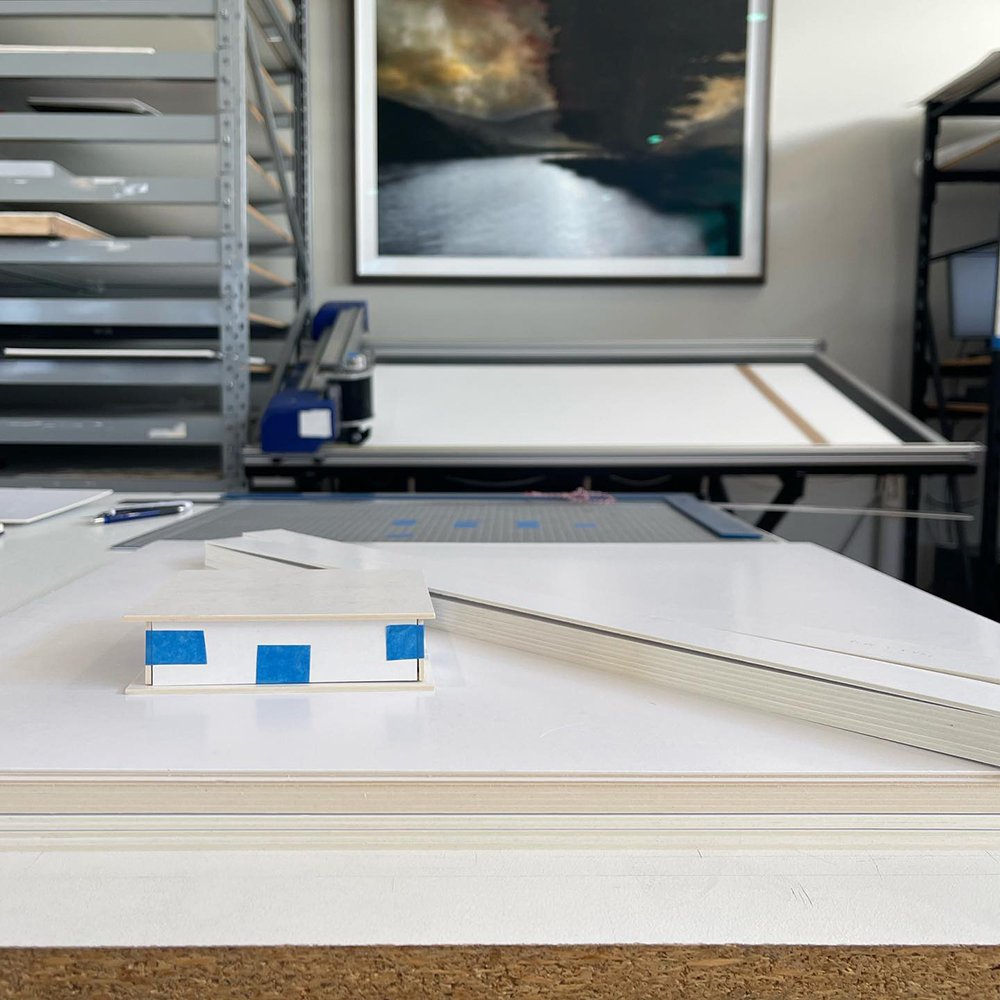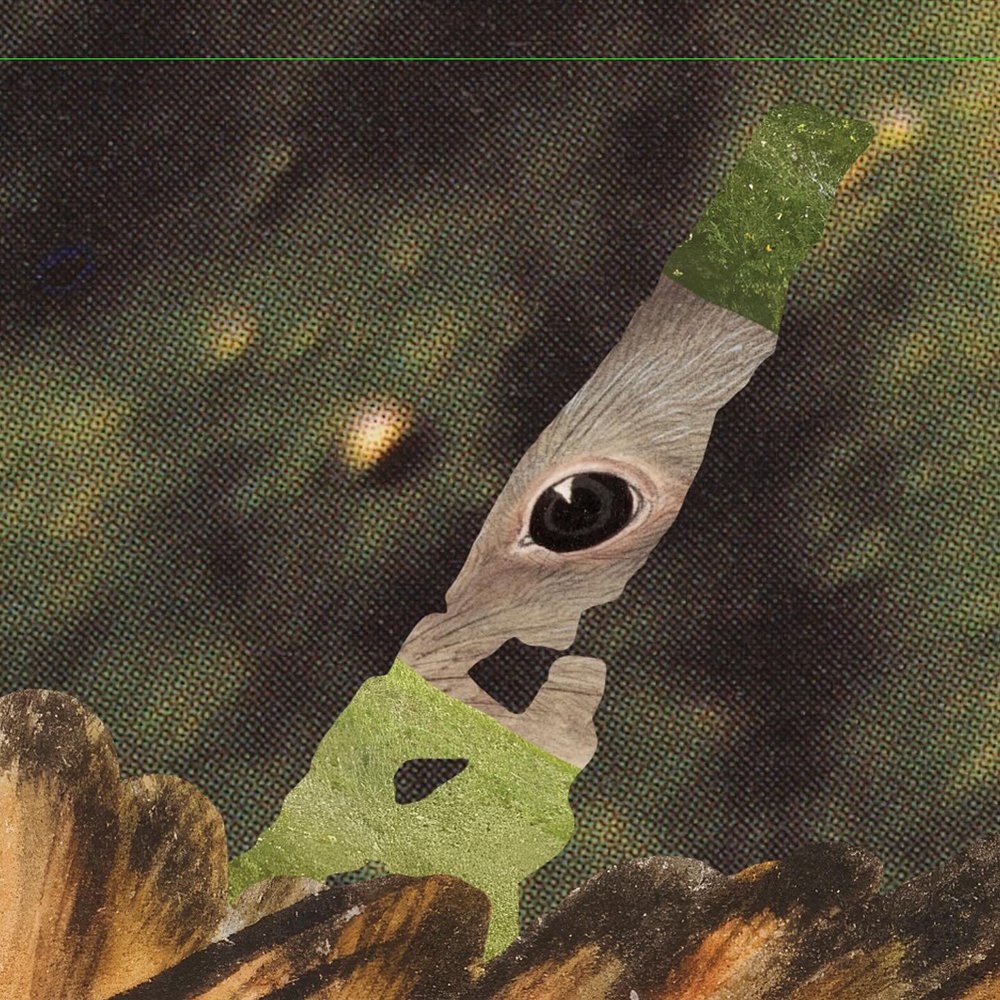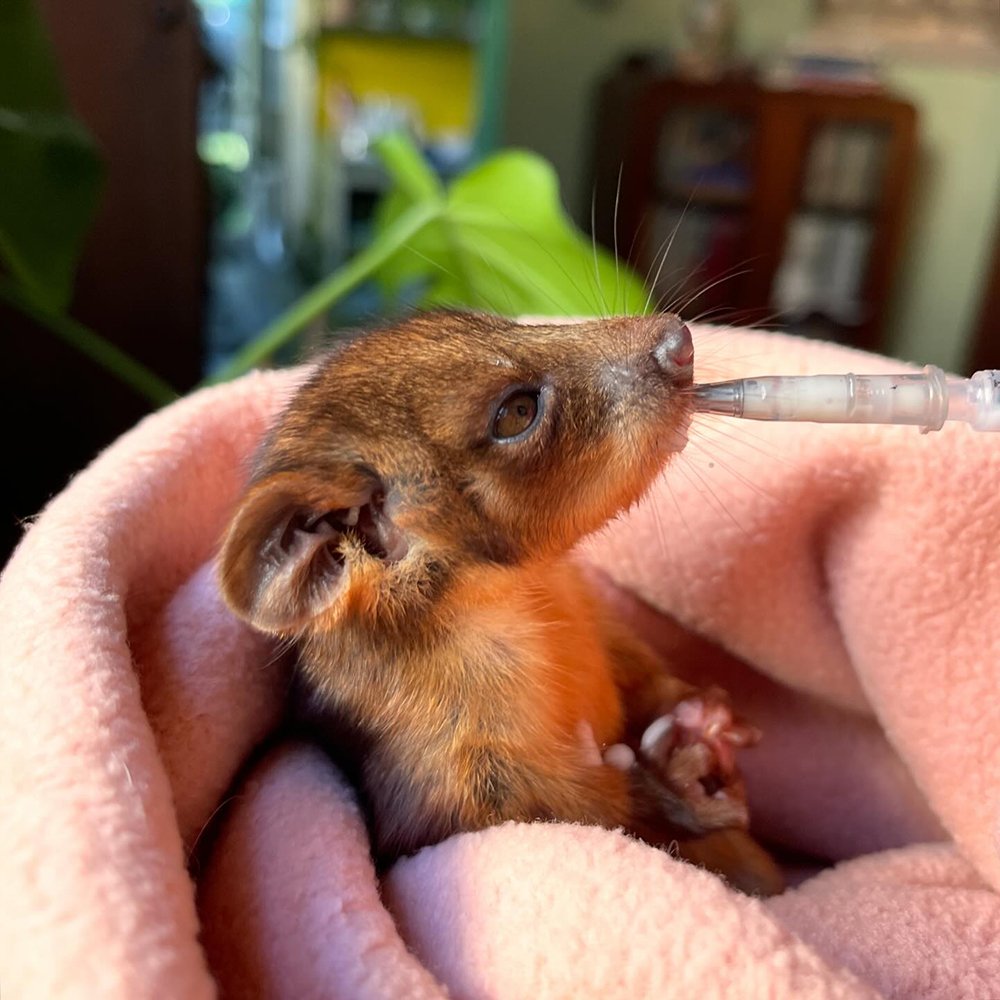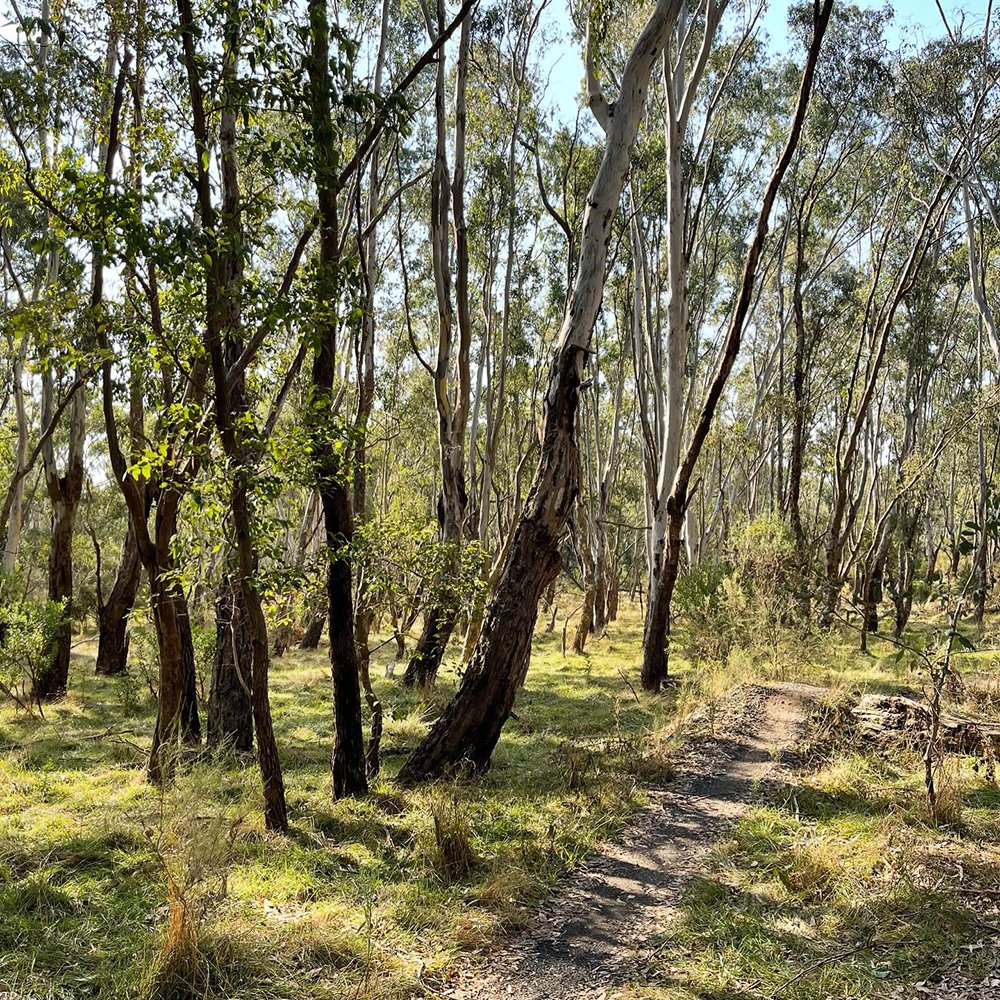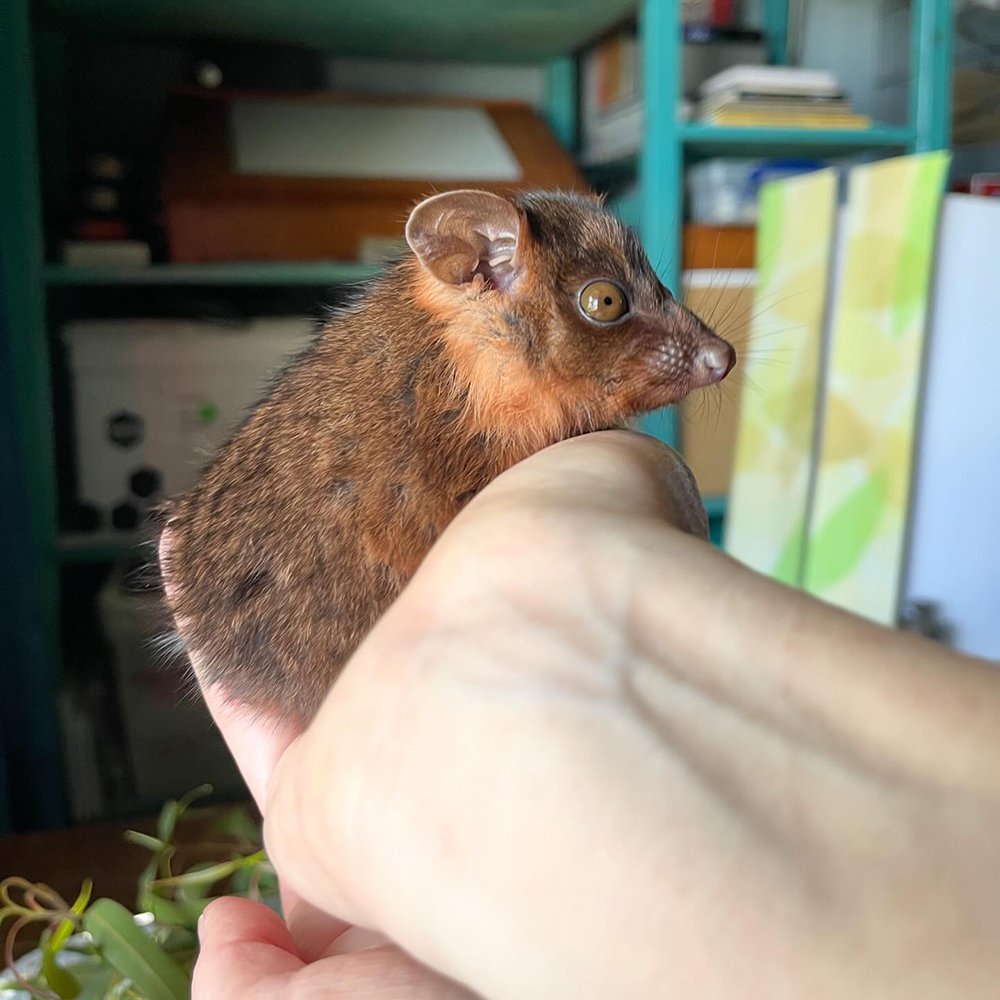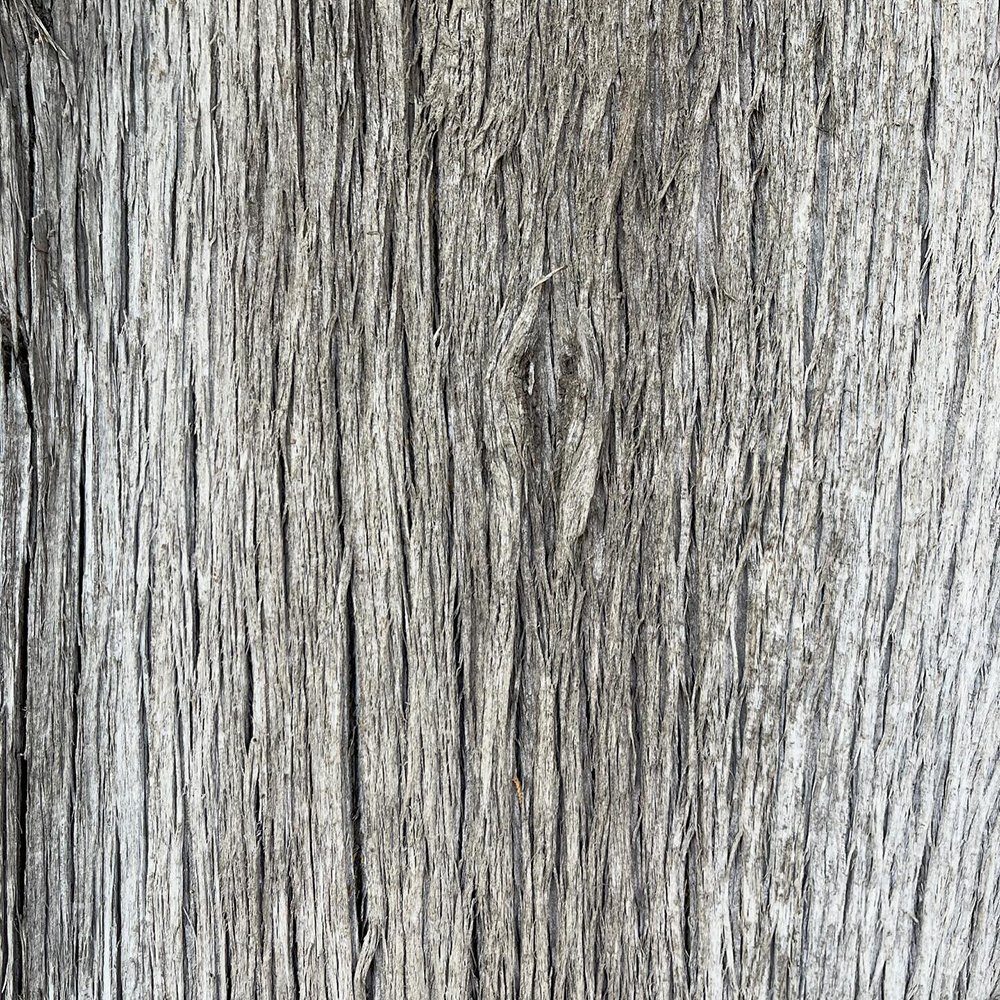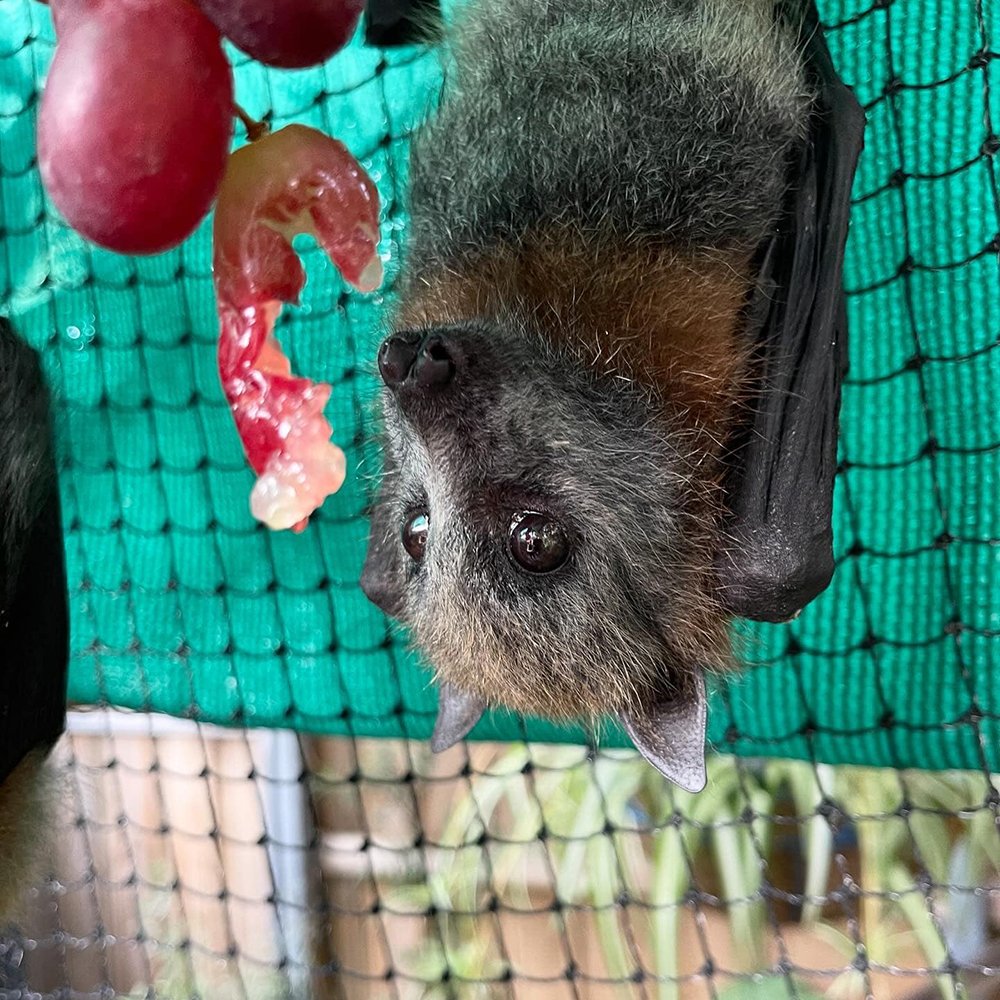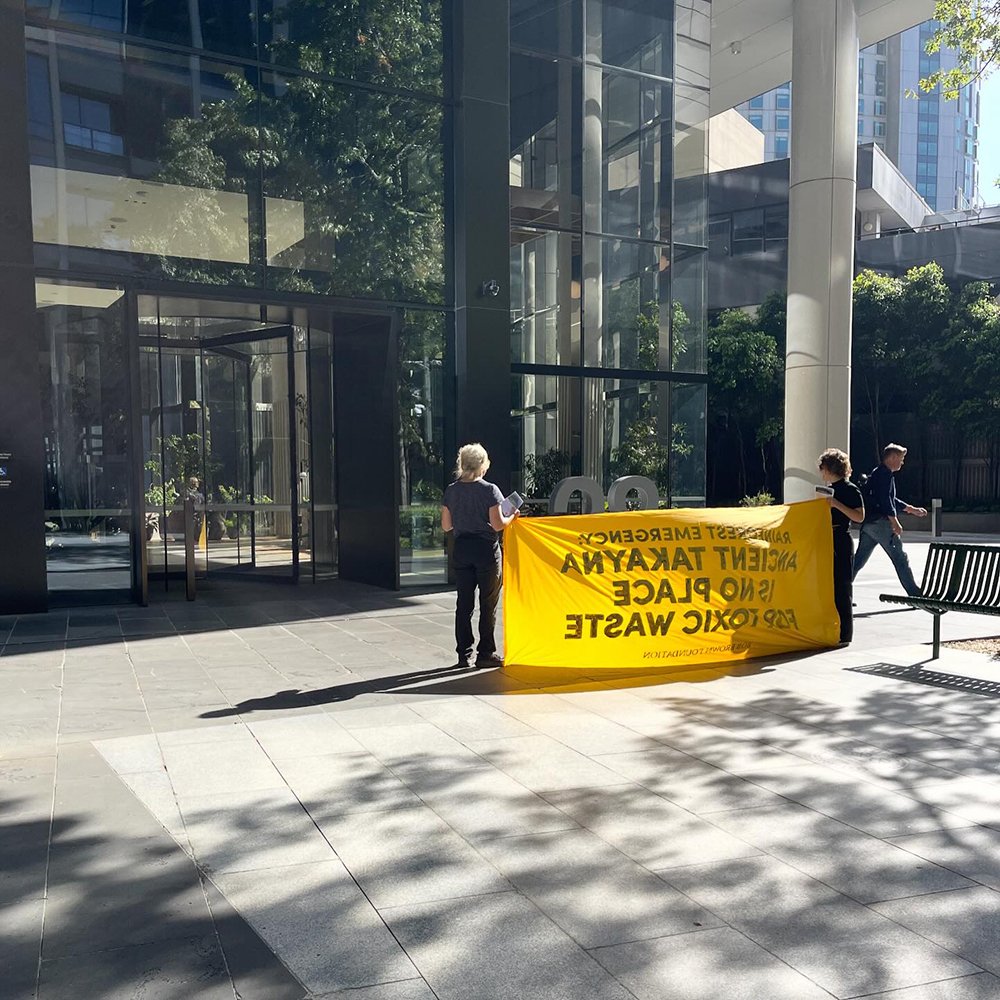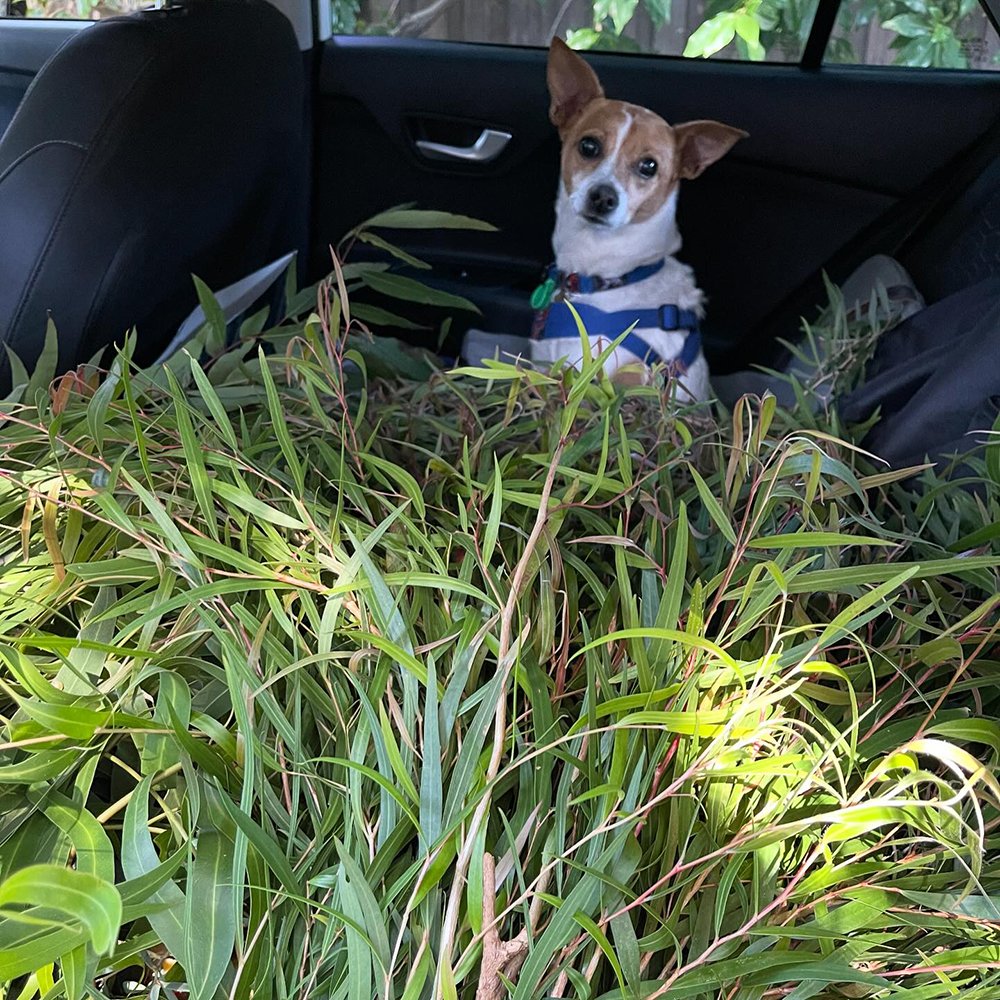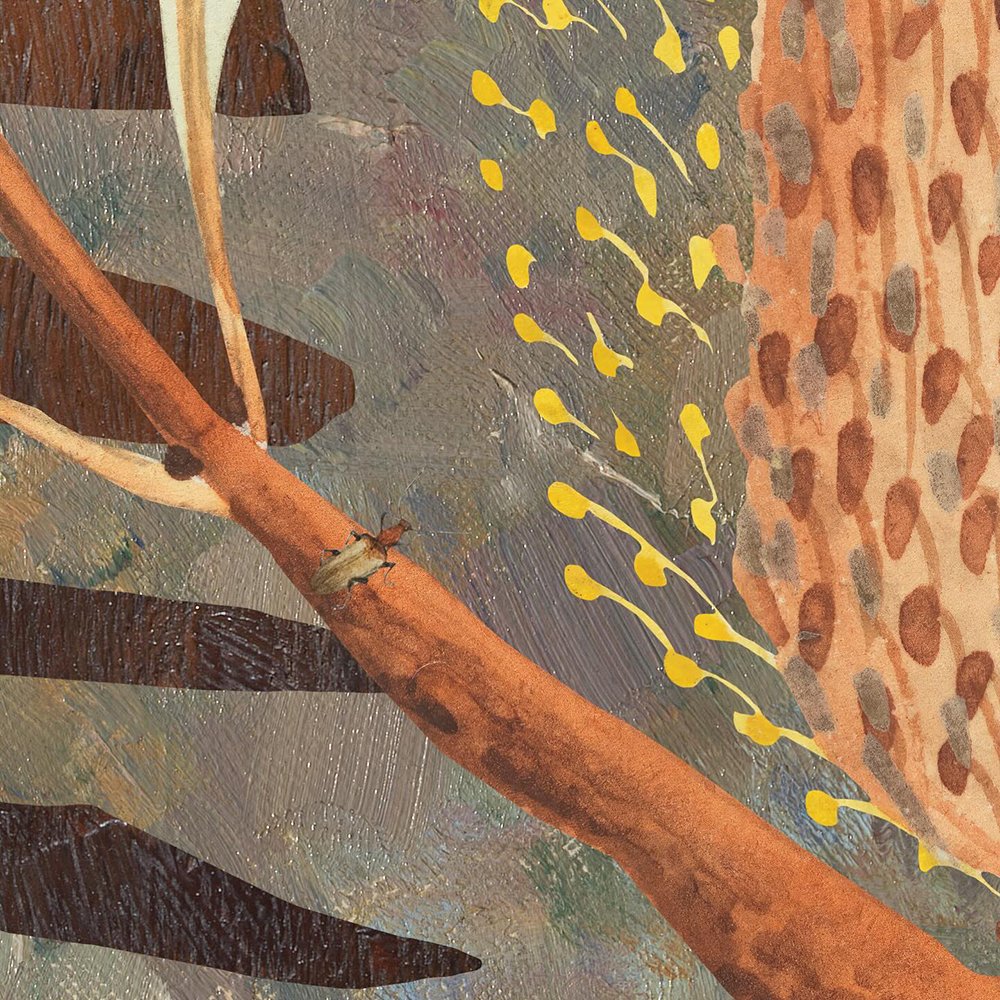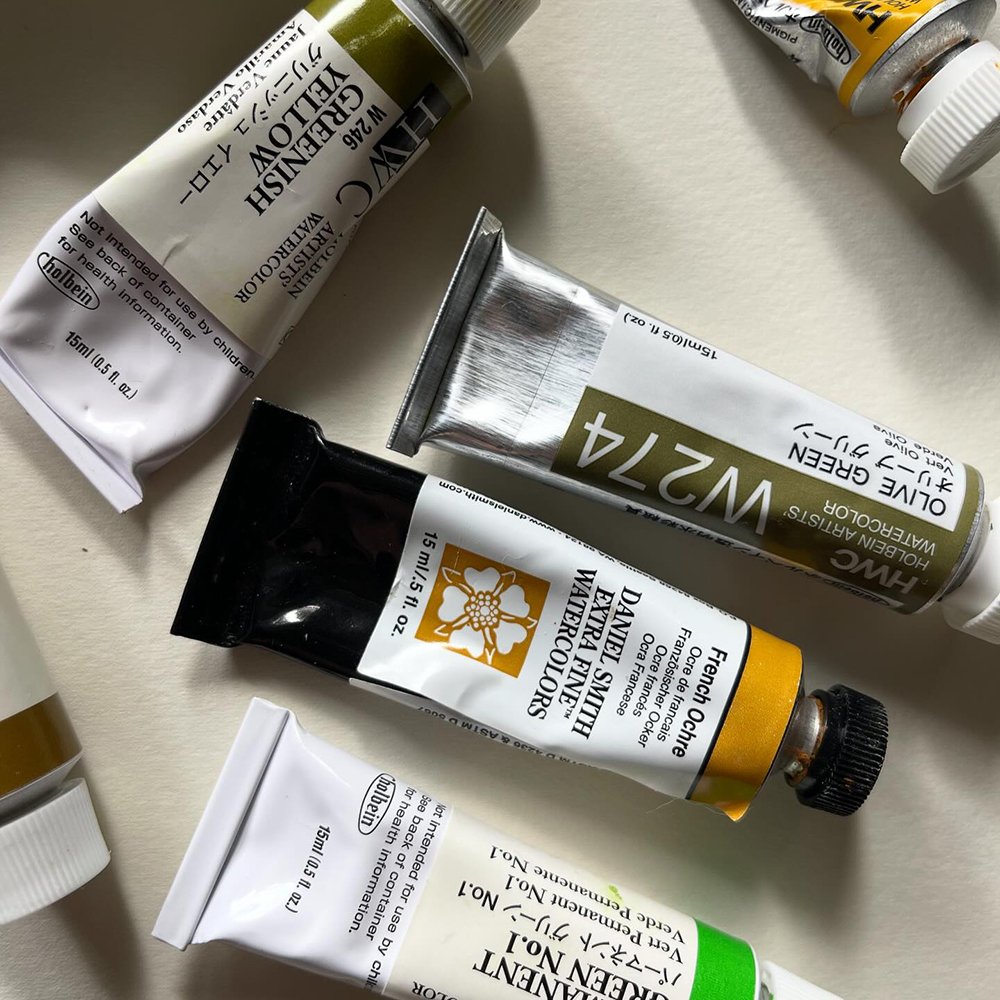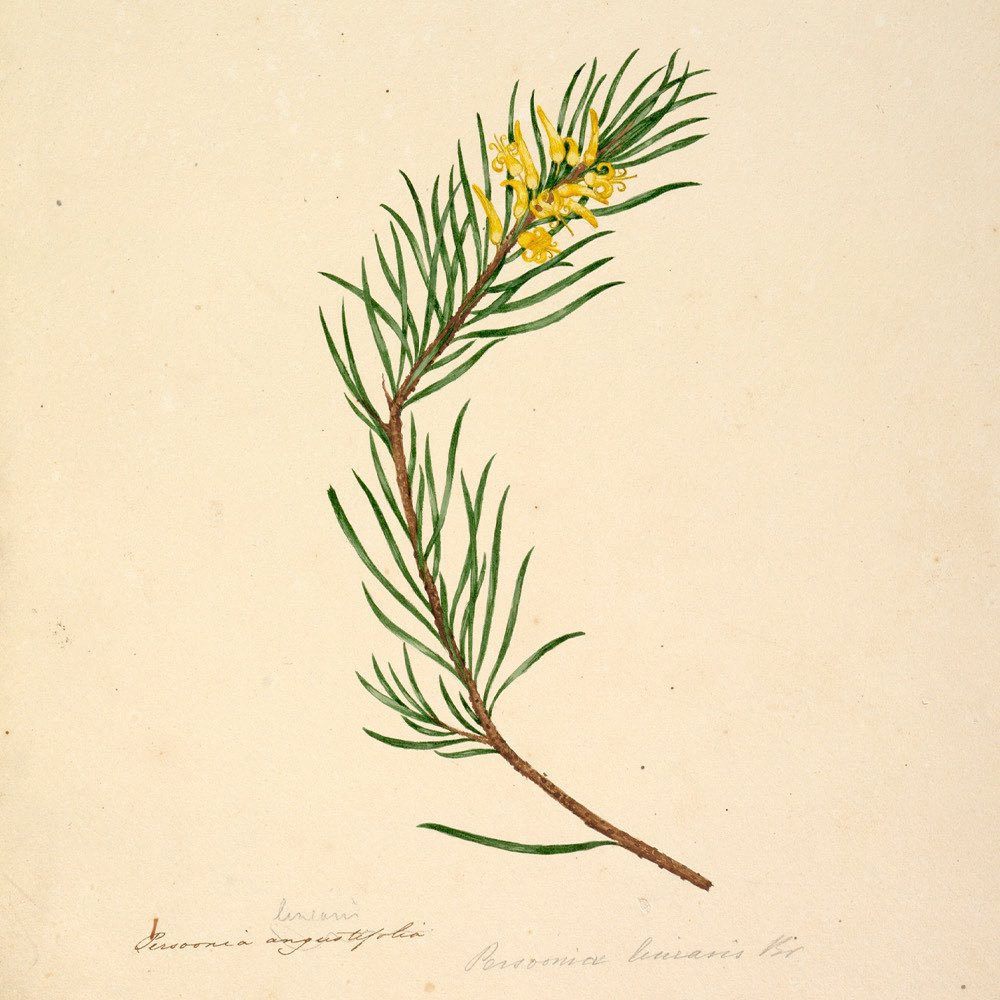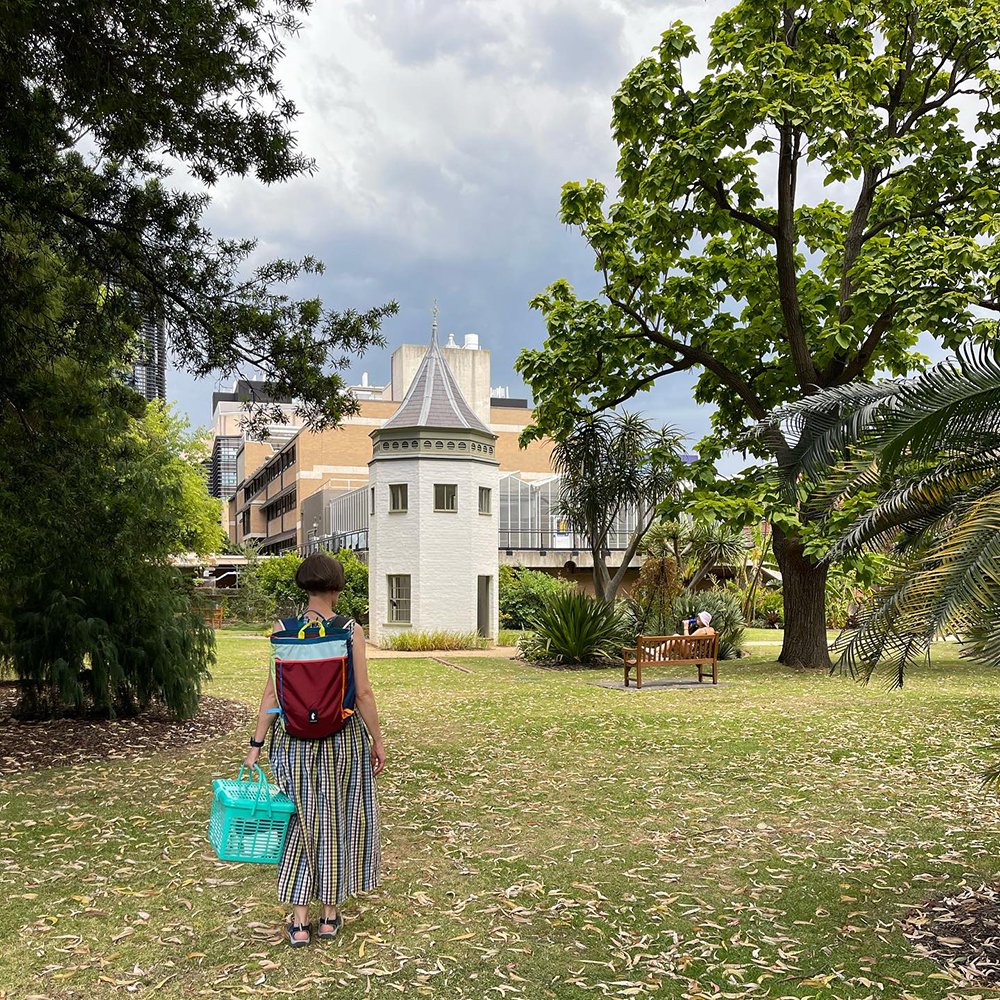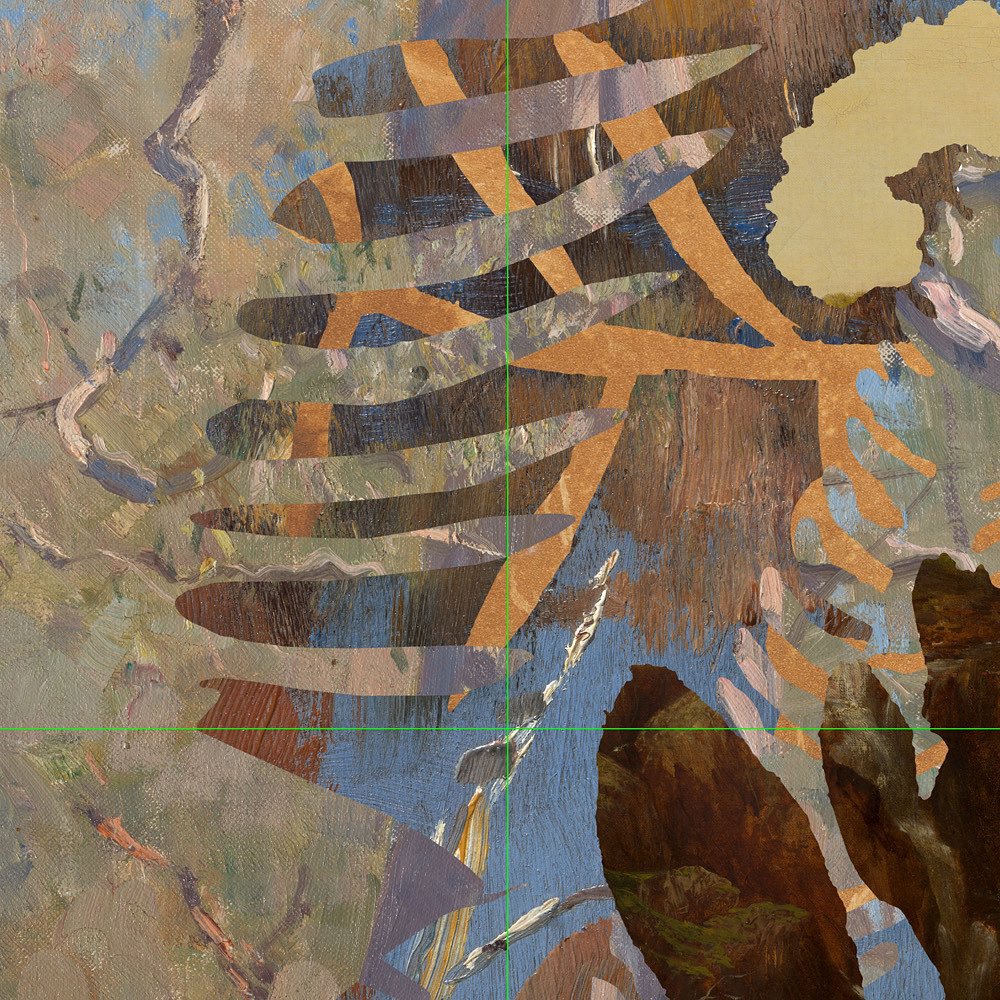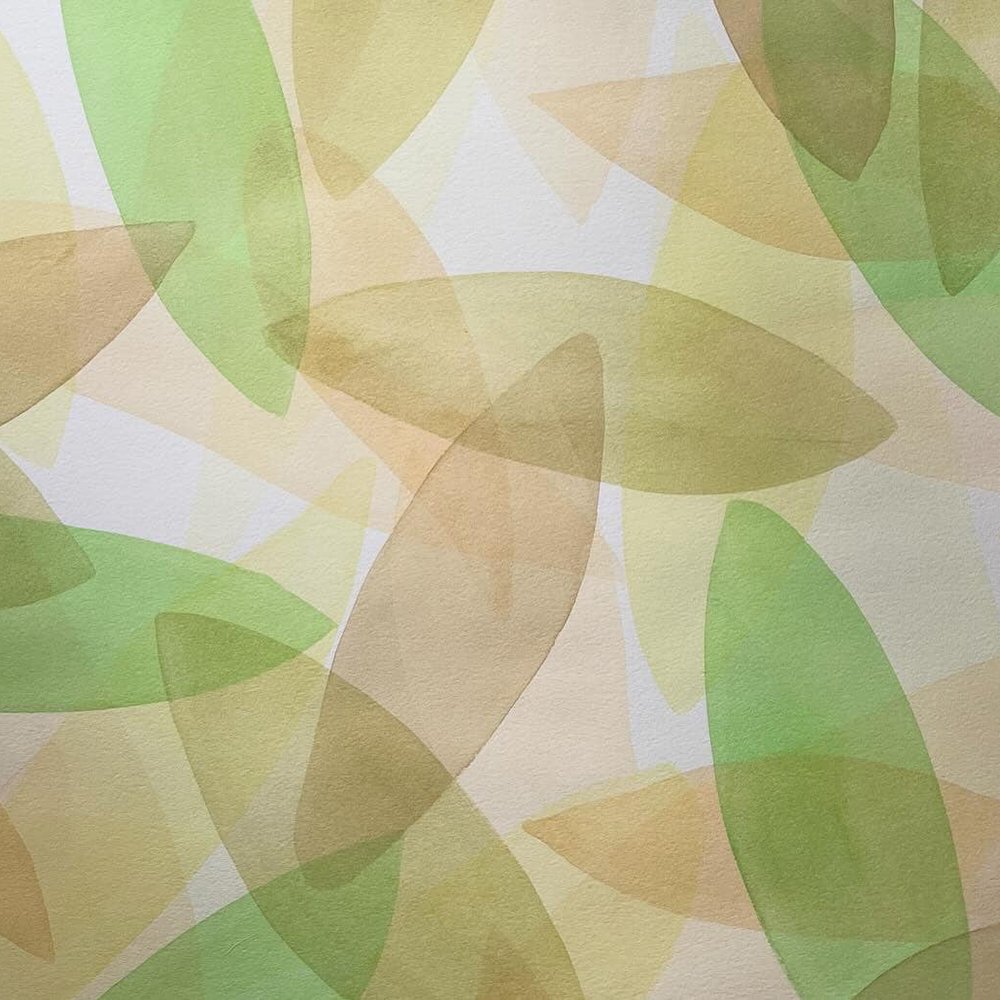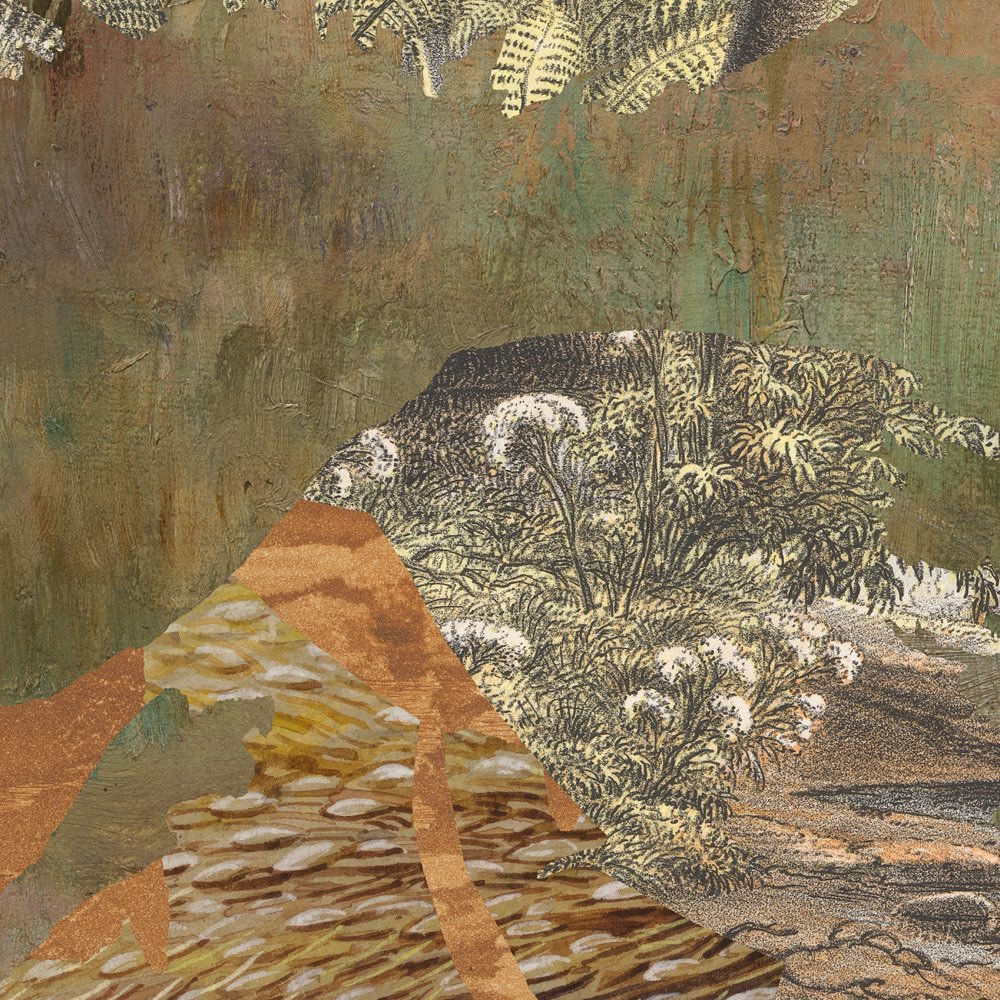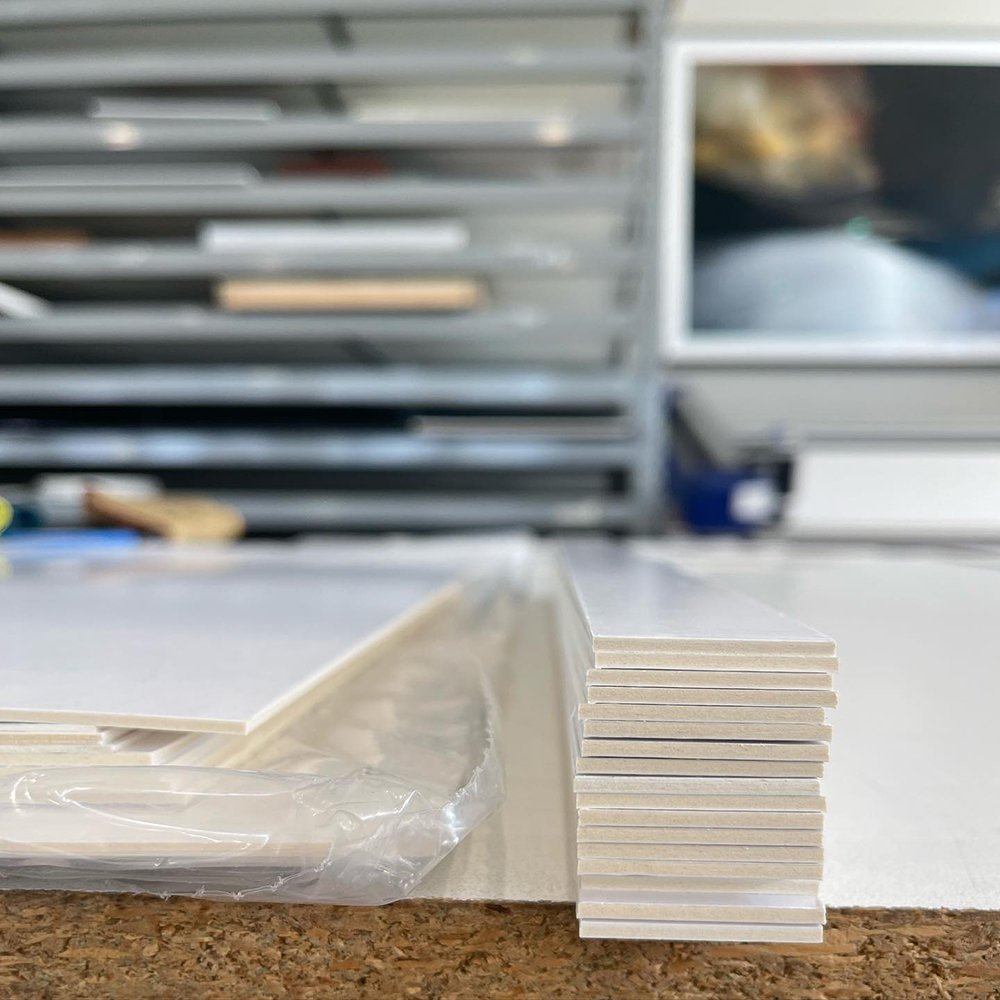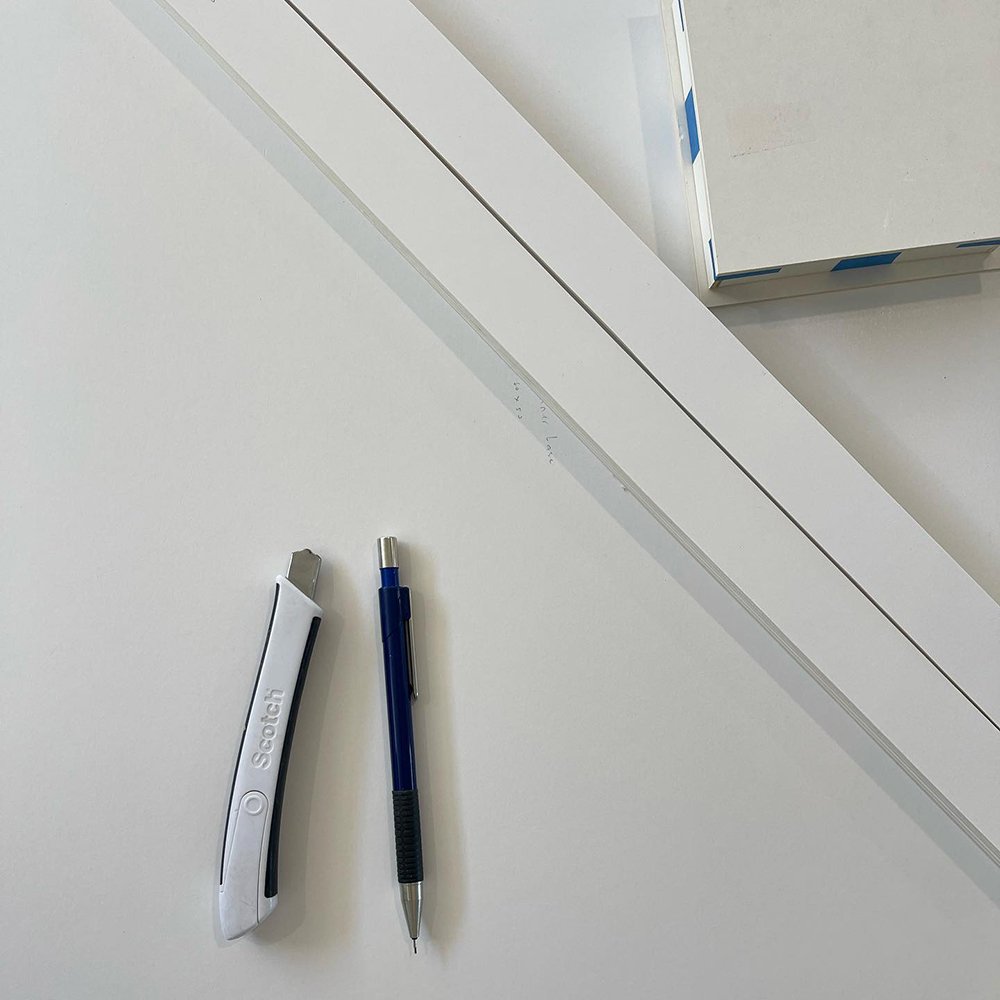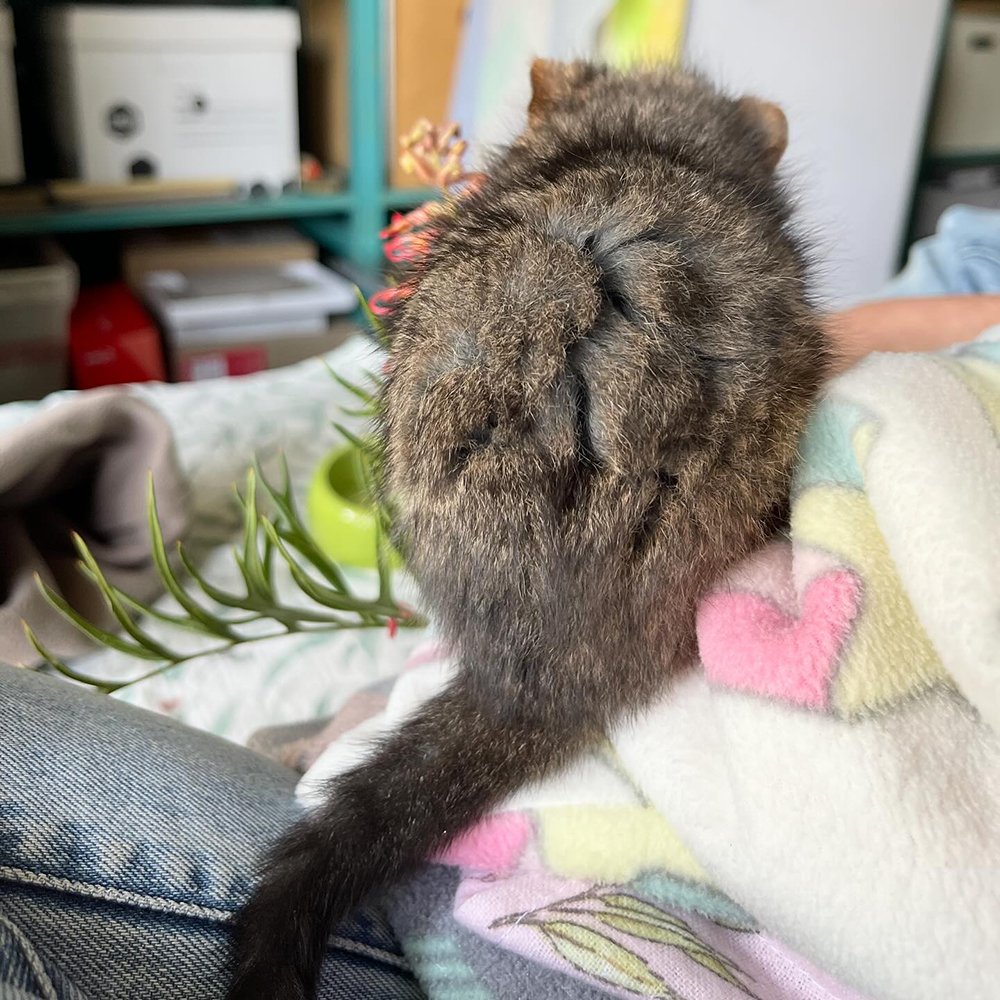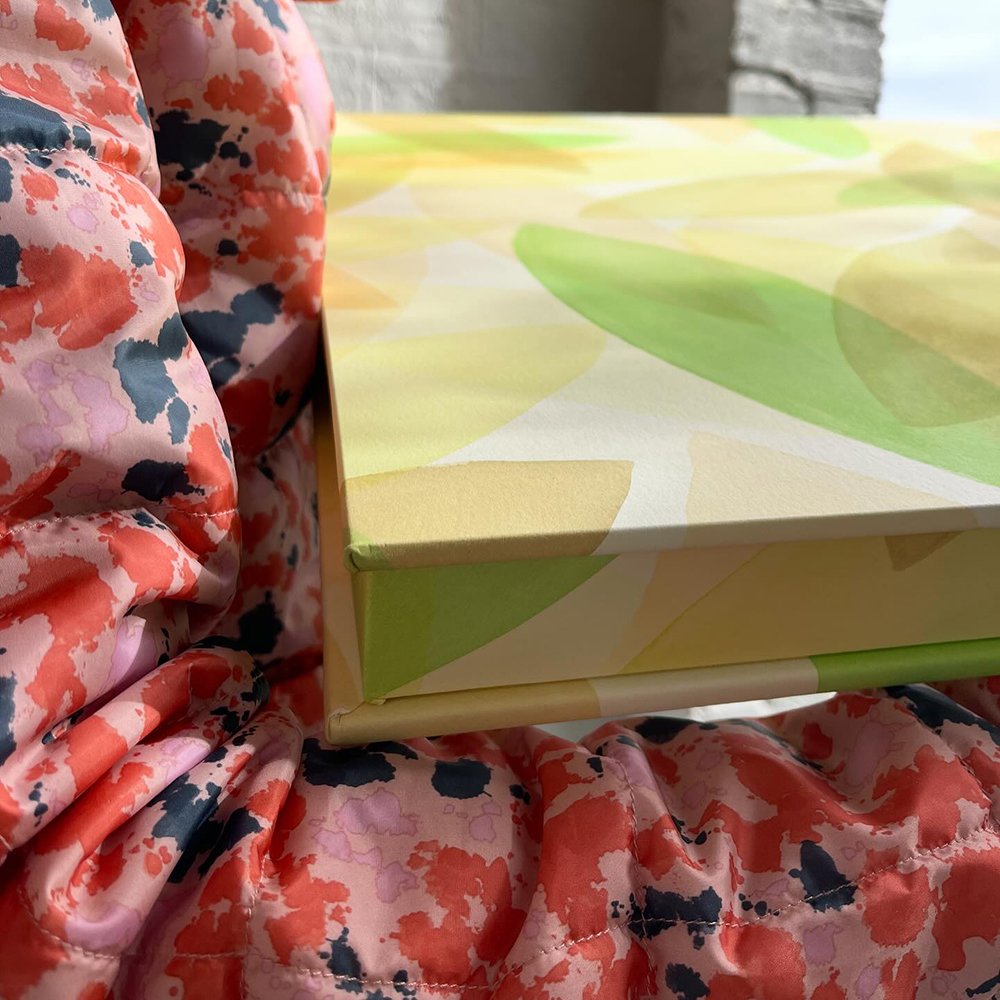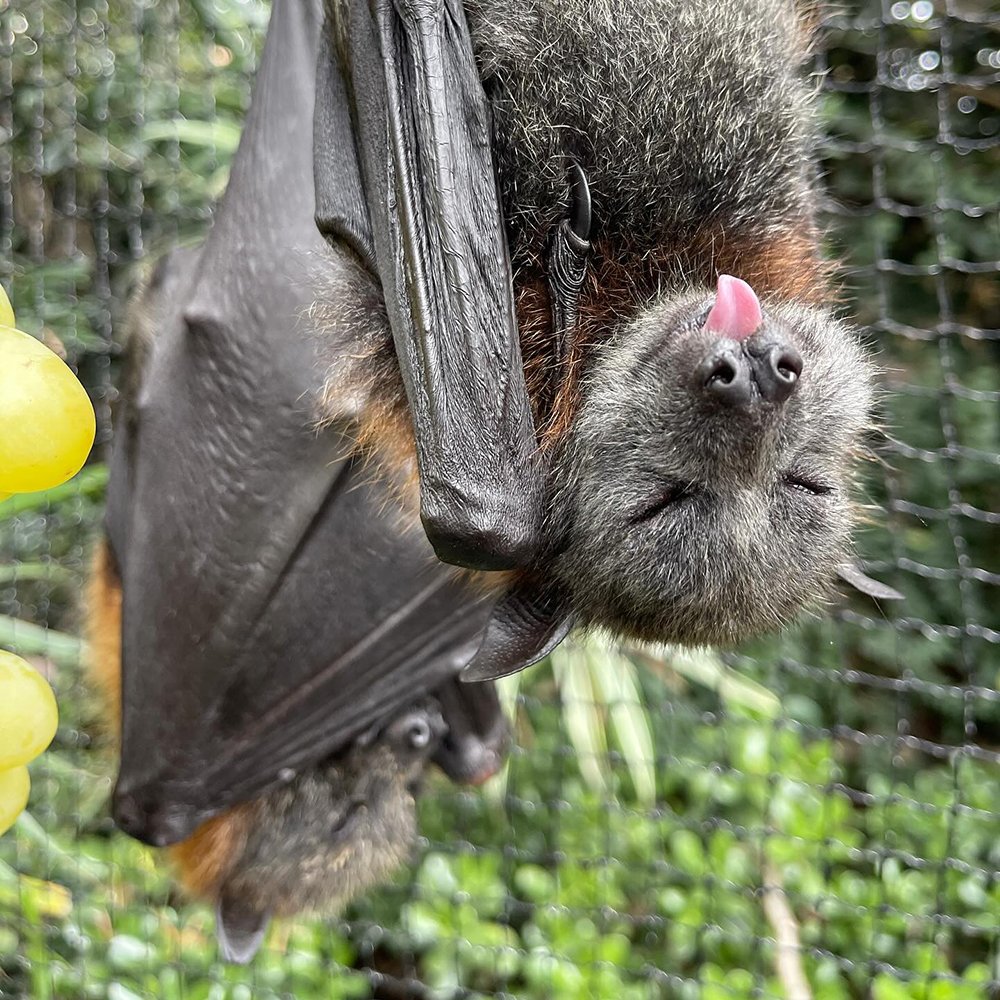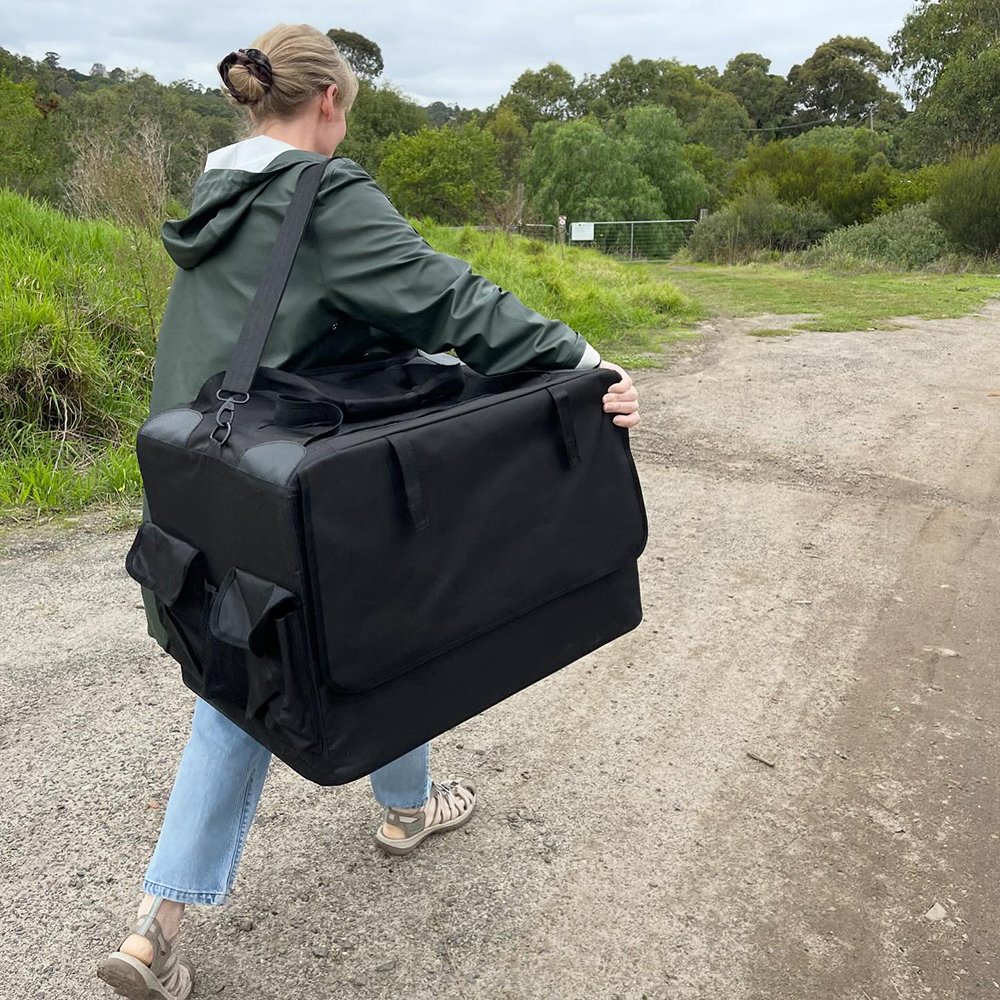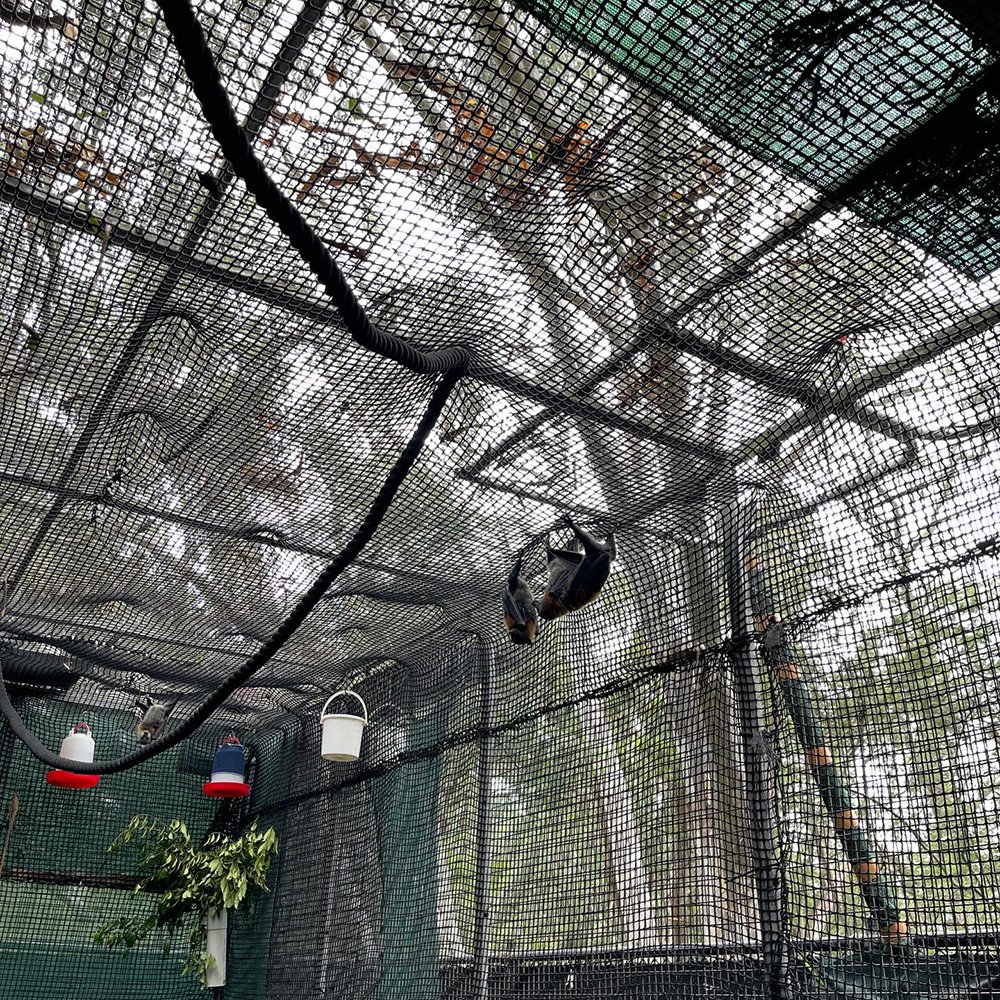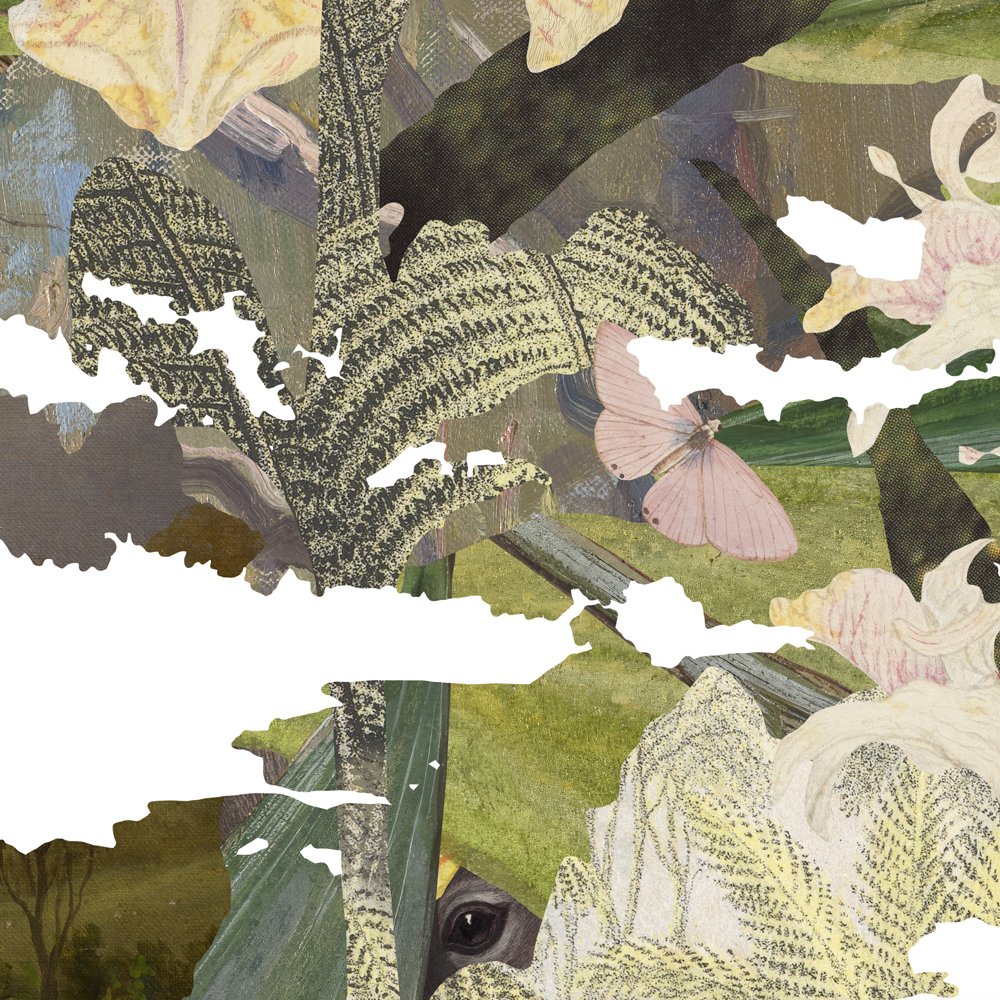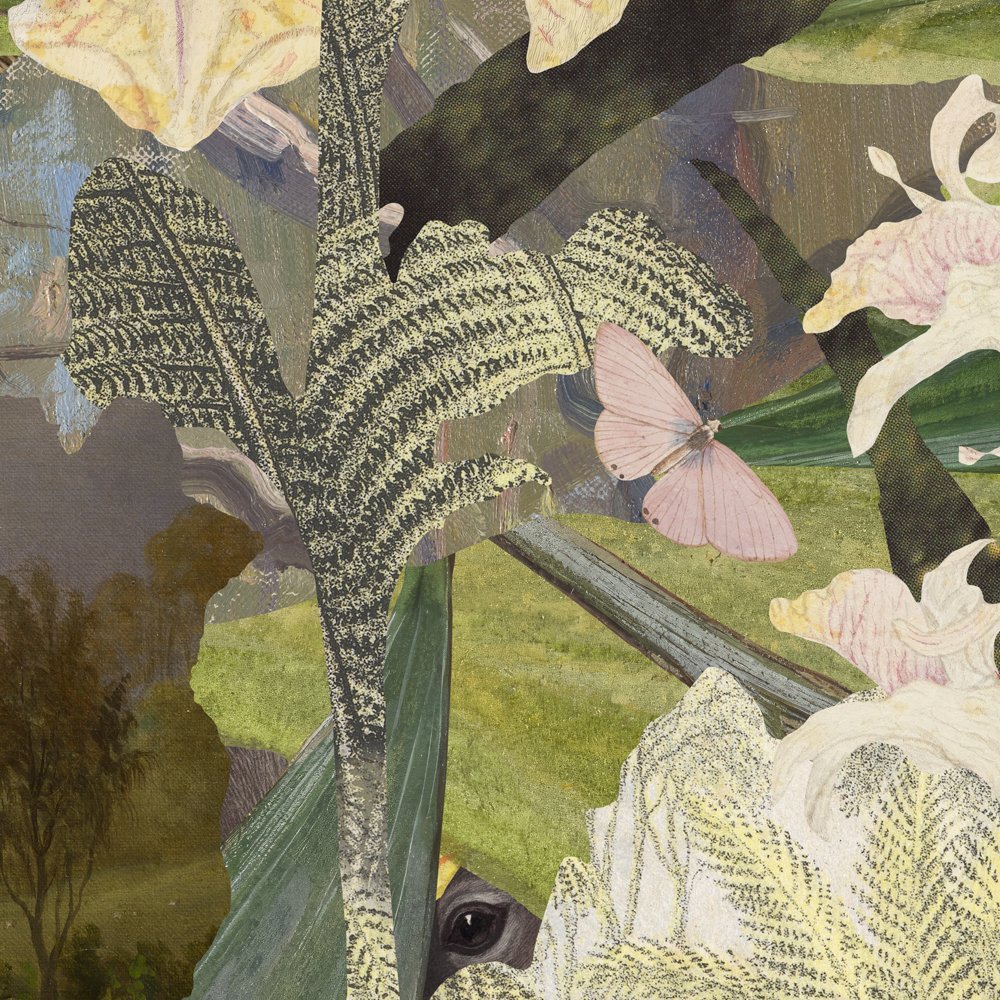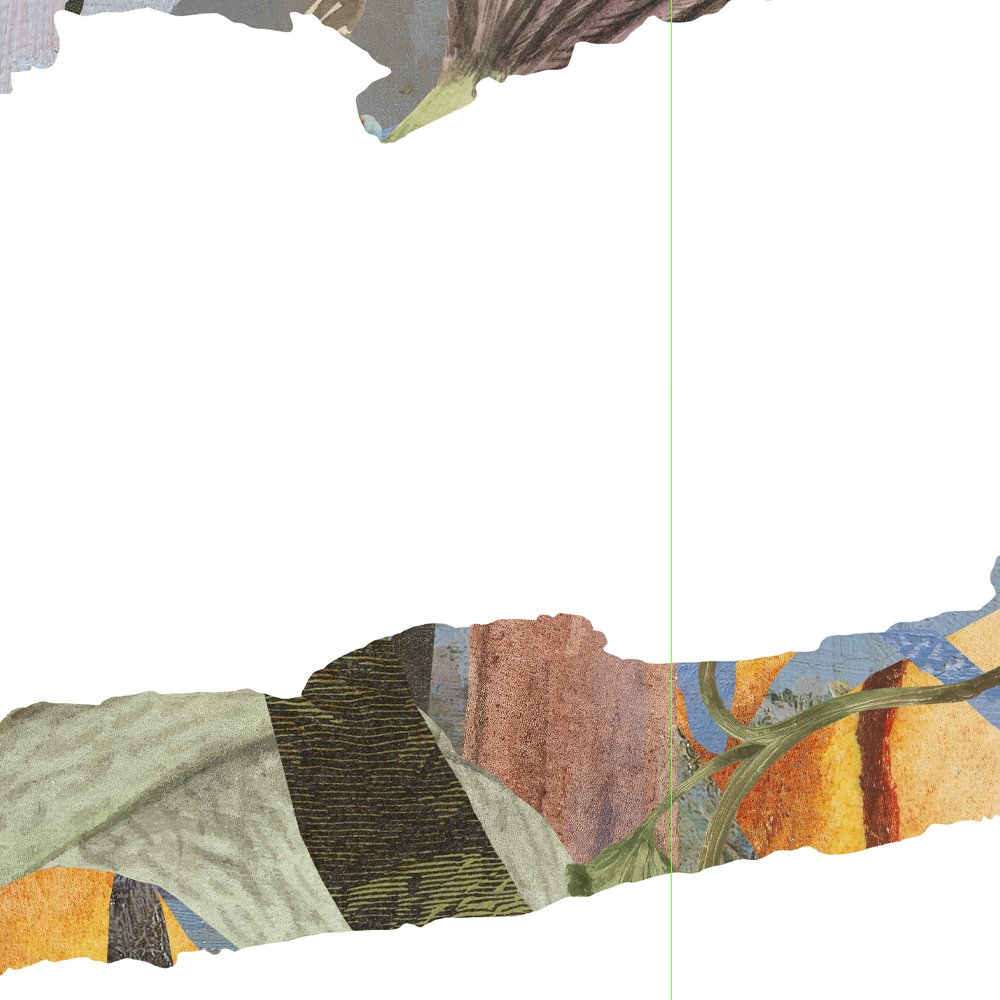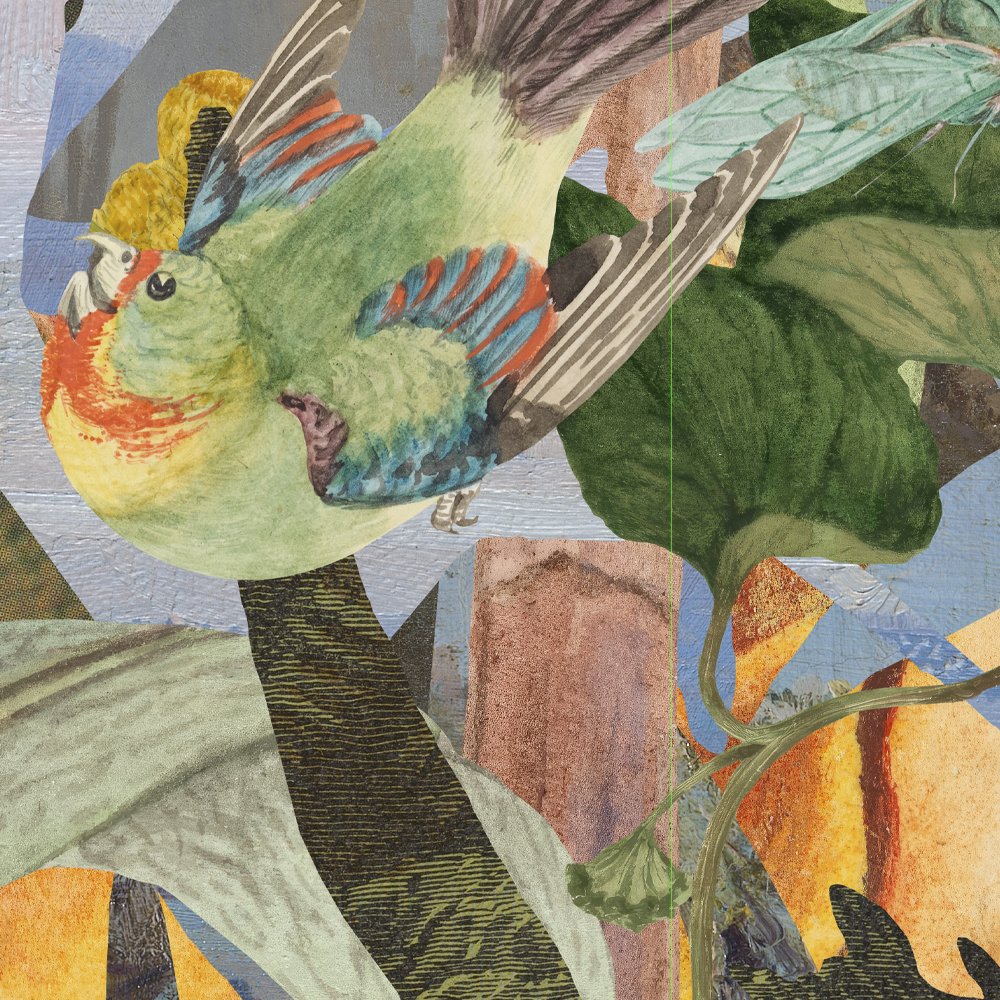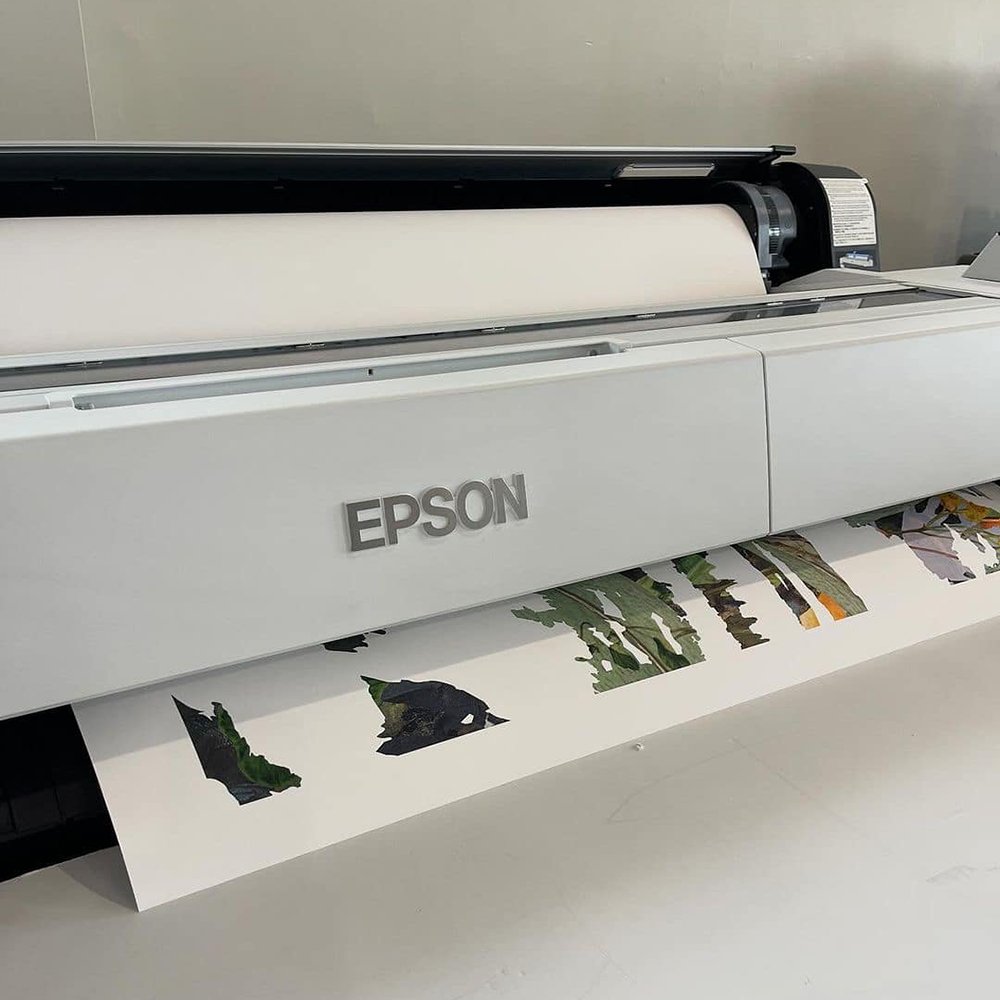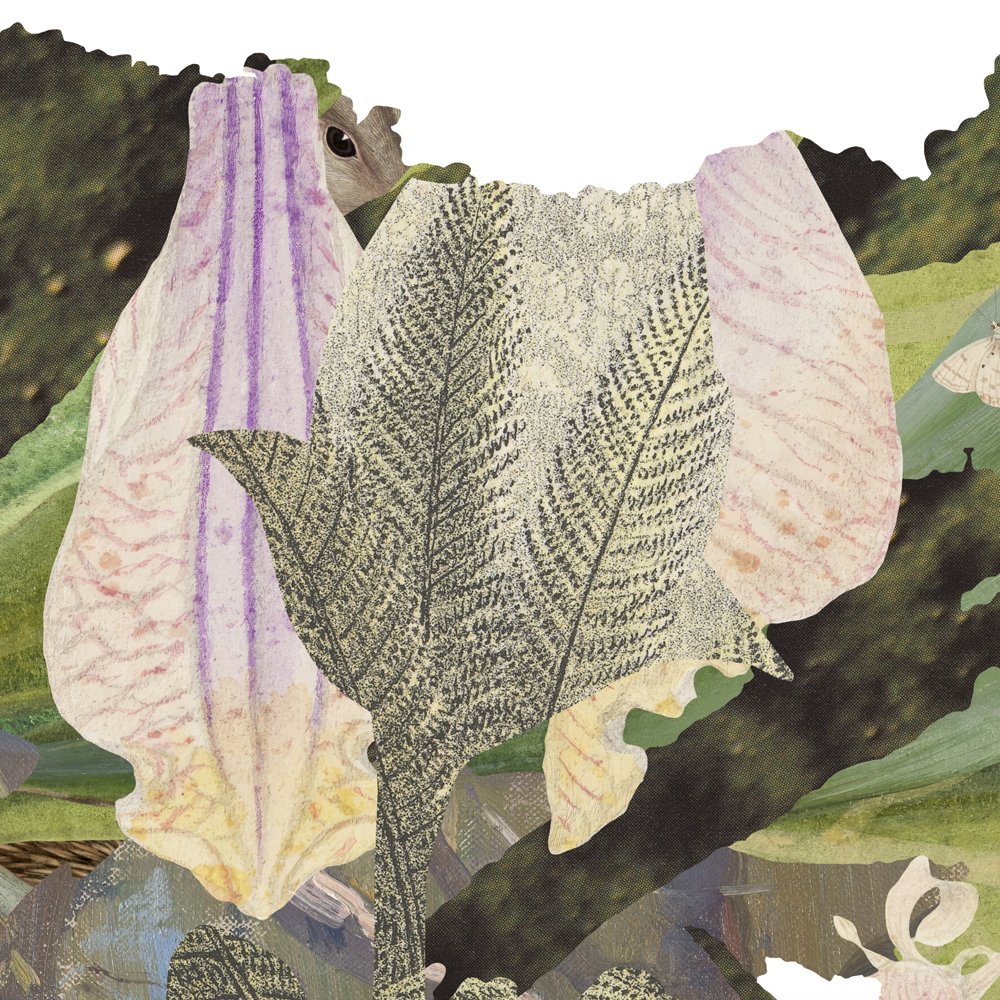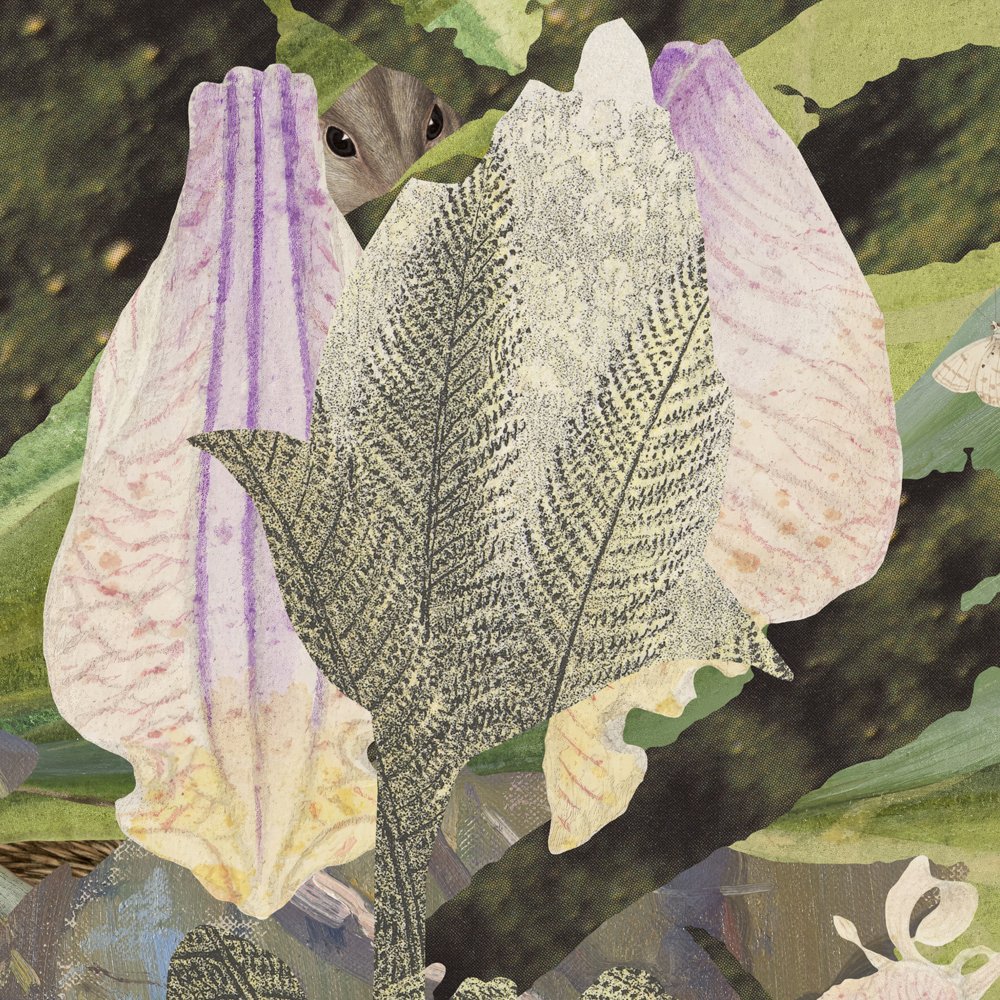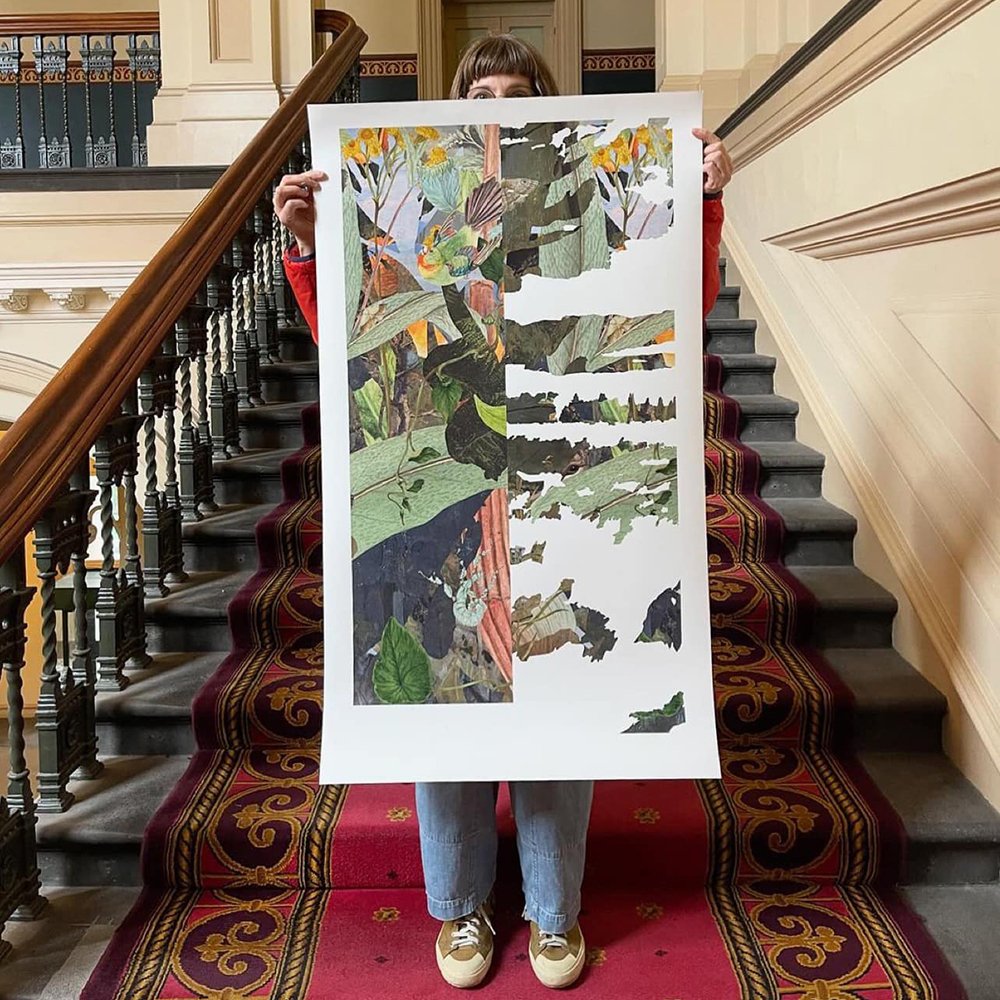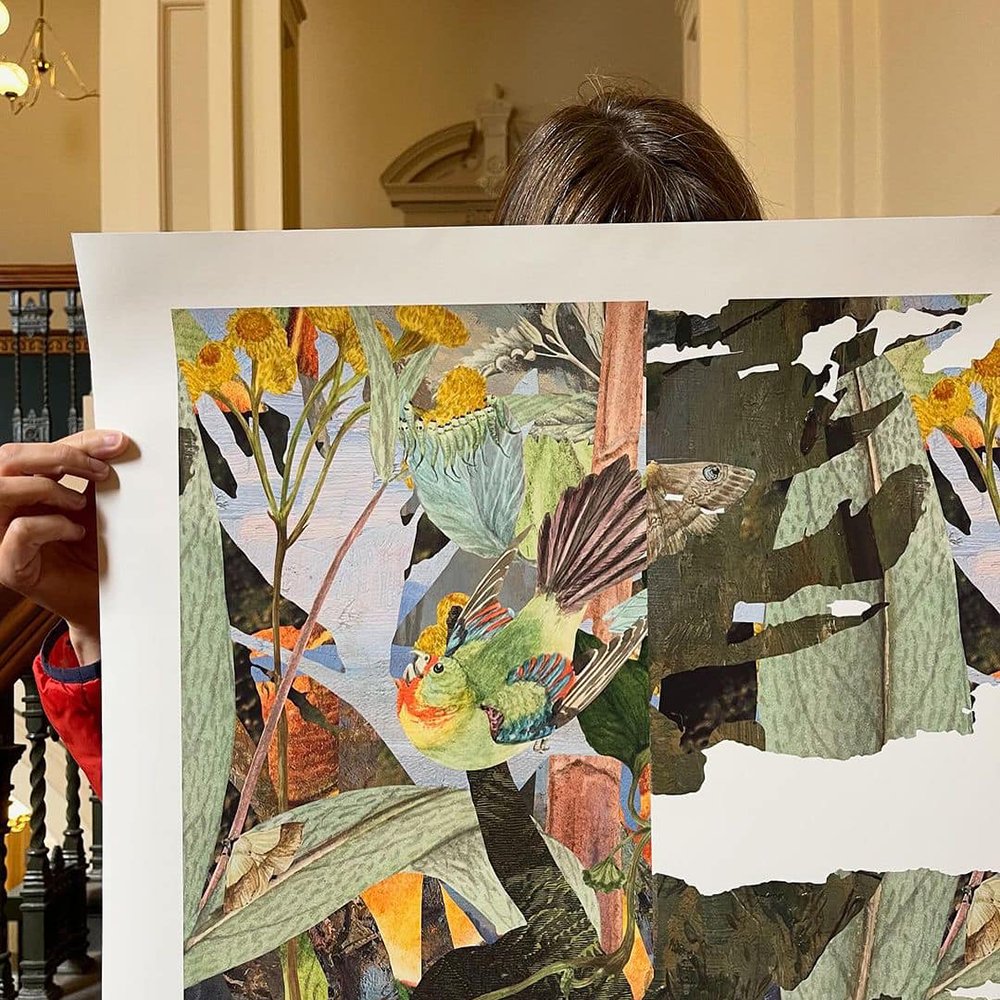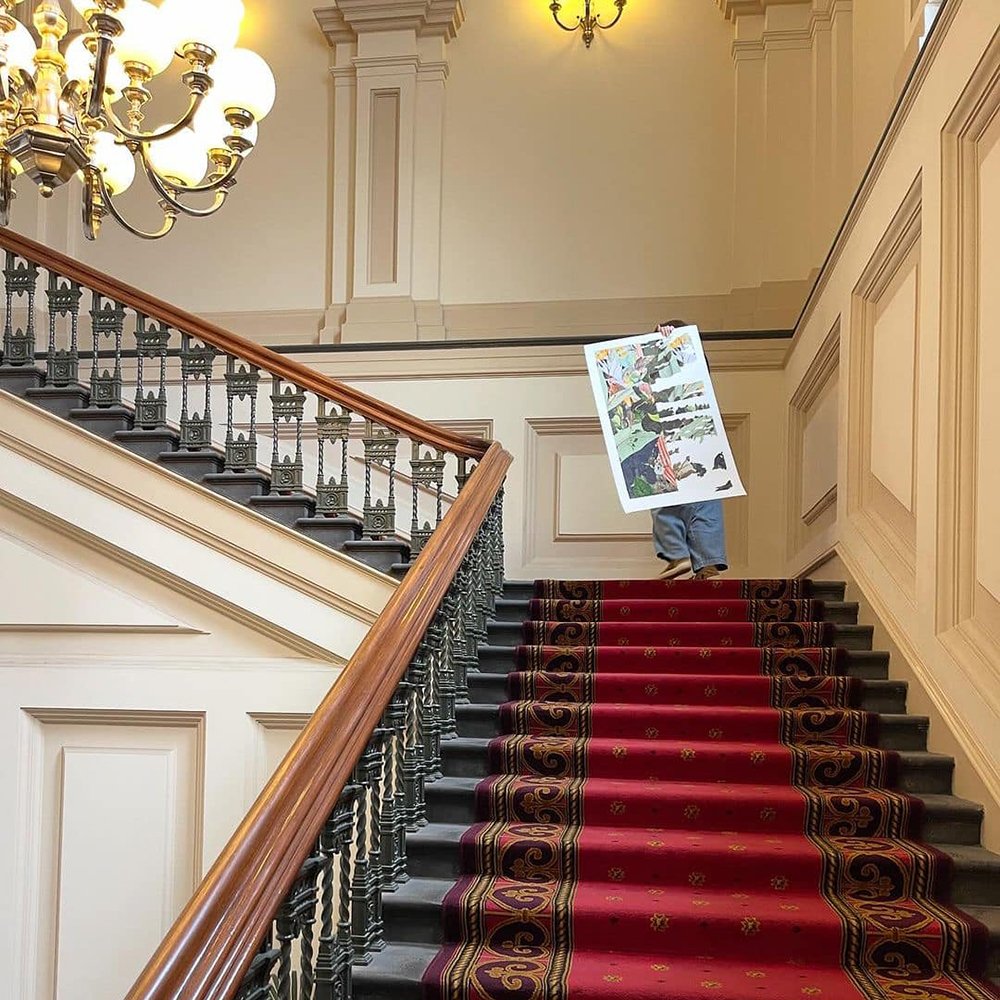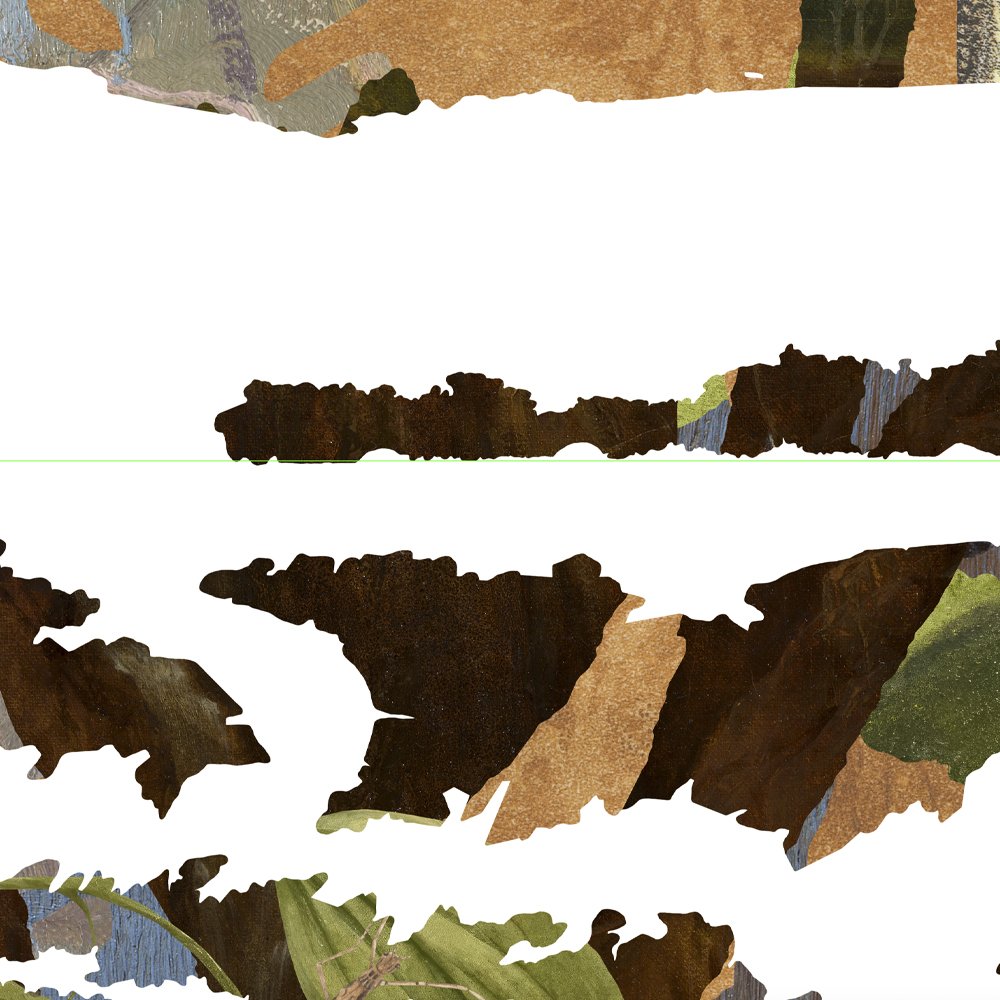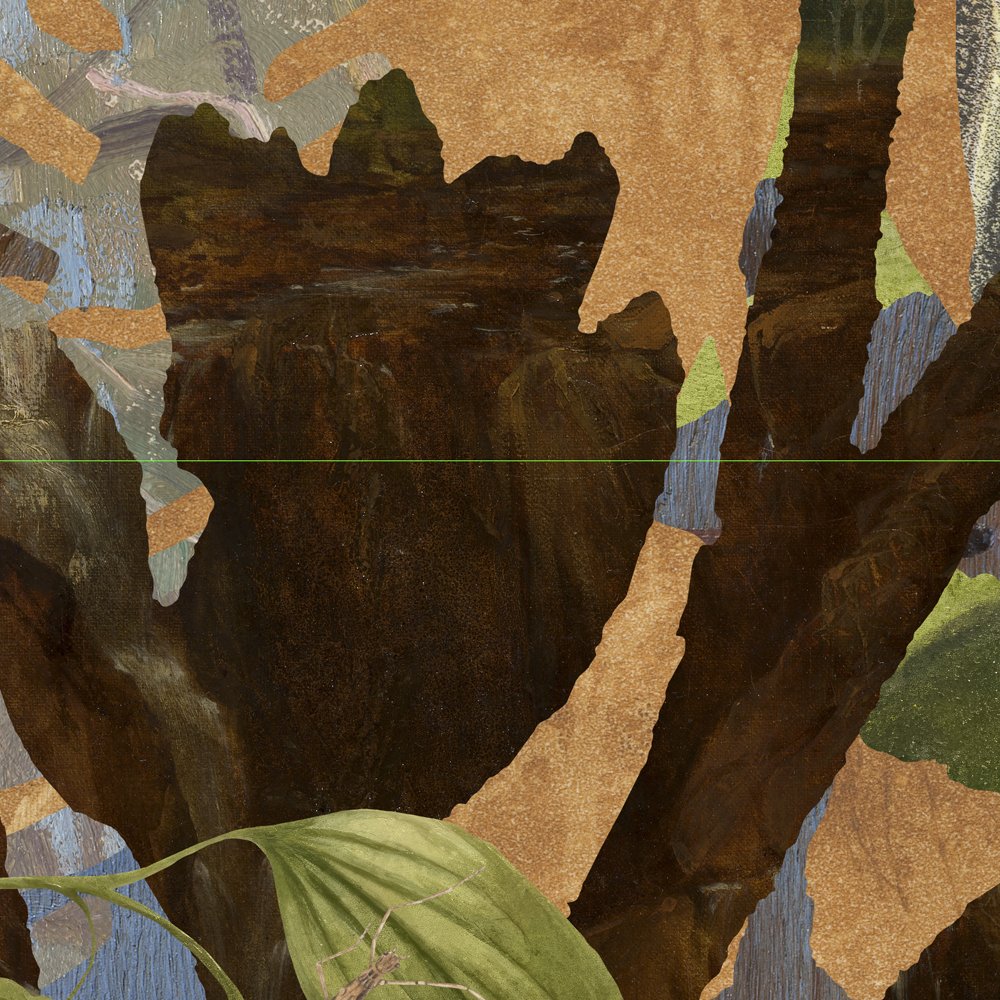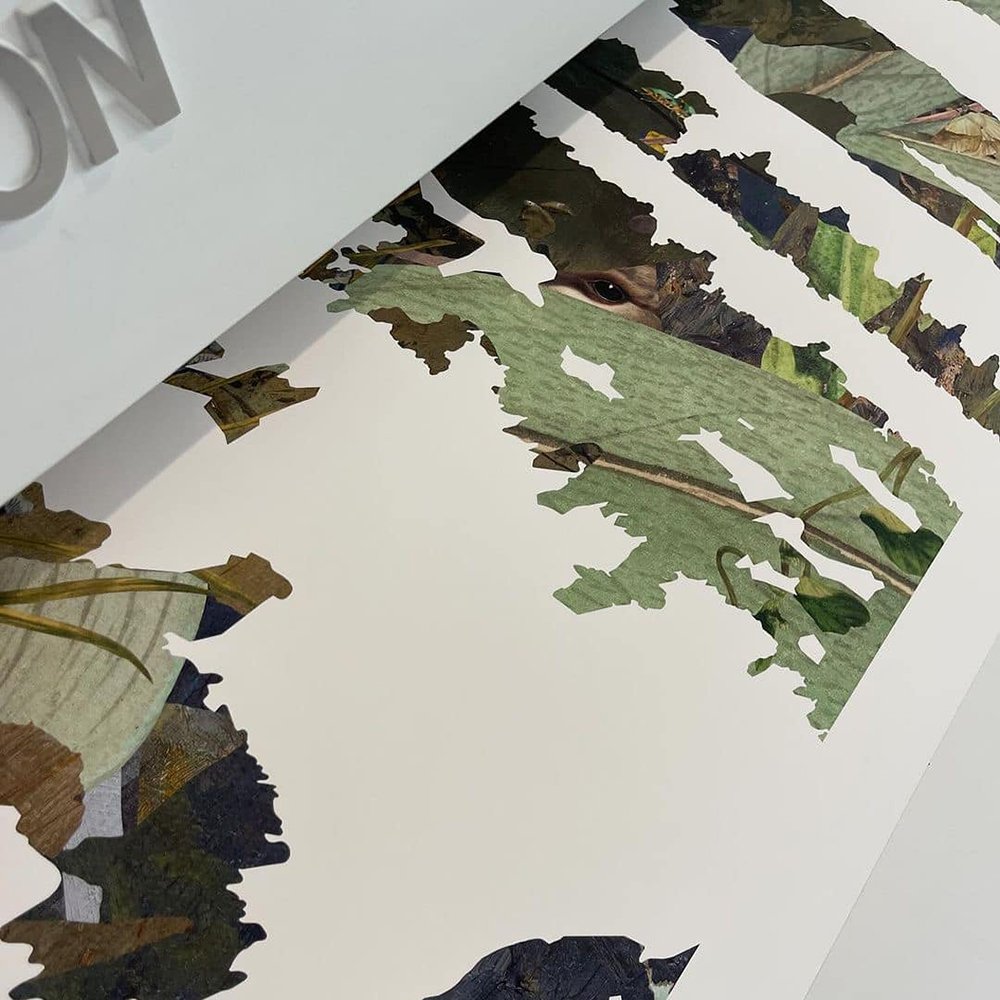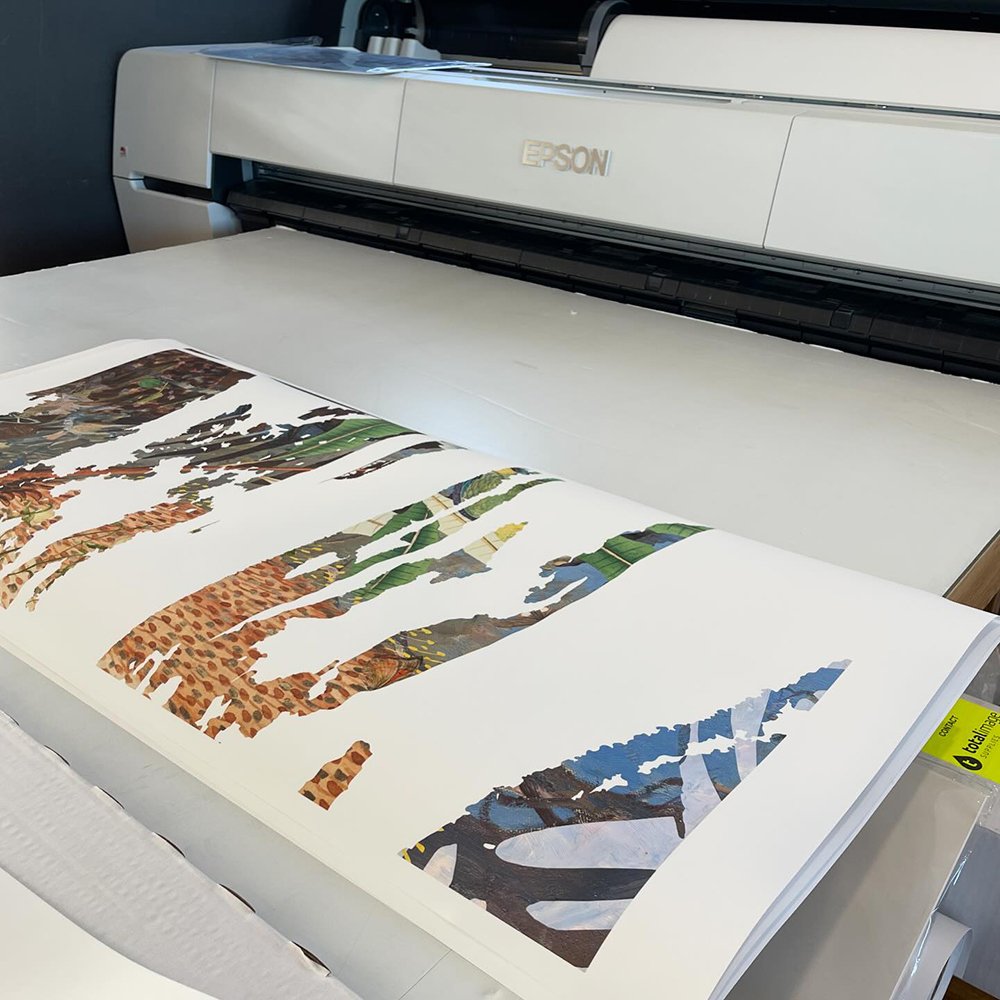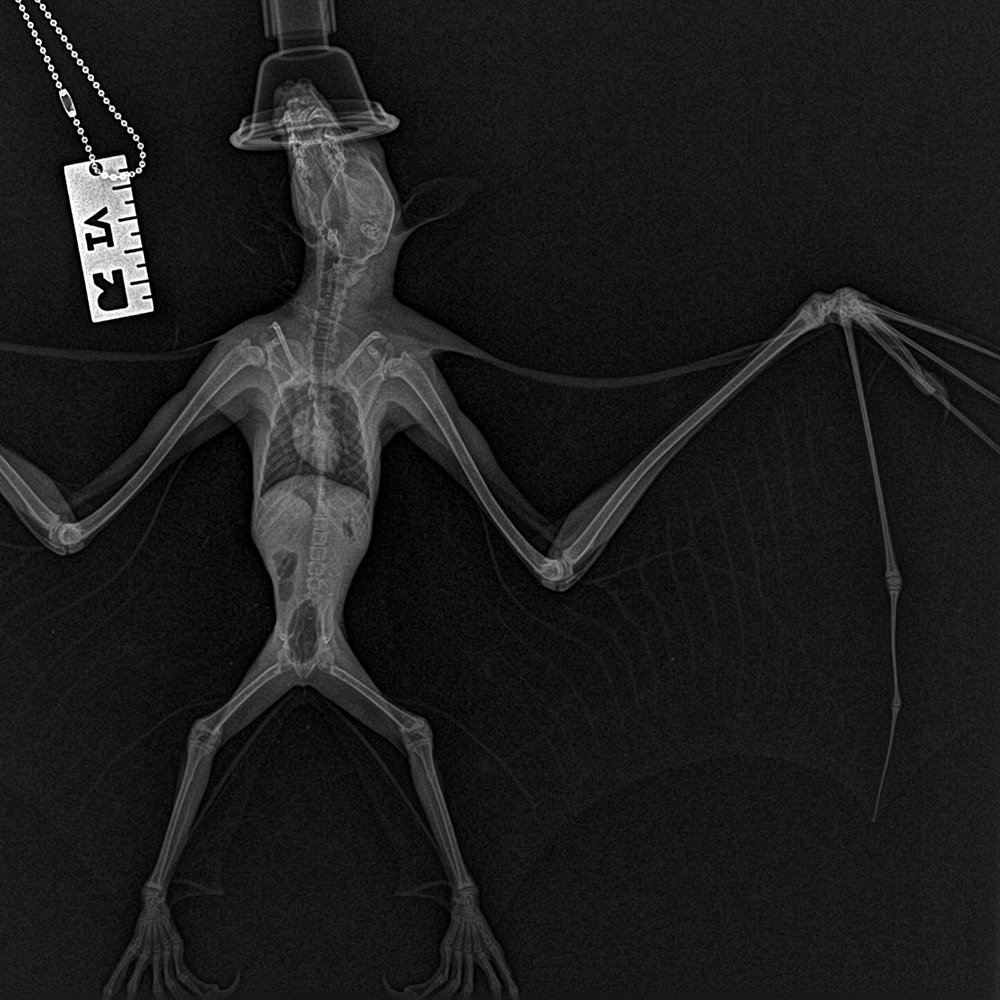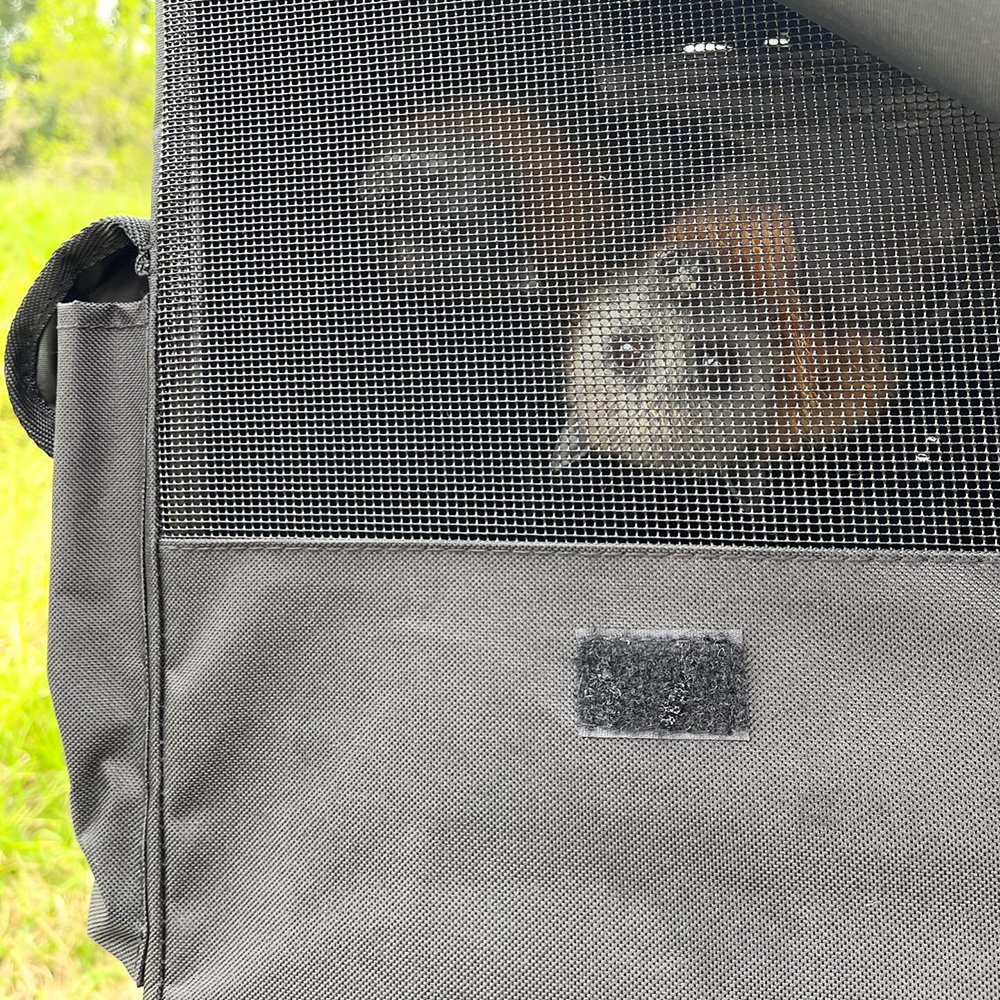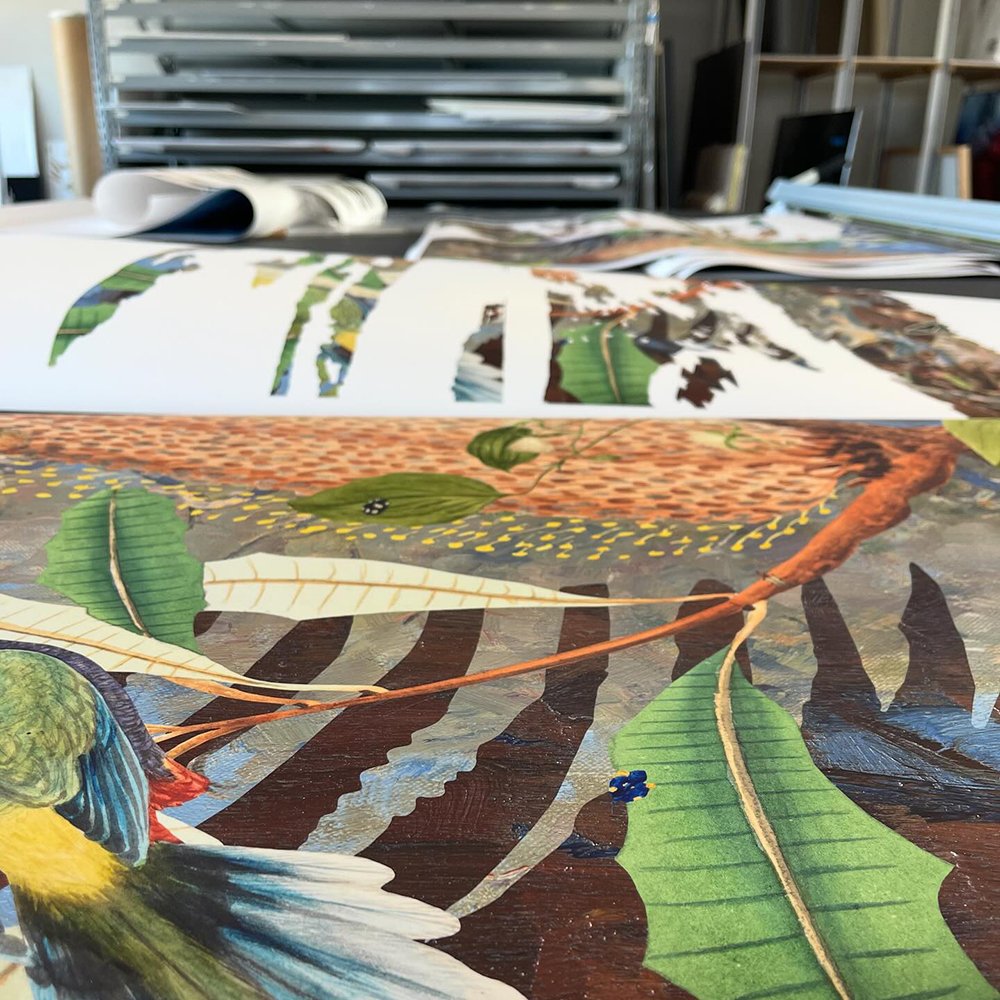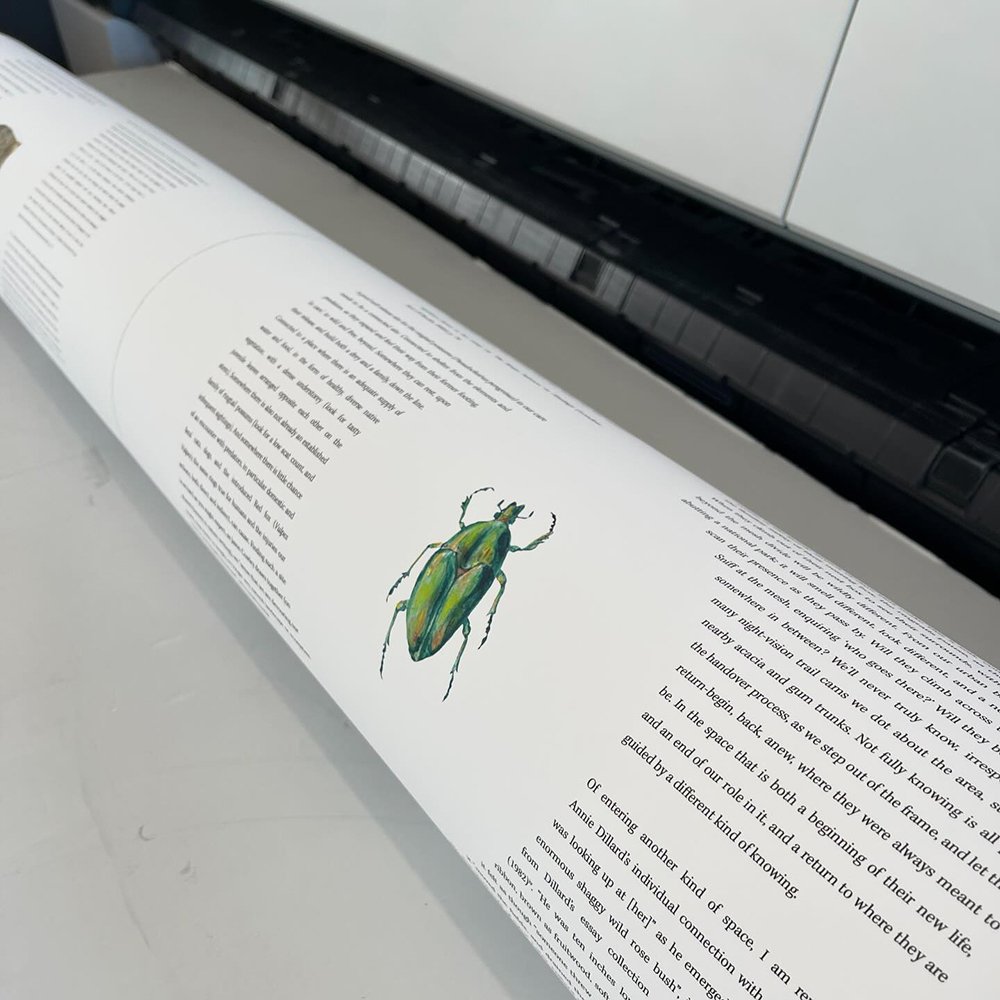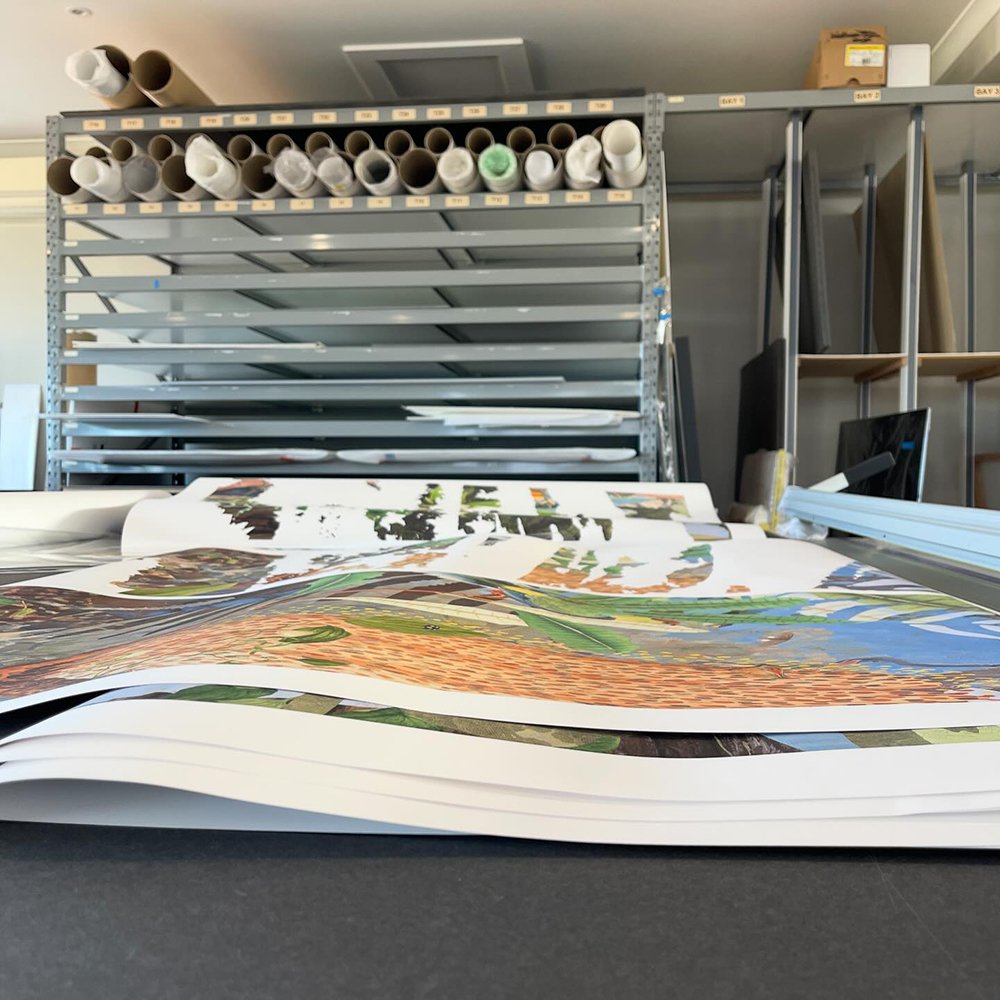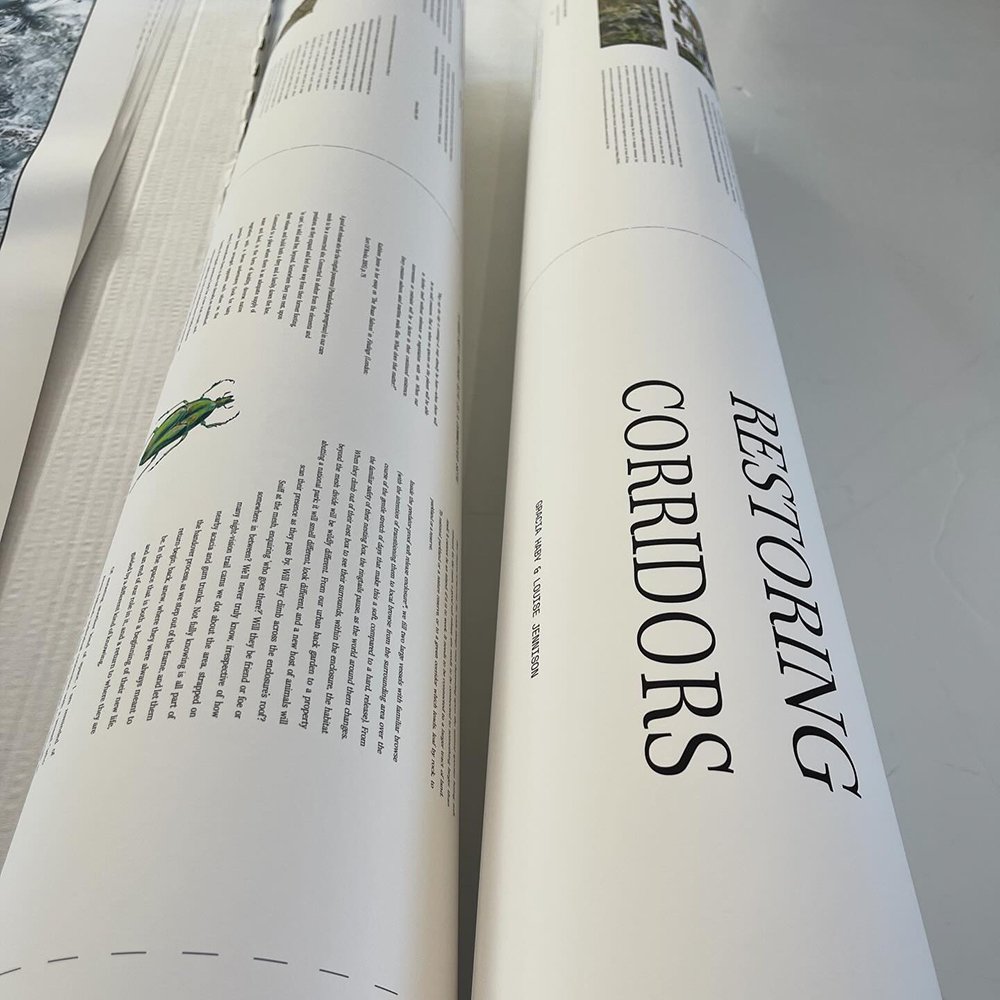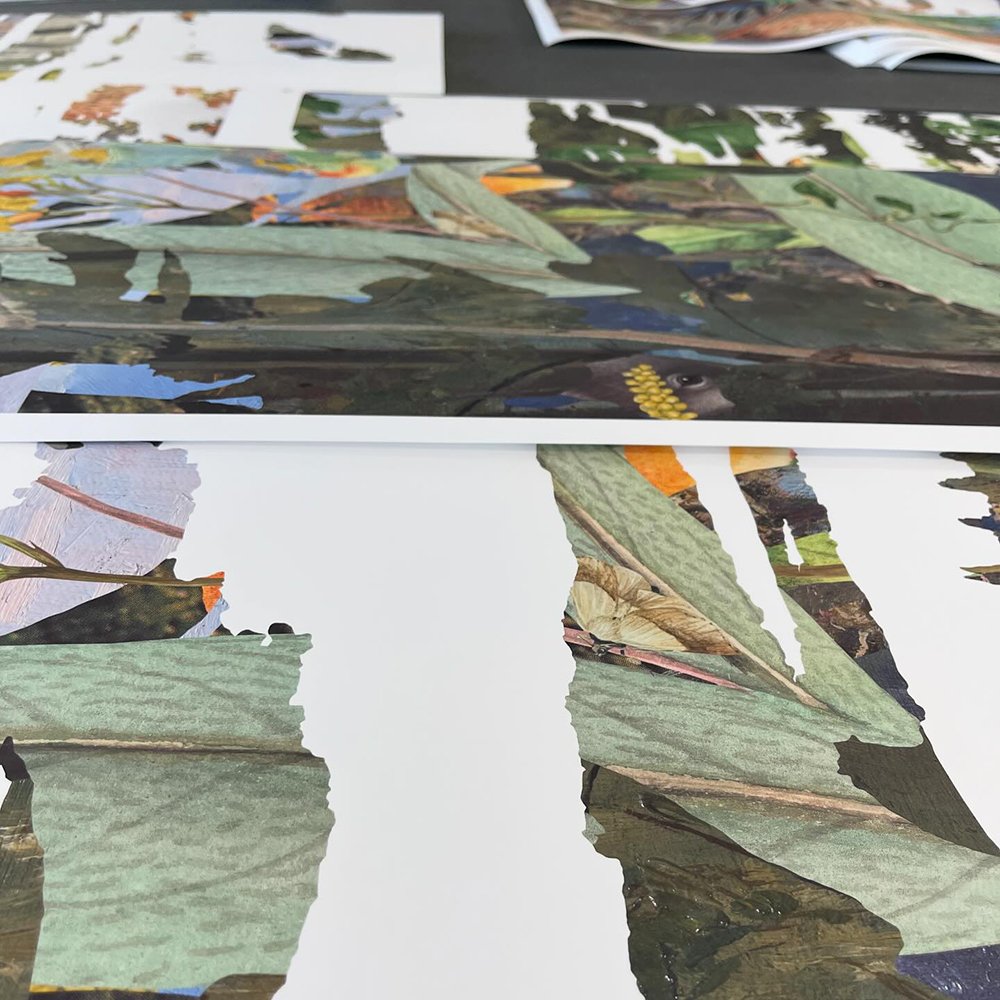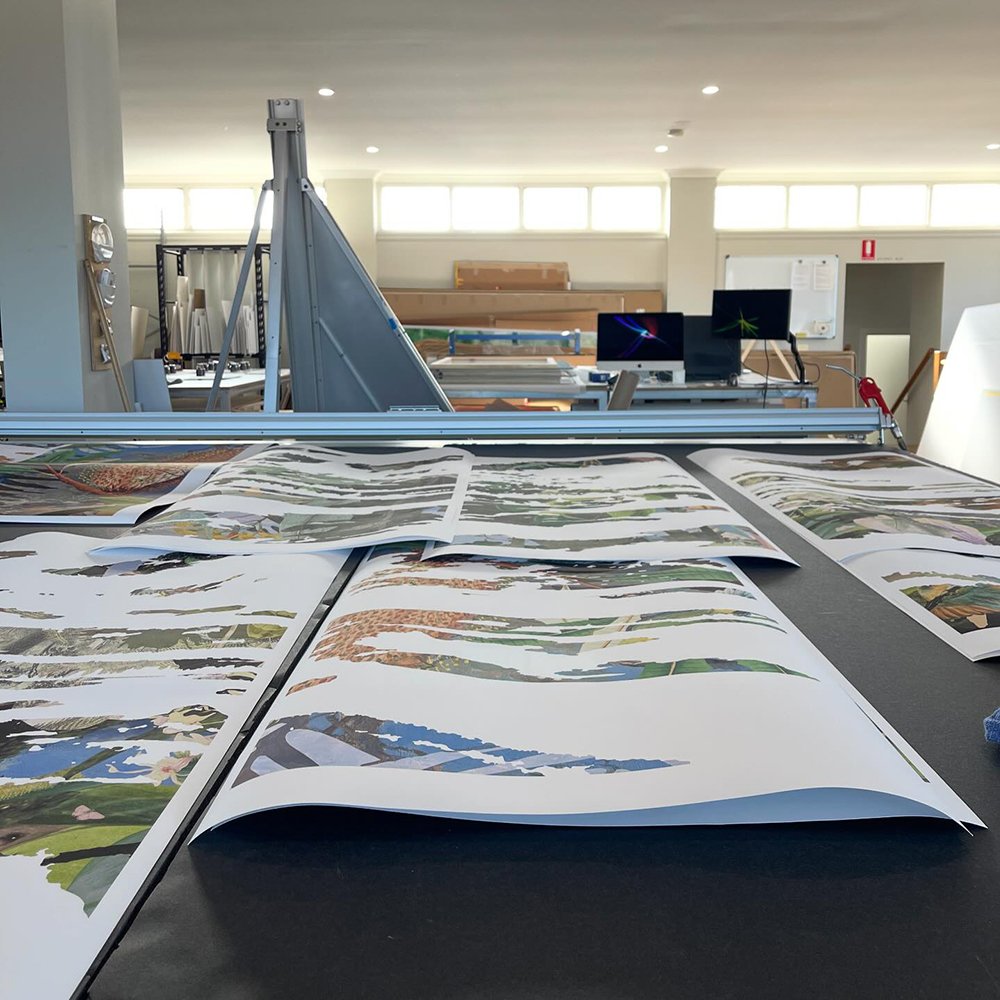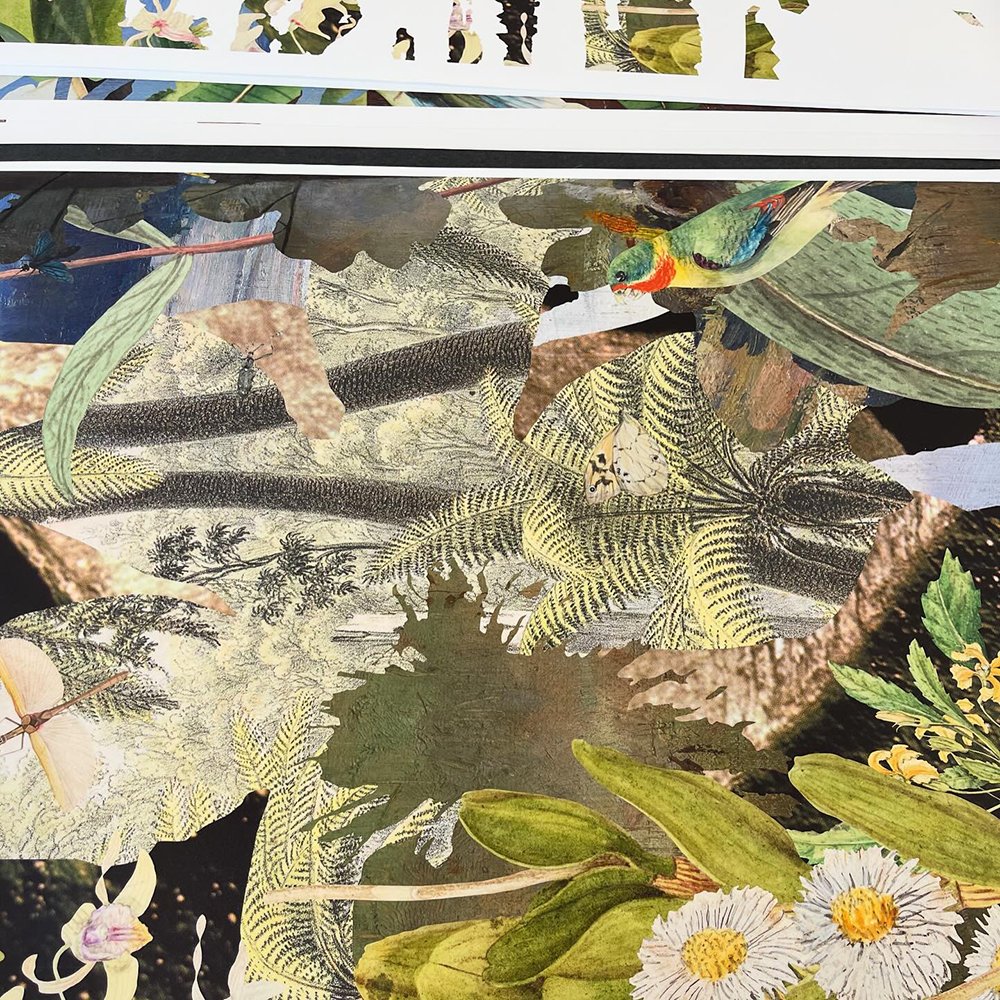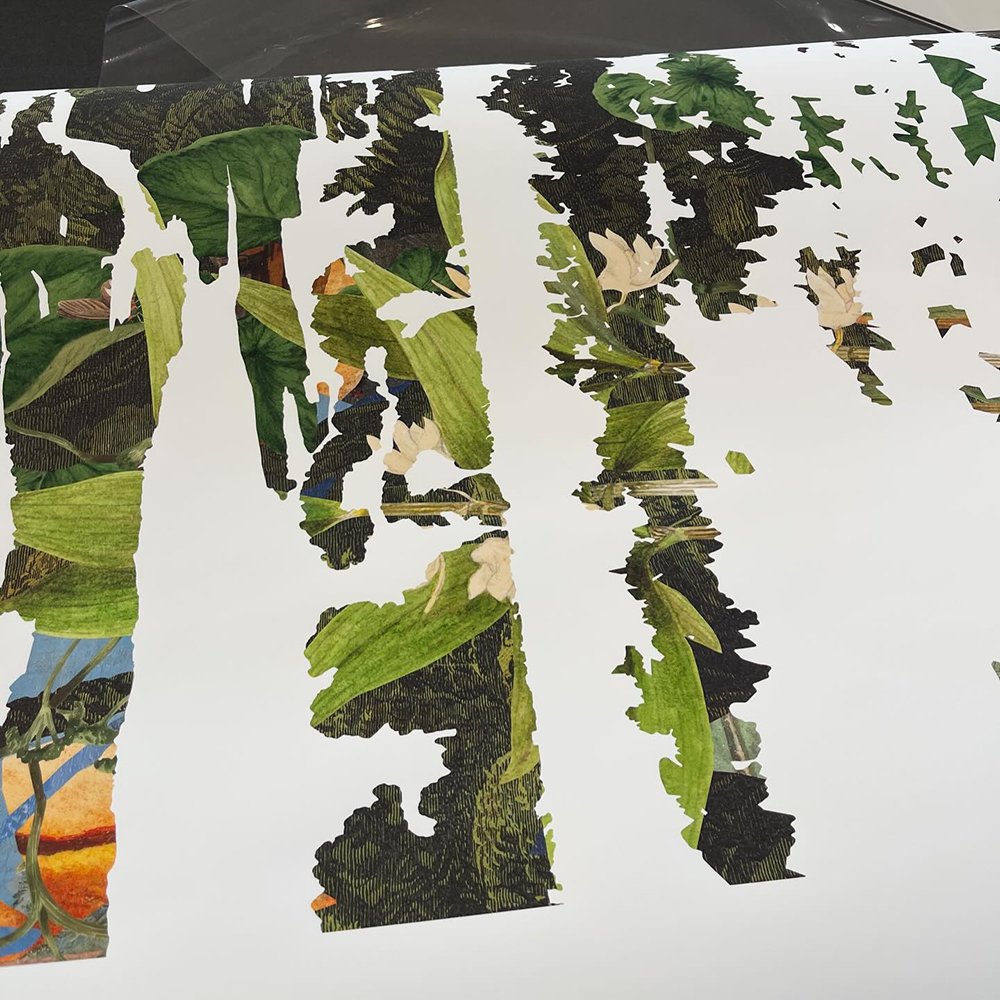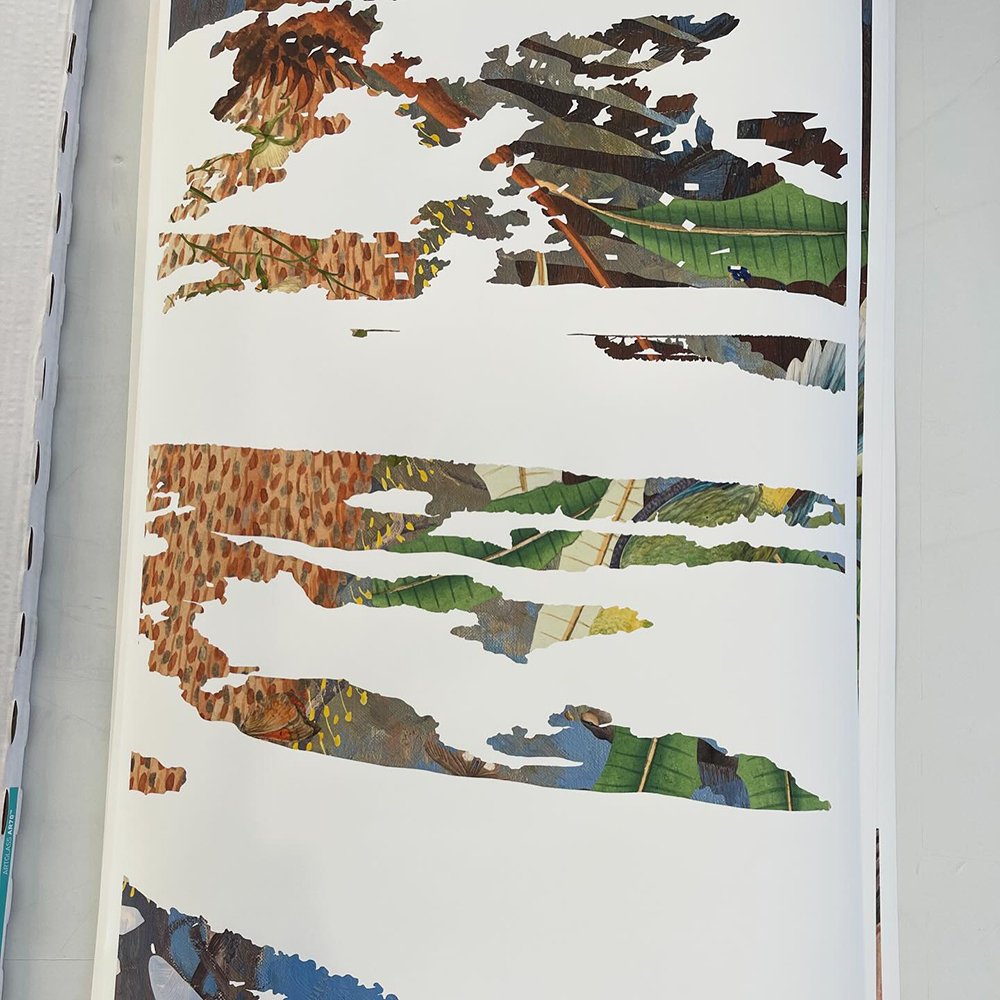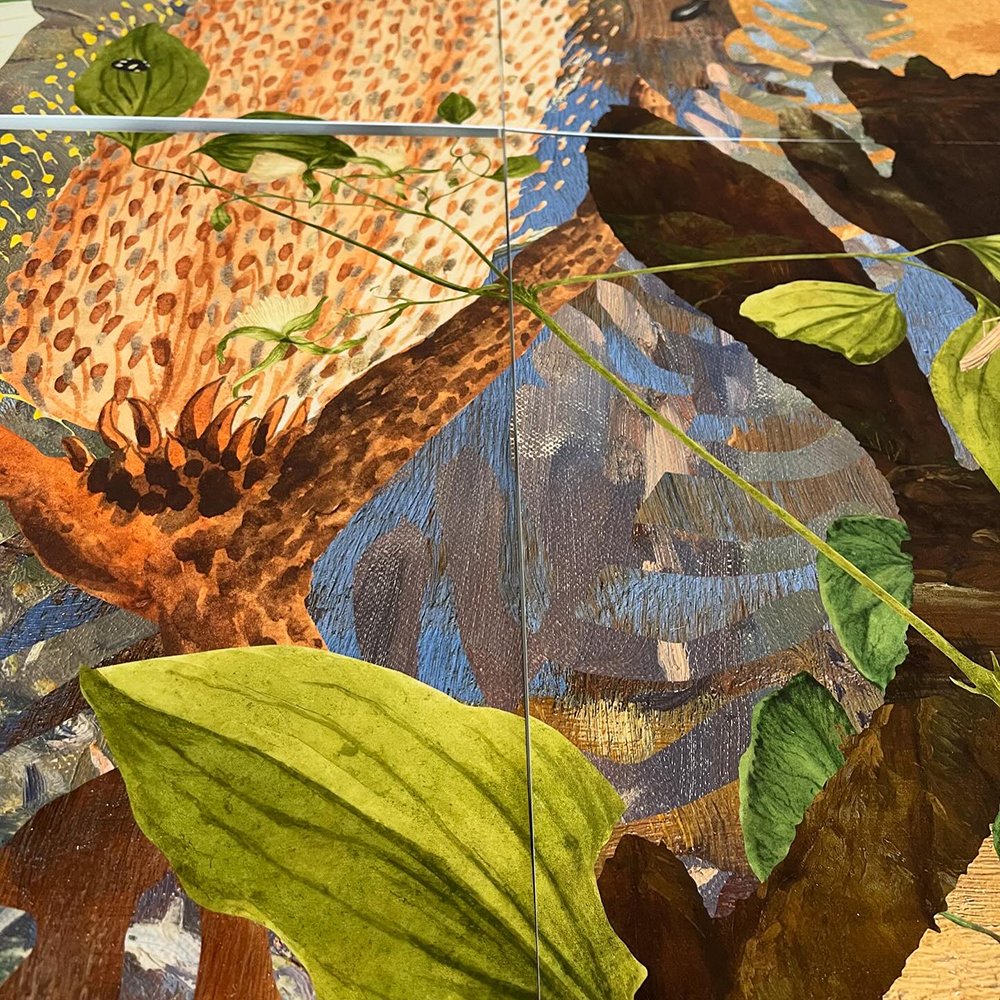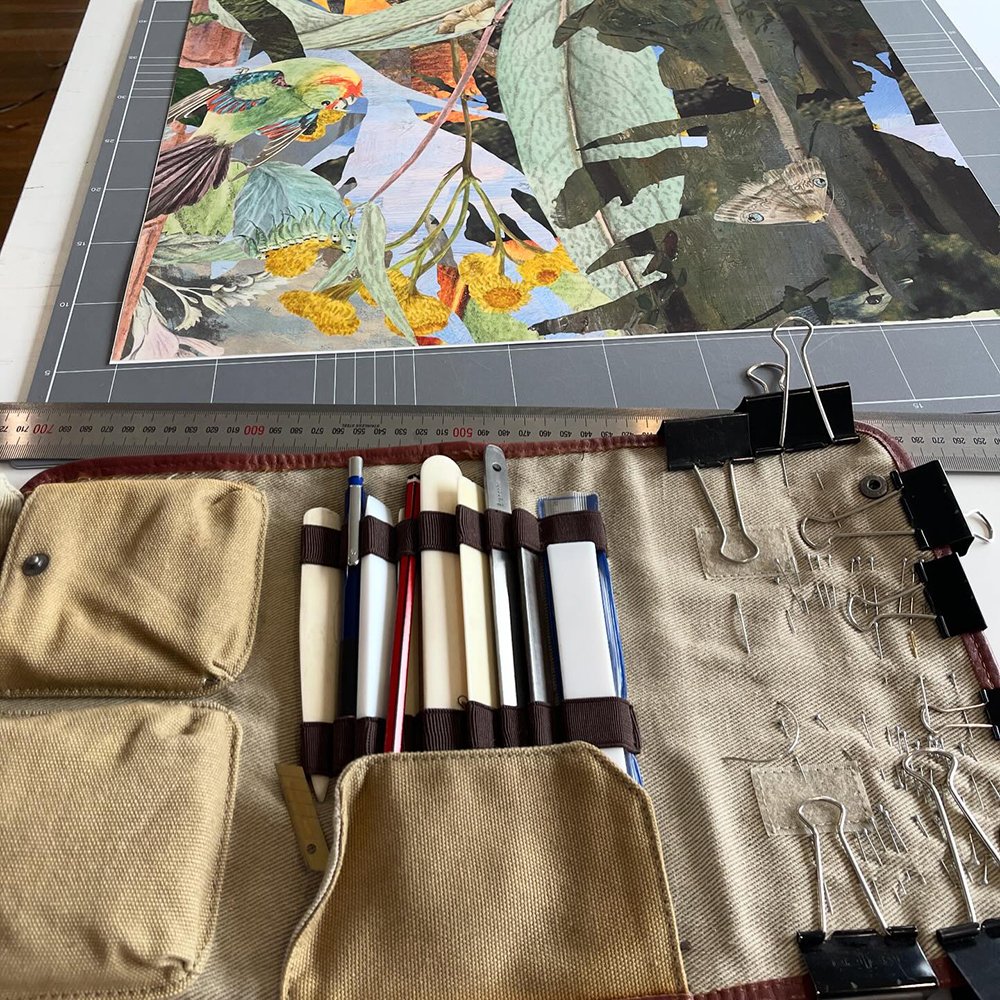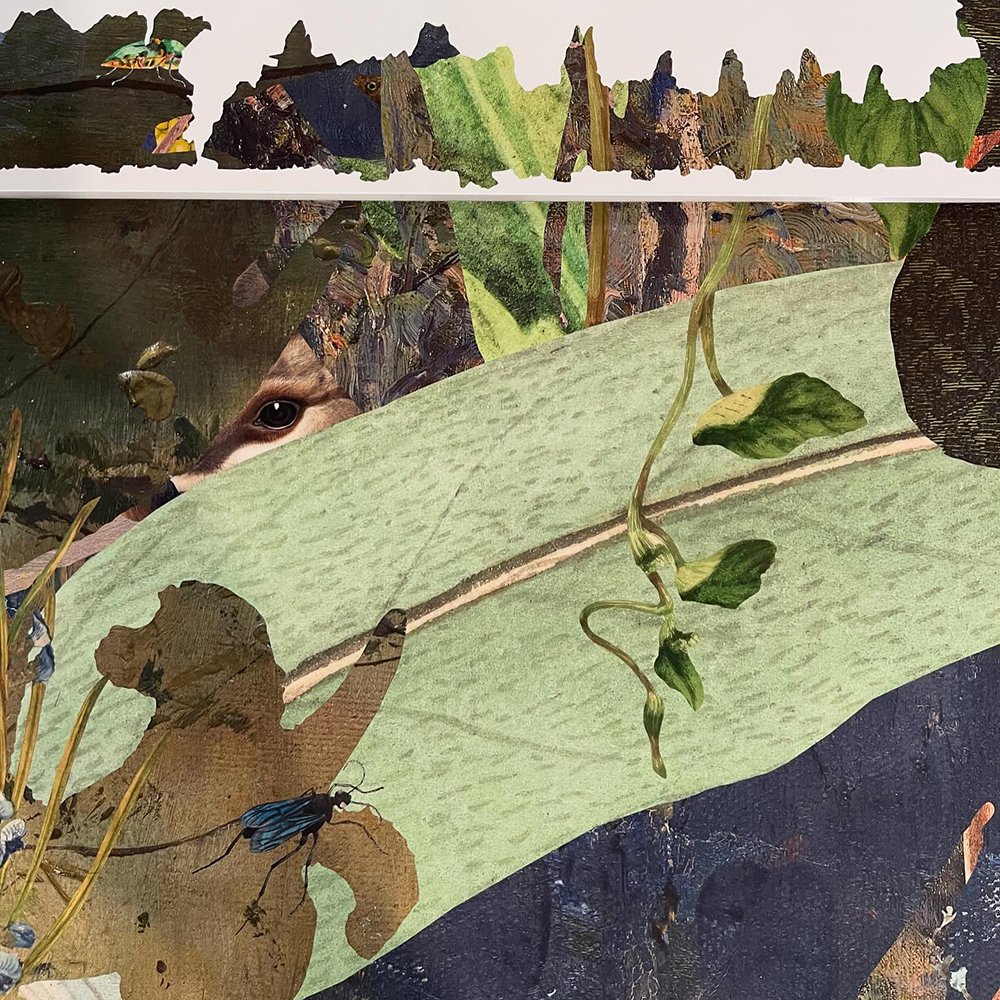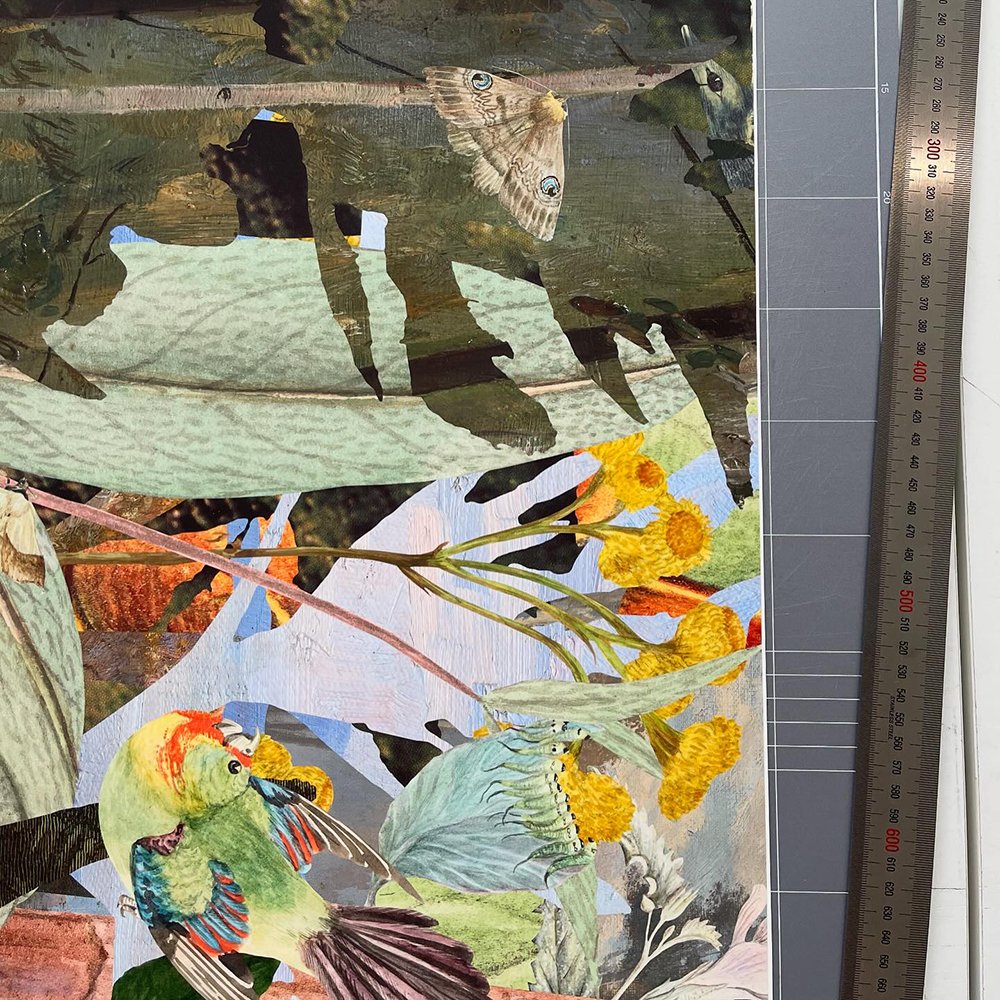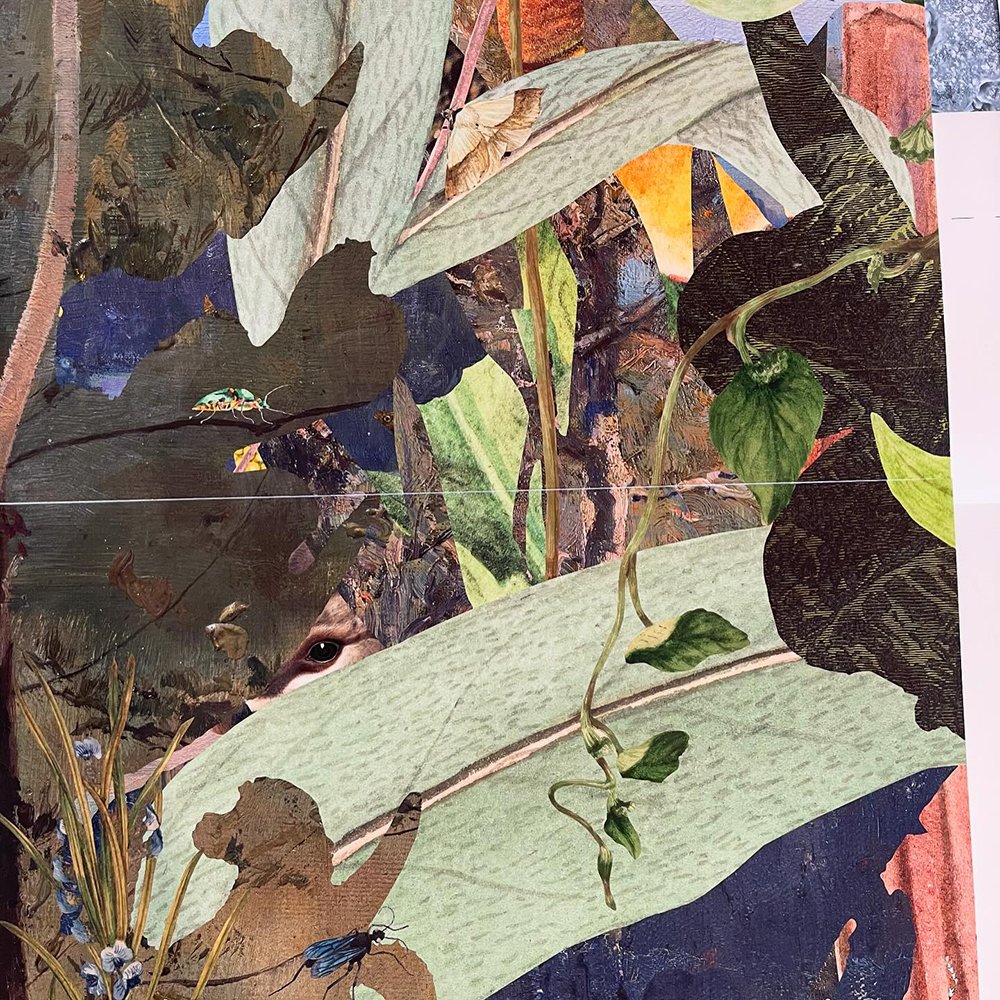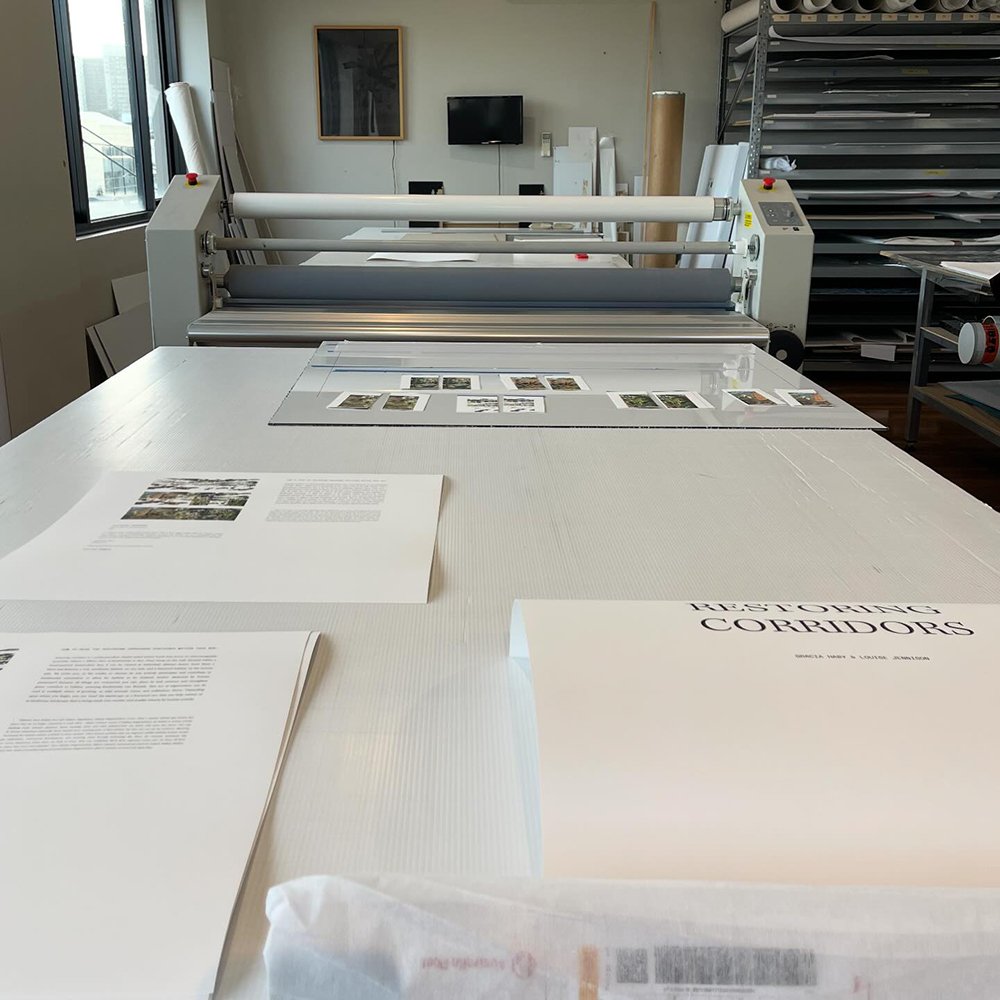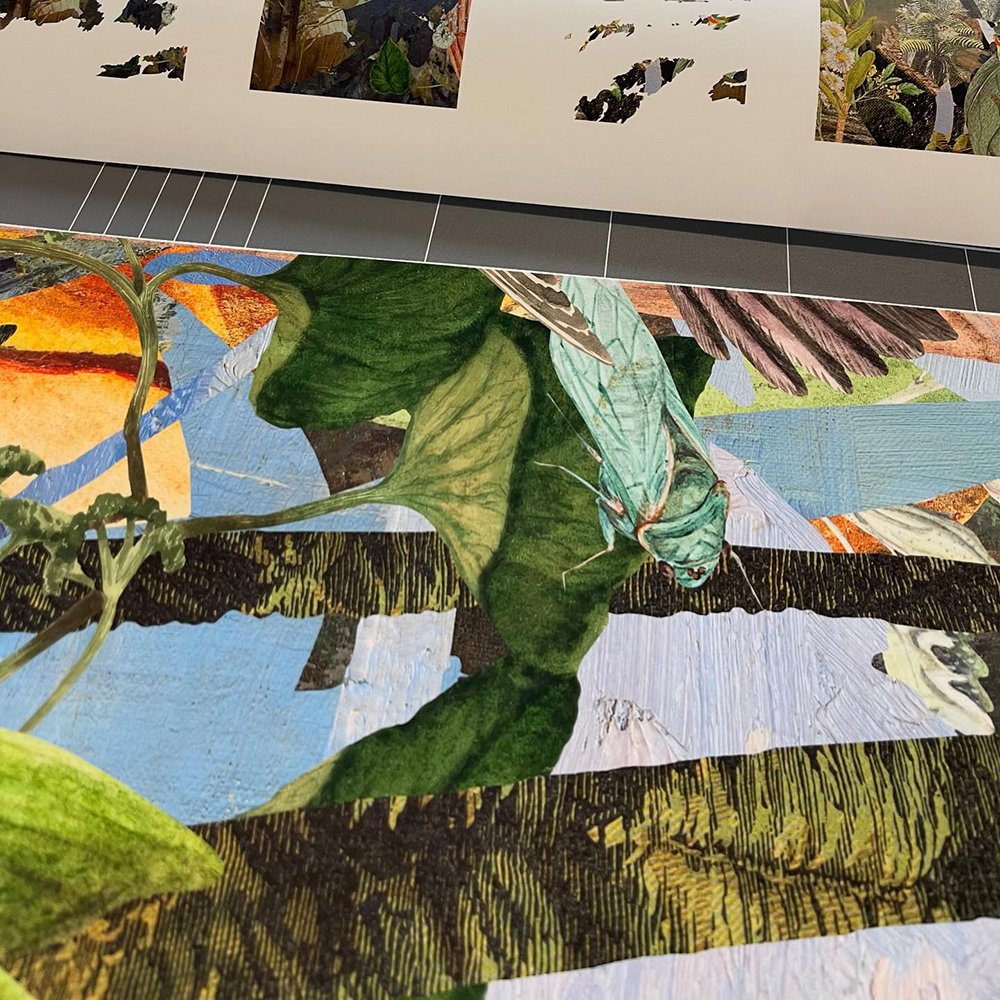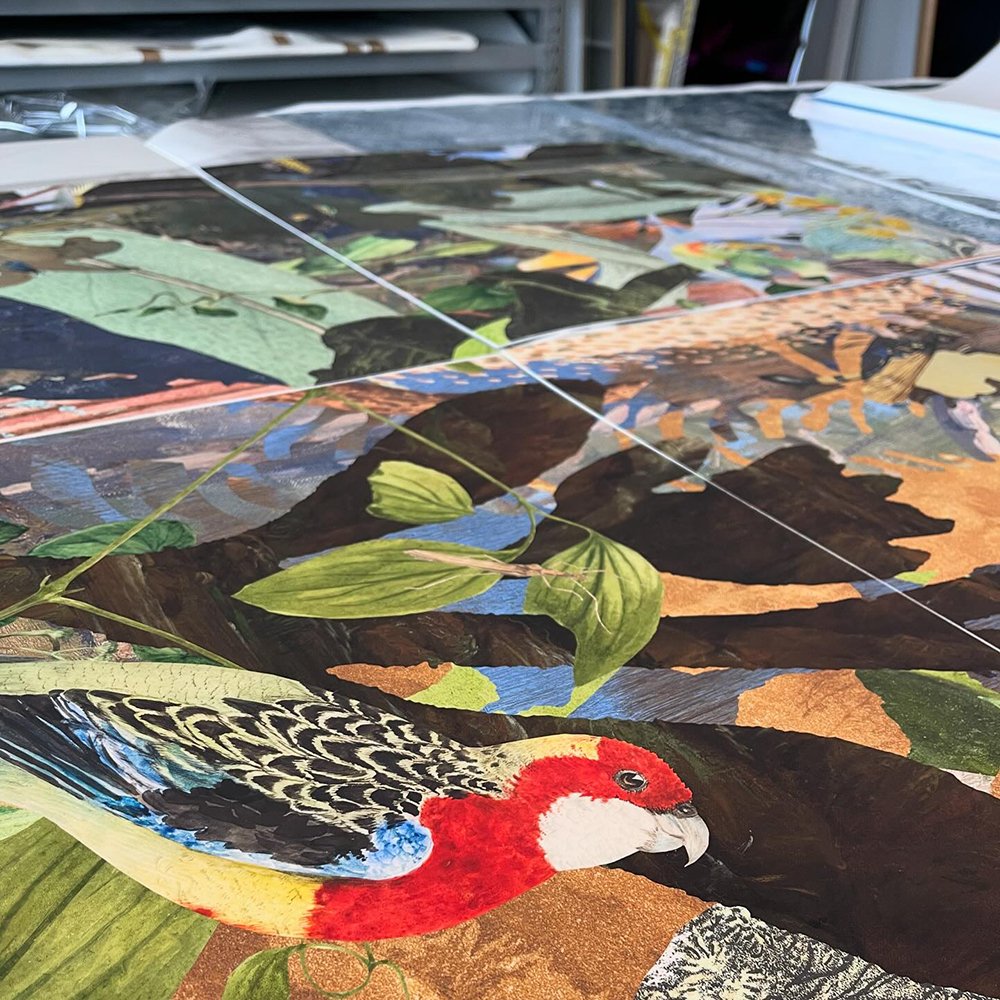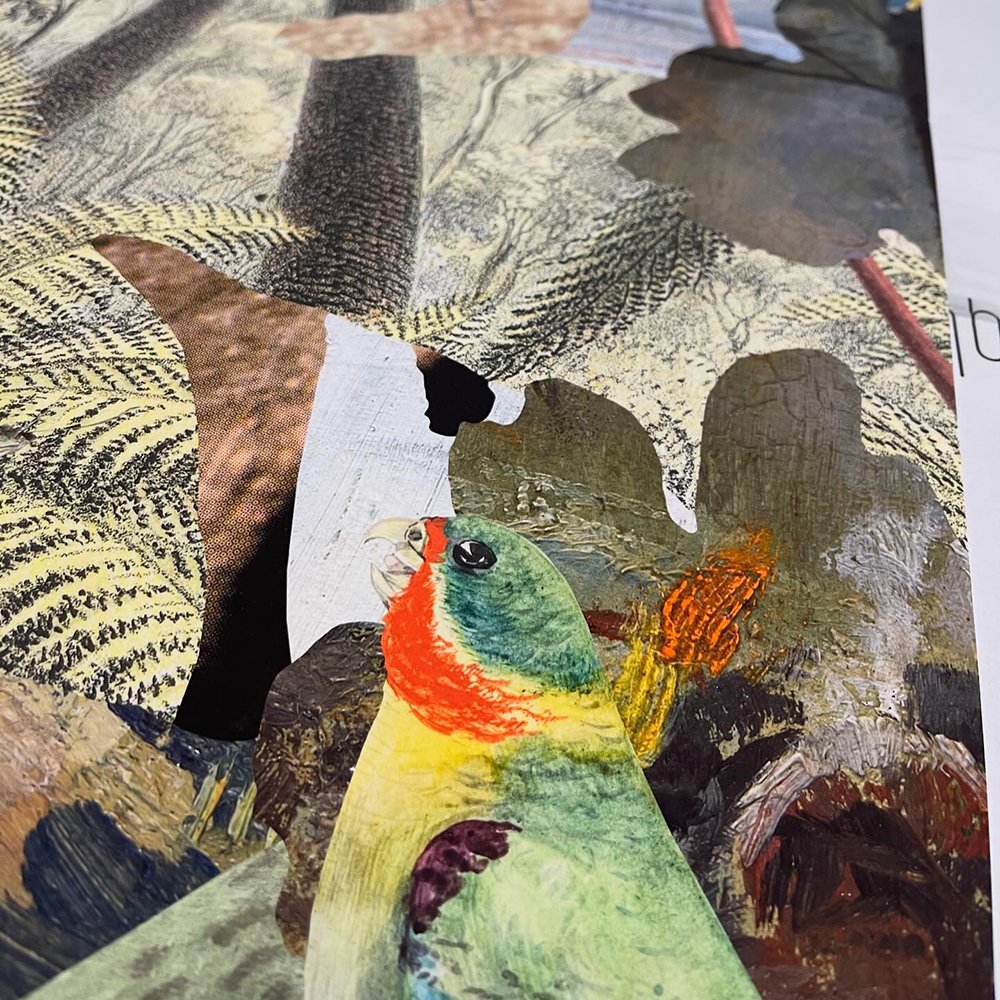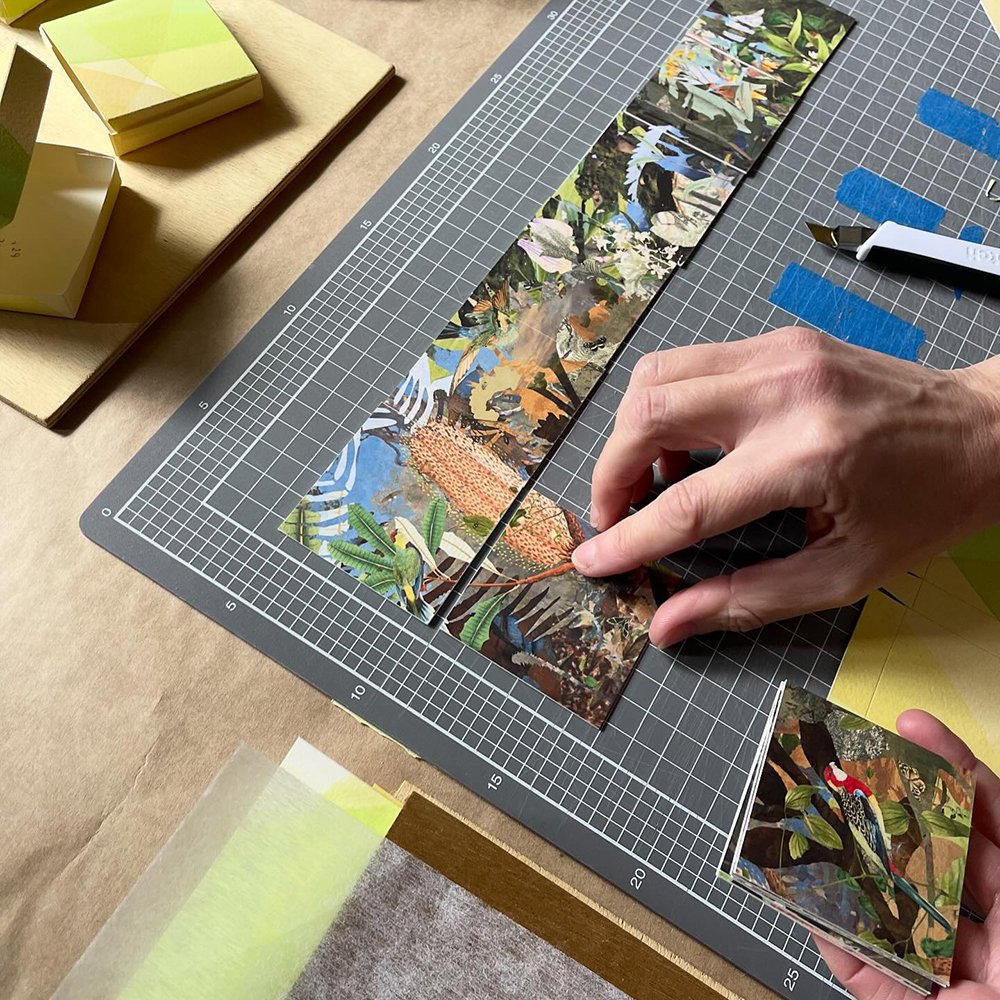RESTORING CORRIDORS
Because all things are connected, the reader can piece by leaf connect and strengthen green corridors to habitat, ensuring biodiversity can flourish.
A good soft release site is a connected site, text
Components within Restoring corridors
Gracia Haby & Louise Jennison
Restoring corridors
2024
12 double-sided image panel artists’ book with 5 text pages, inkjet print on Canson Arches 88 310gsm, with accompanying narrative, A good soft release site is a connected site (by Gracia Haby), housed in a box with original watercolour cover (by Louise Jennison) on Saunders Waterford Aquarelle 300gsm white hot-press paper
Printed by Arten
Edition of 4
Restoring corridors is a multi-panelled, double-sided artists’ book that forms an interchangeable, reversible 100cm x 300cm slice of biodiversity in flux, when hung on the wall. Housed within an original hand-painted watercolour box, it can be viewed as individual, abstract leaves. Within the box, each 50cm x 50cm leaf features a rich, biodiverse habitat, on one side, and a fractured habitat, on the reverse side.
We invite you, as the reader, to choose: do you actively participate and contribute to biodiversity restoration or allow for habitat to be isolated, further dissected by human pressures[i]? Because all things are connected, you can, piece by leaf, connect and strengthen green corridors to habitat, ensuring biodiversity can flourish. This act of regeneration can be read in multiple states of growing, as wild animals return and pollinators thrive. Depending upon where you begin, you can ‘read’ the landscape as a fractured one that you help restore, or as biodiverse landscape that is being made into smaller and smaller islands by human activity.
Restoring corridors was launched at the tenth Melbourne Art Book Fair, NGV International (Thursday 23rd of May – Sunday 26th of May, 2024).
Restoring corridors was one of 70 shortlisted works, from over 1000 entries, exhibited, in part, in the 2024 National Works on Paper exhibition, Mornington Peninsula Regional Gallery (Saturday 31st of August – Sunday 24th of November, 2024).
You can read the accompanying words to Restoring corridors, A good soft release site is a connected site, on Marginalia. And you can listen to us talking about Restoring corridors and wildlife at Bird’s Eye View: Perspectives on the Art and Science of Ornithology, presented as part of Melbourne Rare Book Week (Saturday 20th of July, 2024), in a recording of our conversation with Dr Karen Rowe, Rebecca Carland, and John Kean, at the Melbourne Museum.
Edition 2/4 was acquired by the Cynthia Sears Collection, Bainbridge Island Museum of Art, Washington, USA.
[i] “Different from habitat loss and habitat degradation, habitat fragmentation occurs when a species’ habitat gets broken into pieces that are no longer connected to each other. …Many common causes of habitat fragmentation are linked to human activity. Building roads, railways, pipelines, farms, housing, cities, and other infrastructure can divide wild areas into pieces. Not only do human settlements physically block animals from reaching parts of their habitat, but they also can use up resources, effectively decreasing the suitable habitat available to these animals. Other human activities that can fragment wildlife habitats include oil and gas exploration, commercial development, and diverting water through technology like dams. For example, freshwater fish face severe limitations when dams are built in rivers. They can completely block their migration routes and cut them off from areas where they once were plentiful.”
‘How Habitat Fragmentation Affects Animals’, International Fund for Animal Welfare (IFAW), 1st April, 2024, https://www.ifaw.org/au/journal/habitat-fragmentation-affects-animals, accessed 2nd April, 2024.
﹏
RELATED LINKS,
NGV MELBOURNE ART BOOK FAIR 2024
2024 NATIONAL WORKS ON PAPER
BIRD’S EYE VIEW: PERSPECTIVES ON ART AND THE SCIEND OF ORNITHOLOGY TALK AT MELBOURNE MUSEUM
RESTORING CORRIDORS COLLAGE WORKSHOP
RELATED POSTS,
DONE AND DUSTED, CUT AND GLUED
LOOK CLOSER
BEHIND THE SCENES
PIECE BY LEAF
MANY EYES
WILD TAILS
AND SOMETIMES, IF WE LET IT
OVERLAPPING
UNDERSTORY
OVERHEAD
BIRDS, WE’RE CURIOUS FANS
RESTORING CORRIDORS
BOOK FAIR HIGH SPIRITS
THERE BE BEETLES, AND THERE BE POSSUMS
TAKING FORM
LEAF CANOPY
TINY BUT WILD
WILDLINGS
A good soft release site is a connected site
…
Once you’ve found an available site that you have access to, the time of year (not too Goldilocks wintertime cold nor summertime hot), and the weather for the release needs to be taken into consideration as well, though this, coincidentally, can mean that the installing of several ringtail possum nesting boxes up high in the surrounding trees is easier for you as well (not too cold, not too hot, but just right). All of which gives the soft releasees the best chance, because it is all new to them, and this site needs to look after them as they will in turn look after the health of the site (a name, occasionally heard, for a ringtail possum is a ‘pepper shaker’; they fertilise the soil).
From the safety of the soft release site, the ringtails can form their cognitive maps, as they spatially orientate themselves. As they familiarise themselves with their environment, all of these considerations and opportunities (of which we’ve only lightly touched upon), increase their chances of survival. For while things vary, depending upon the animal species being soft released, for the main, a good soft release site needs to be connected to something larger than itself. It cannot be an island, if it is to work. It needs to be connected to a larger tract of land. To national parkland or a nature reserve, or to a green corridor which leads, leaf by rock, to parkland or a reserve.
…
You can read the full Restoring corridors text on Marginalia.
Restoring corridors features elements from several collections, the National Gallery of Victoria (NGV), State Library of New South Wales, J P Getty Museum (Los Angeles, USA), and Rijksmuseum (Amsterdam, the Netherlands).
Can you locate any of the following?
NGV
Eugene von Guérard
Austria 1811– England 1901, Italy 1830–38, Germany 1838–52, Australia 1852–82, Germany and England 1882–1901
Ferntree Gully, Dandenong Ranges, Victoria
plate 13 from Eugène von Guérard’s Australian Landscapes, published by Hamel & Ferguson, Melbourne, 1866–68
colour lithograph
32.8 × 51.4 cm (image) 50.8 × 69.0 cm (sheet)
NASA, Washington, D.C. manufacturer
United States est. 1958
Lunar crater Schmidt near Sea of Tranquility
1969
type C photograph
39.0 × 48.8 cm (image and sheet)
Henri van Raalte
England 1881 – Australia 1929, arrived Australia 1910
Hillside and stream
c. 1920
aquatint and drypoint printed in orange-brown ink
ed. 16/30
33.0 × 35.5 cm (plate) 39.2 × 45.2 cm (sheet)
Tom Roberts
England 1856 – Australia 1931, arrived Australia 1869, England 1881–85, 1903–19
She-oak and sunlight
1889 Melbourne
oil on wood panel
30.4 × 30.1 cm
The artists’ camp
1886 Box Hill, Victoria
oil on canvas
46.0 × 60.9 cm
Arthur Streeton
Australia 1867–1943, England 1897–1919
The river
1896 Sydney
oil on canvas
61.1 × 81.2 cm
‘The purple noon’s transparent might’
1896 Sydney
oil on canvas
123.0 × 123.0 cm
Our untidy bush
1927
oil on canvas
76.6 × 64.0 cm
The valley from Olinda top ‘Let the Rose glow intense and warm the air’ – Keats
1925 Melbourne
oil on canvas
63.8 × 101.6 cm
J P Getty Museum
Joris Hoefnagel (Flemish, / Hungarian, 1542–1600), and Georg Bocskay (Hungarian, died 1575)
Terrestrial Mollusk, Poppy Anemone, Terrestrial Mollusk, Poppy Anemone, and Crane Fly
1561–1562
illumination added 1591–1596
Leaf: 16.6 x 12.4 cm
From Mira calligraphiae monumenta (Group Title)
State Library of New South Wales
Natural history and botanical drawings, ca. 1849–1872
[attributed to Louisa Atkinson (1834–1872)]
Part of Atkinson and Cosh family pictorial material, ca. 1842–1973
60 drawings — pencil, ink, wash, and watercolour drawings
3 photographs
The collection includes views of Oldbury, Sutton Forest, Mount Keira coal mines, studies of Australian animals and birds, and botanical drawings.
Dendrobium Adae, commonly known as the slender cane orchid from:
Unpublished drawings of Australian orchids, ca. 1879–1891
R. D. Fitzgerald
78 drawings — watercolour and pencil, chiefly 50 x 34 cm
1 typescript — 22 pages, foolscap
The drawings feature various orchids and cross-sections of the flower and plant with titles and in some cases, brief descriptions. With an enumeration of the drawings by Dr R. S. Rogers of Adelaide, dated 1933.
[Botanical drawings of mainly Australian plants], ca. 1852–1896
Helena Forde (1832–1910)
Part of Helena Scott pictorial and manuscript collection, 1864–1889
1 album (ca. 155 watercolour, pencil and ink drawings), 42 x 34.5 cm
Titled from spine.
Page i, "A list of Mrs Helena Forde's Paintings of Australian and other plants botanically arranged"
Some drawings are signed, "H. Forde" or initialled "HS" or "HF"
Burrowing bettong (Bettongia lesueur Graii)
Short-tailed wallaby (Halmaturus brachyurus)
and a Hascolomys wombat from:
The mammals of Australia, 1863
John Gould (1804–1881)
London: Printed by Taylor and Francis
Published by the author
3 volumes: colour illustrations, 57 cm
Stephania hernandiaefolia and other specimens from:
Botanical sketches of Australian plants, 1803–1806
John Lewin (1770–1819)
265 drawings, on 257 sheets, hinged into booklets — 38–38.5 cm – 25–28 cm. approx. — watercolour, pen, ink and pencil
Acacia longifolia and other specimens from:
Botanical sketches and drawings, 1893–1897
Edward William Minchen (1852–1913)
1 album (195 sketches, 1 photograph), 39.5 x 31 cm
”26 Natural size”, un-named flowering plant (Watling 419/354), watercolour on paper from:
Volume 05: Drawings of plants of New South Wales
TAL & Dai-ichi Life Derby collection of natural history watercolours, 1790s, compiled by Aylmer Bourke Lambert; acquired by the 13th Earl of Derby
Thomas Watling (born 1762)
William Paterson (1755–1810)
1 album (approximately 259 drawings) — drawings 31.1 x 19.5 cm and smaller., album 33 x 21.4 cm — watercolour
Museums Victoria: Bird’s Eye View, YouTube
Bird’s Eye View: Perspectives on the Art and Science of Ornithology
Presented as part of Melbourne Rare Book Week
Museum Theatre, Melbourne Museum
Saturday 20th of July, 2024
Below the canopy, find a patch to pause, rewind to another time, and press play. For those who could not make it to Bird’s Eye View: Perspectives on the Art and Science of Ornithology, presented as part of winter’s Melbourne Rare Book Week, you can now watch the recording of our conversation with Dr Karen Rowe, Rebecca Carland, and John Kean, at the Melbourne Museum.
A message, a Point of Connection, a Gesture to Where We Are
From Mornington Peninsula Regional Gallery’s National Works on Paper 2024 catalogue, pp. 10–14
Kelly Fliedner
Writer and curator, Boorloo Perth
…
Interwoven with this are works that use the natural environment as a recurring motif, ones where landscape rather than country come to the fore. artists here present the bush, coastlines, rocks and birds, and our relationship with nature as a whole. This is done through various media and metaphors, such as tides and waves symbolising human experience and forces of change greater than our own that are beyond history, as it were. this is nature as dynamic, transformational, powerful, with artists sharing in that.
Working in this way we have Gracia Haby and Louise Jennison’s Restoring corridors that emphasises biodiversity restoration, encouraging viewers to actively participate in repairing habitats.
…
The invitation that these works on paper offer is one of intimacy and depth. For all their difference in content and form, the medium itself is one that seems connected to a richness and tradition beyond our present. In that space, at once humble and direct and caring, we see a counterpoint to the flashy, isolated, momentary quality of the digitised life. It is a good thing that paper reminds us of our very humanity, that it knits together the diversity of where we are, that it travels to us with stories of where it is from and what it has done. This is, of course, grounded in our local reading of Country, of indigeneities that span the continent, all of which are expressions that run alongside paper as well. That this year’s award demonstrates so clearly what we have always known — that art matters beyond itself — is a reminder that there is still hope and justice in a world as cruel and unjust as ours. For that alone, we can only be grateful as witnesses to an art as resolute as time itself.









